same but different
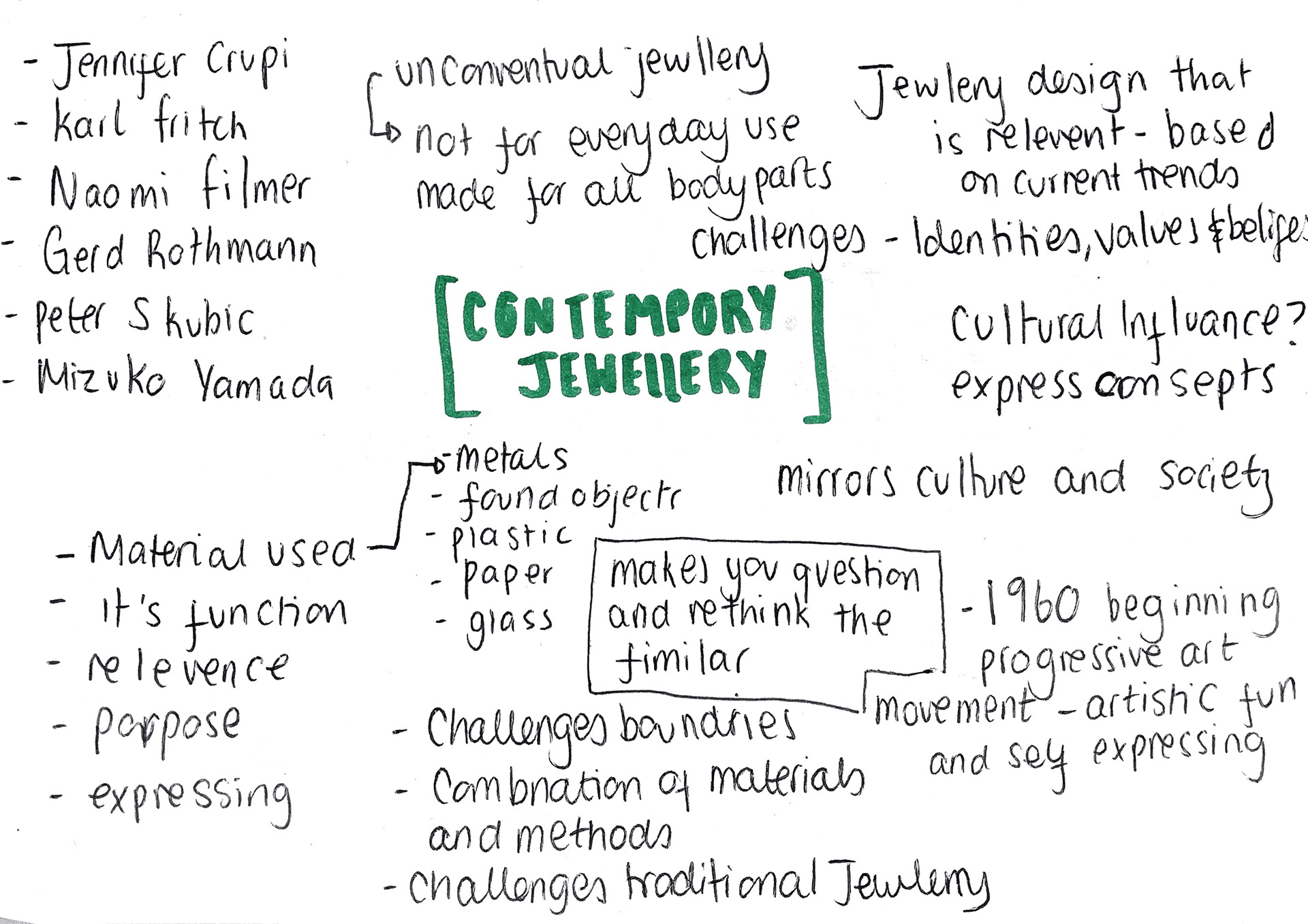
jennifer crupi
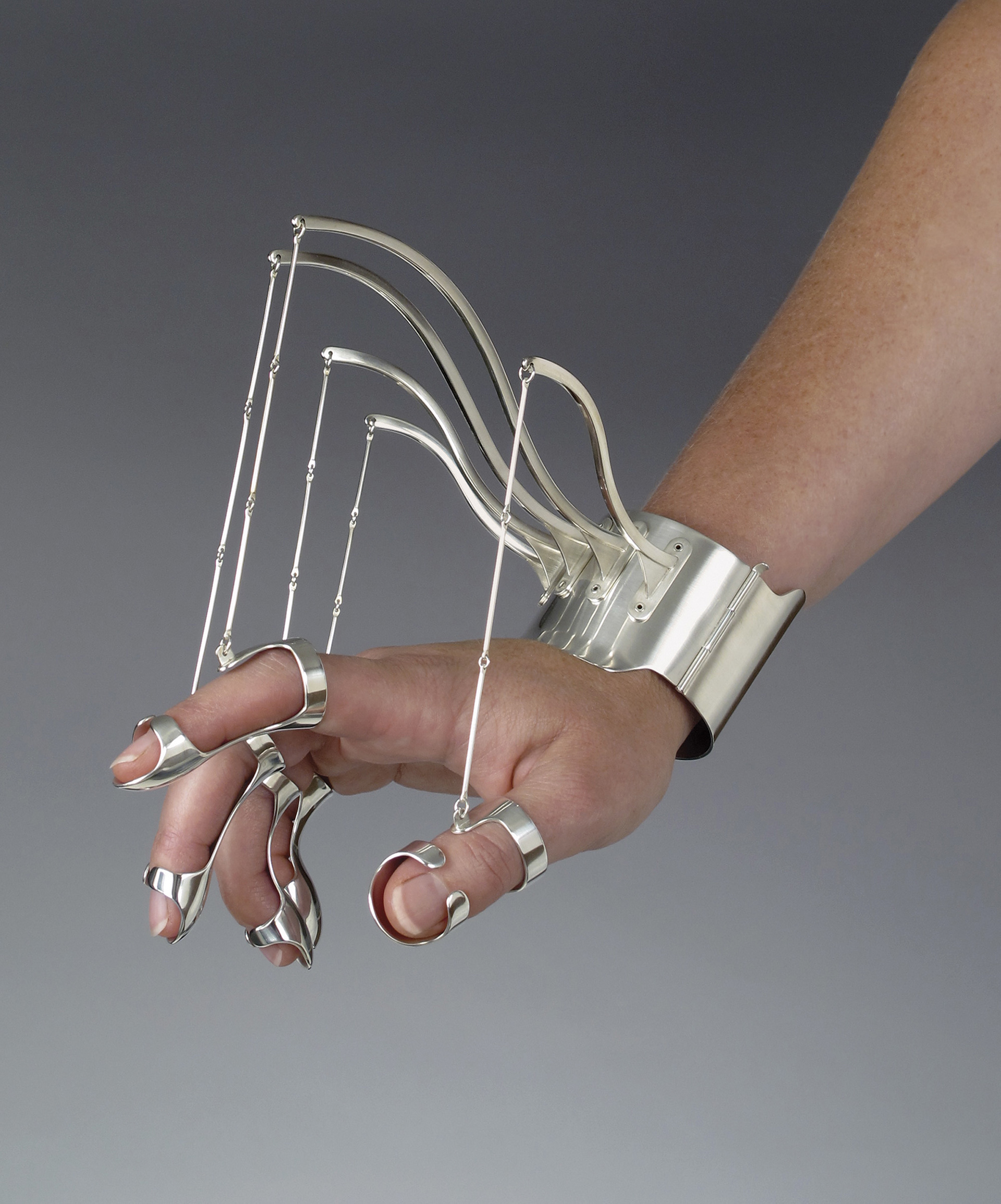
ORNAMENTAL HANDS
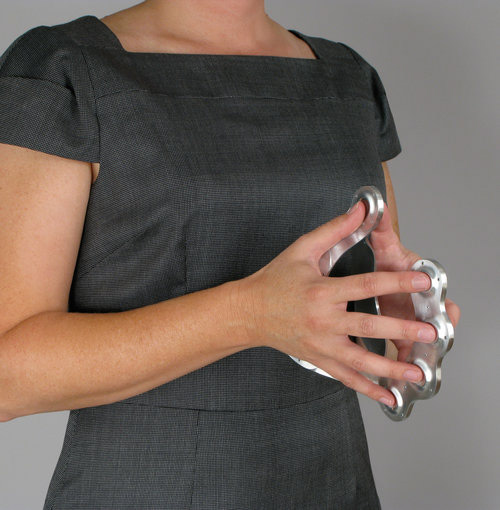
POWER GESTURE
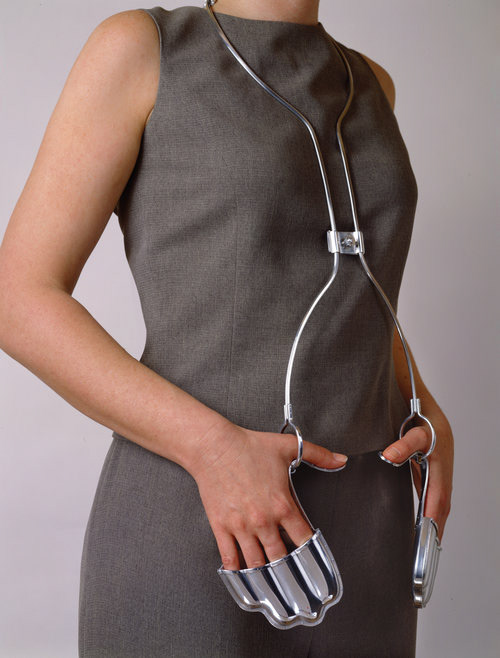
UNGUARDED GESTURES
Jennifer's work addresses the ways of communicating with each other visually, through body language. These handcrafted, interactive objects point out various gestures or postures and their associated meanings, in the hope viewers will realise the importance of how our bodies speak for us.
mizuko yamada
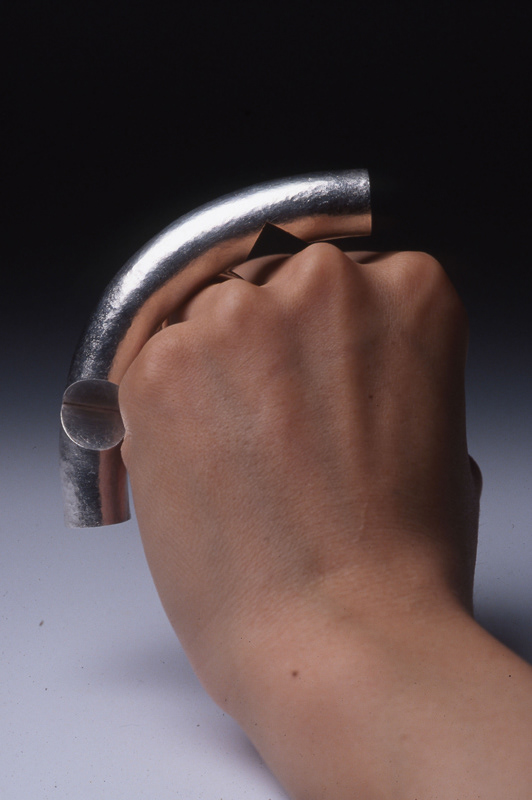
リング ring 2003
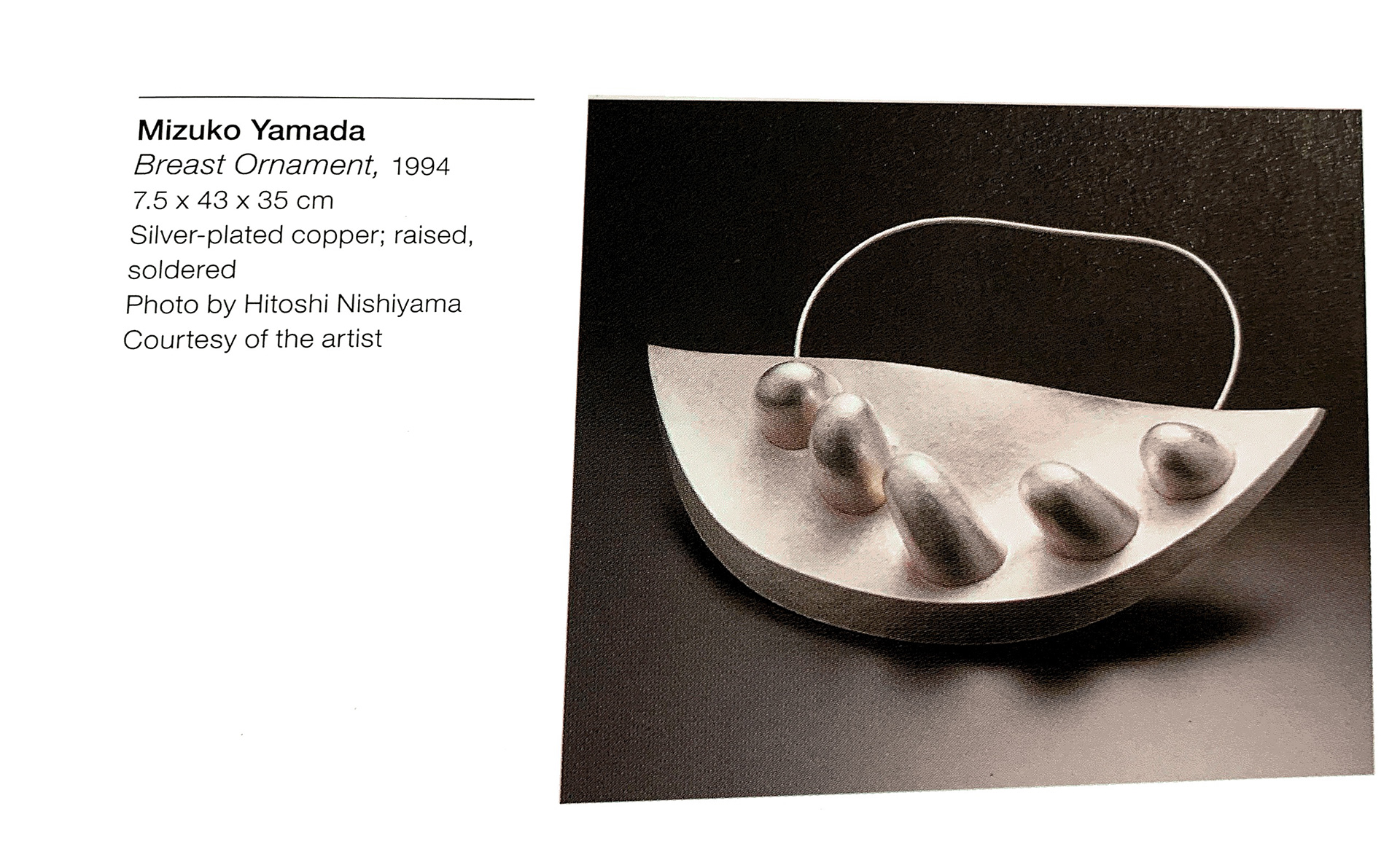
breast ornament 1994
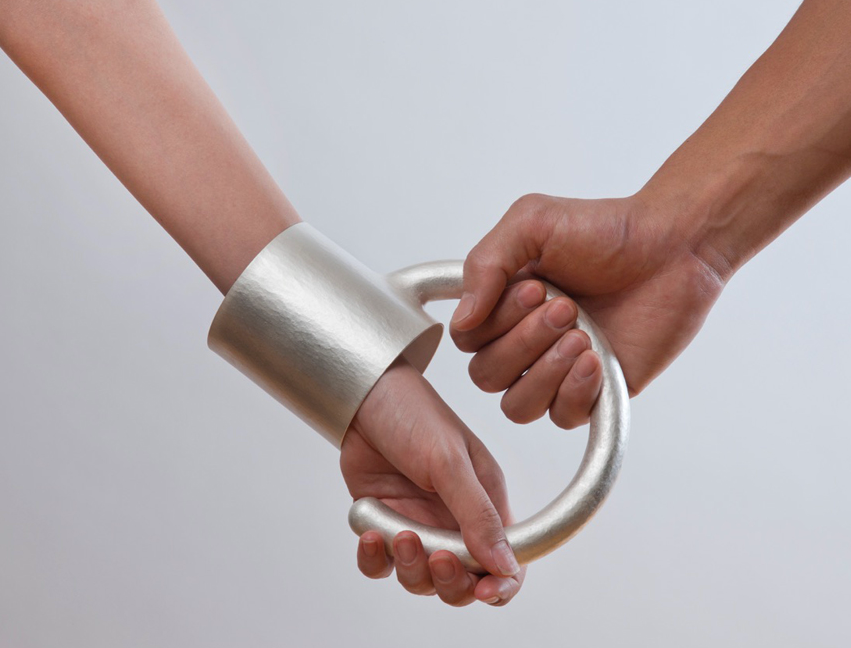
jewellery to assist contact’ bangle
yamada is a Japanese contemporary jeweller inspired by the materials, she uses mainly metal, studying metal as a material for most of her practicing years is her basic inspiration. along with her interest in the organic forms of humans, animals and plants. her work also centres around The five senses these being her main inspiration her jewellery is made to explore, exploit and stimulate these inspiration.
sam tho duong

necklace, 2012, plastic jogurt bottles, onyx

Frozen, 2018, necklace; silver, freshwater pearls, nylon, price on request Sam Tho Duong, Look, 2015, brooch; silver, freshwater pearls, nylon, €5350 Sam Tho Duong, Look, 2015, brooch; silver, freshwater pearls, nylon, €5350 Sam Tho Duong, Look, 2015, brooch; silver, freshwater pearls, nylon, €2100 Sam Tho Duong, Look, 2015, brooch; silver, freshwater pearls, nylon, €2100 Sam Tho Duong, Look, 2020, ring; silver, freshwater pearls, nylon, €1360 Sam Tho Duong, Look, 2020, ring; silver, freshwater pearls, nylon, €1360 Sam Tho Duong, Look, 2020, ring; silver, freshwater pearls, nylon, €1840 Sam Tho Duong, Look, 2020, ring; silver, freshwater pearls, nylon, €1840 Sam Tho Duong, Look, 2019, ring; silver, freshwater pearls, nylon €1940 Sam Tho Duong, Look, 2019, ring; silver, freshwater pearls, nylon €1940 Sam Tho Duong, A&T, 2019, brooch; silver, freshwater pearls, nylon, €1260 Sam Tho Duong, A&T, 2019, brooch; silver, freshwater pearls, nylon, €1260 Sam Tho Duong, A&T, 2019, brooch; silver, freshwater pearls, nylon, €1260 Sam Tho Duong, A&T, 2019, brooch; silver, freshwater pearls, nylon, €1260 Sam Tho Duong, A&T, 2019, brooch; silver, freshwater pearls, nylon, €1260 Sam Tho Duong, A&T, 2019, brooch; silver, freshwater pearls, nylon, €1260 Sam Tho Duong, A&T, 2019, brooch; silver, freshwater pearls, nylon, €1260 Sam Tho Duong, A&T, 2019, brooch; silver, freshwater pearls, nylon, €1260 Sam Tho Duong, A&T, 2019, brooch; silver, freshwater pearls, nylon, €1260 Sam Tho Duong, A&T, 2019, brooch; silver, freshwater pearls, nylon, €1260 Sam Tho Duong, Frozen, 2018, necklace; silver, freshwater pearls, nylon, price on request Sam Tho Duong, Frozen, 2018, necklace; silver, freshwater pearls, nylon, price on request Sam Tho Duong, Look, 2015, brooch; silver, freshwater pearls, nylon, €5350 Sam Tho Duong, Look, 2015, brooch

ginger object 2002, ginger brooch 2007
sam tho duong works with unusual botanical materials to create captivating jewellery. creating delicate brooches and jewellery for the body and the neck created in a range of materials from silver and actimel bottles, to cherry stones and freshwater ‘rice grain’ pearls. one project called ginger inspired by an exploration of his family roots. from Vietnam though he has lived in Germany since he was a teenager, he work with the basic root formation and then develop this through the use of colour and stones. the use of an everyday food substance being developed into a material is something i find very intriguing and would like to explore in my work using an unexpected material which holds a lot of significance.
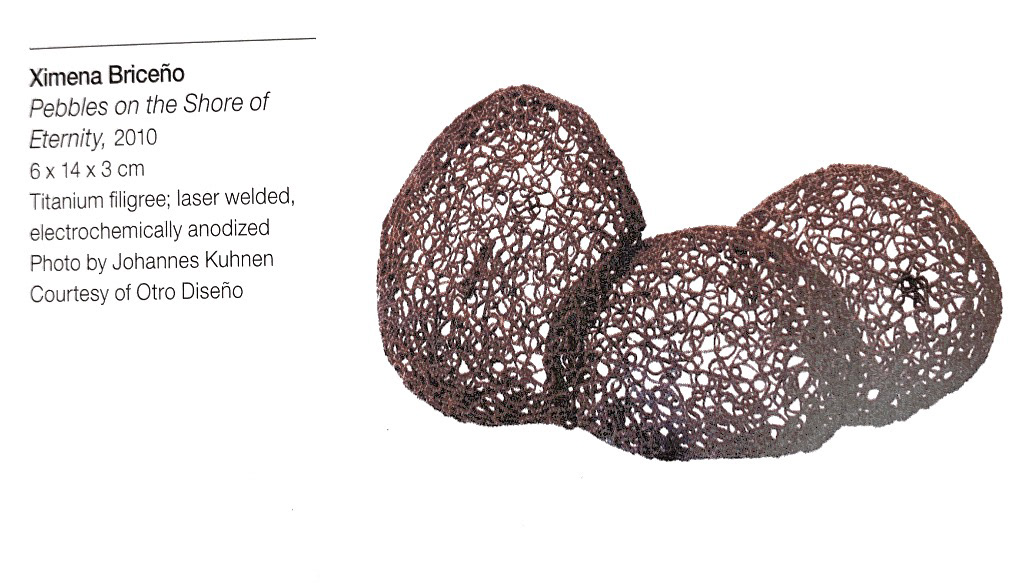

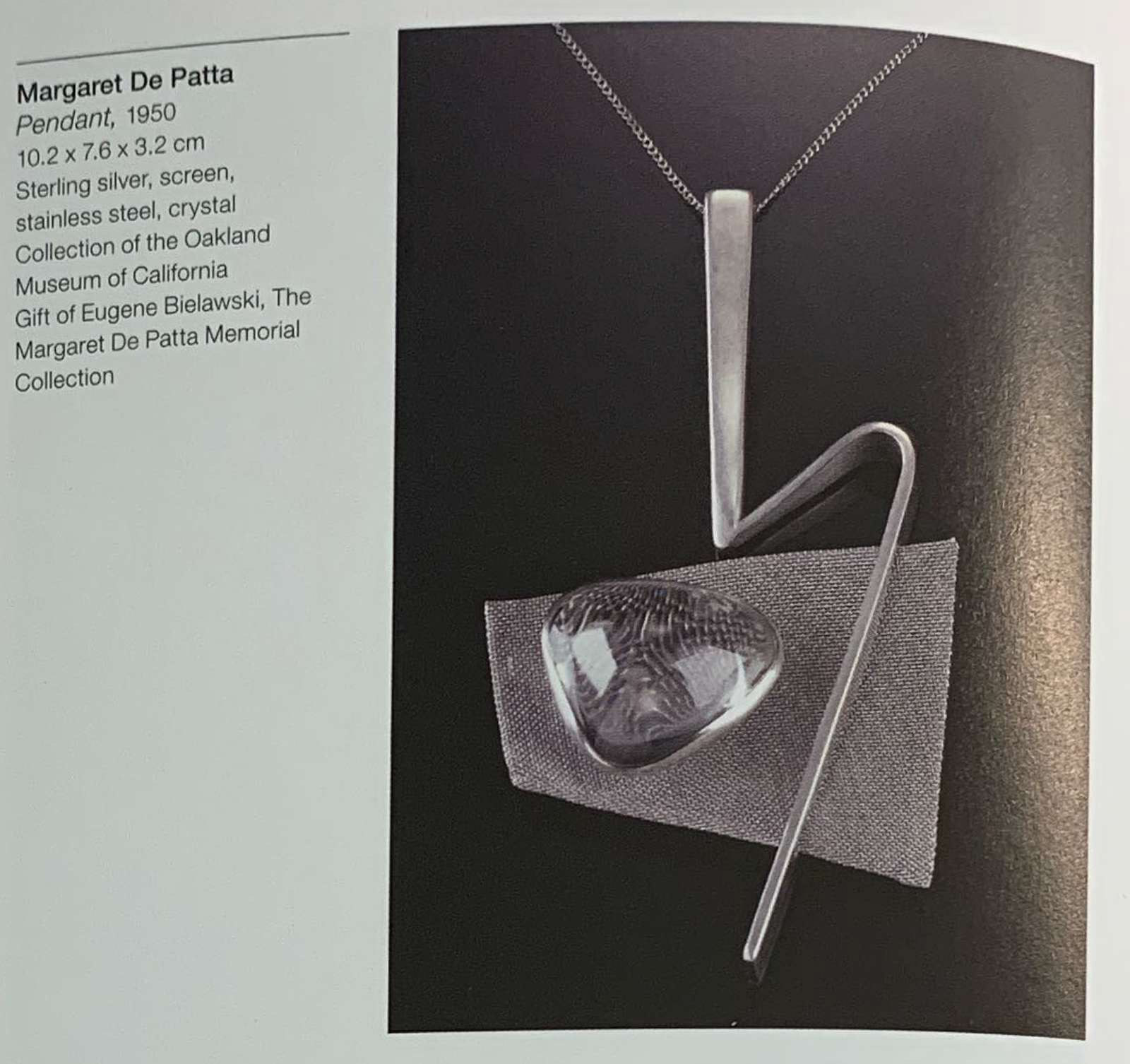
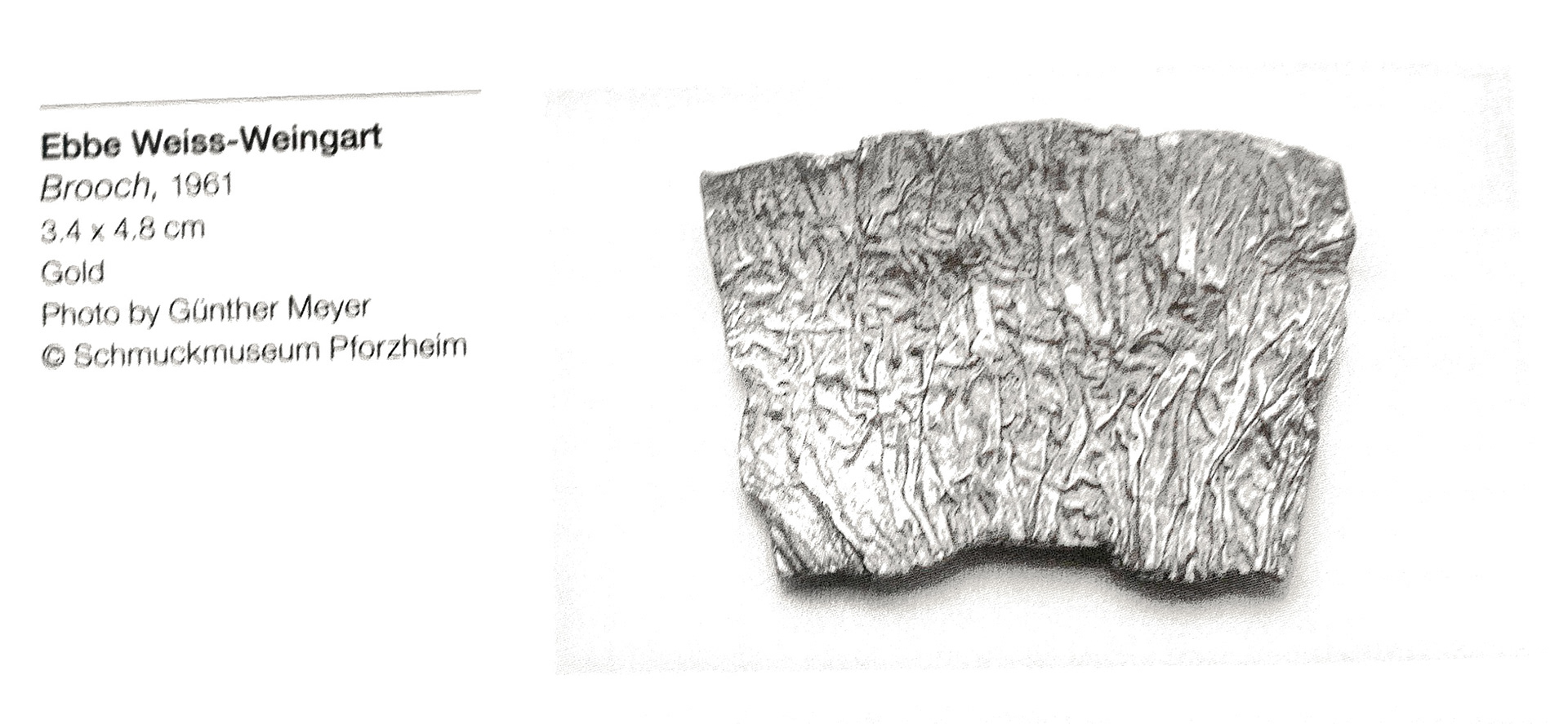

FOR THIS PROJECT I WANTED TO look at forms in nature, I went on many walks capturing natural forms that surrounded me. looking in to the patterns, textures and characters of the natural forms that are around us. I really enjoyed this exploration and found my inspirations from the collection of my photos and see it as a good starting point for this project giving me the foundations, to progress I will look at these photos individually and look into there personalities and from there develop ideas inspired by this collection of photos.
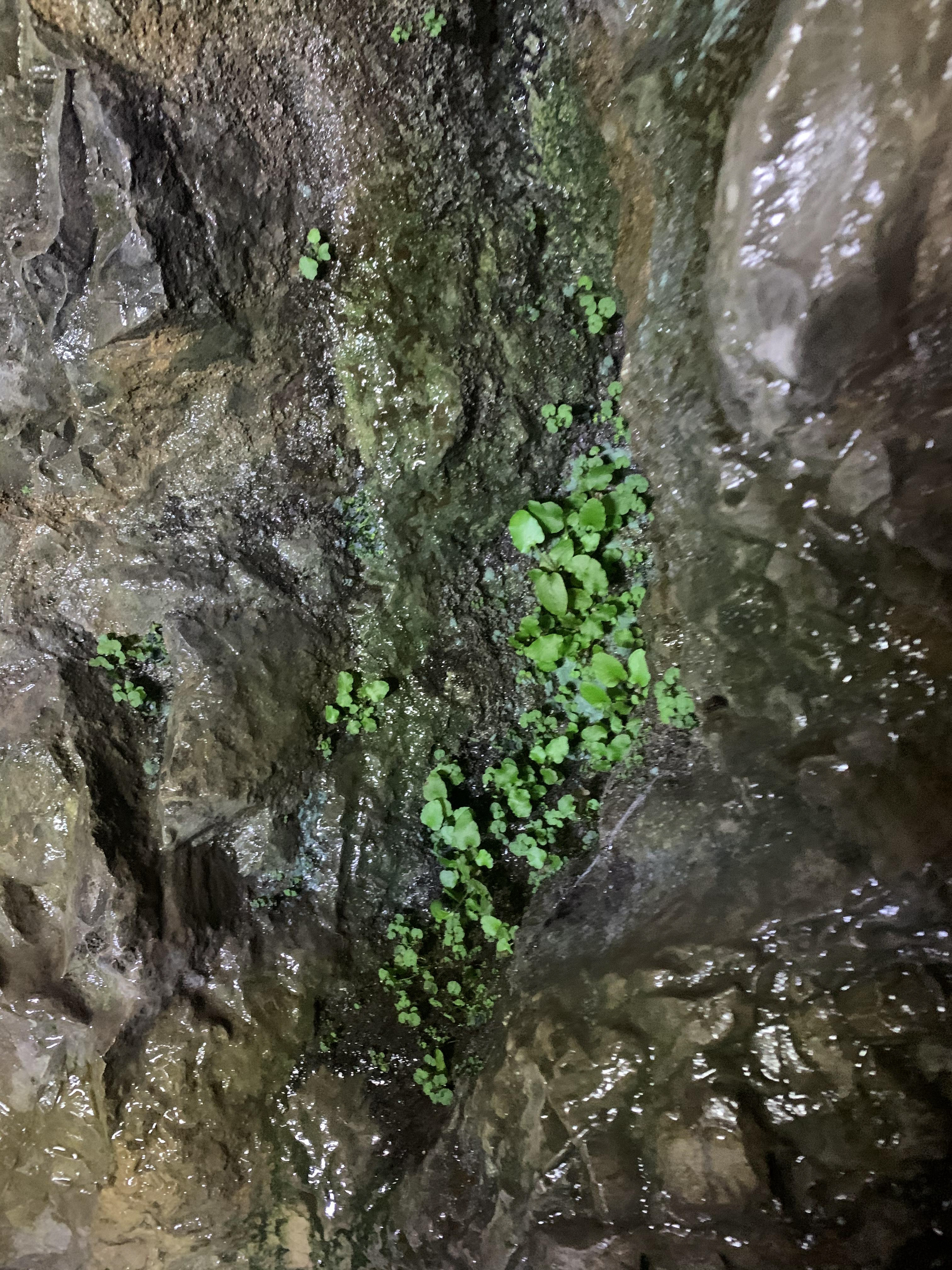
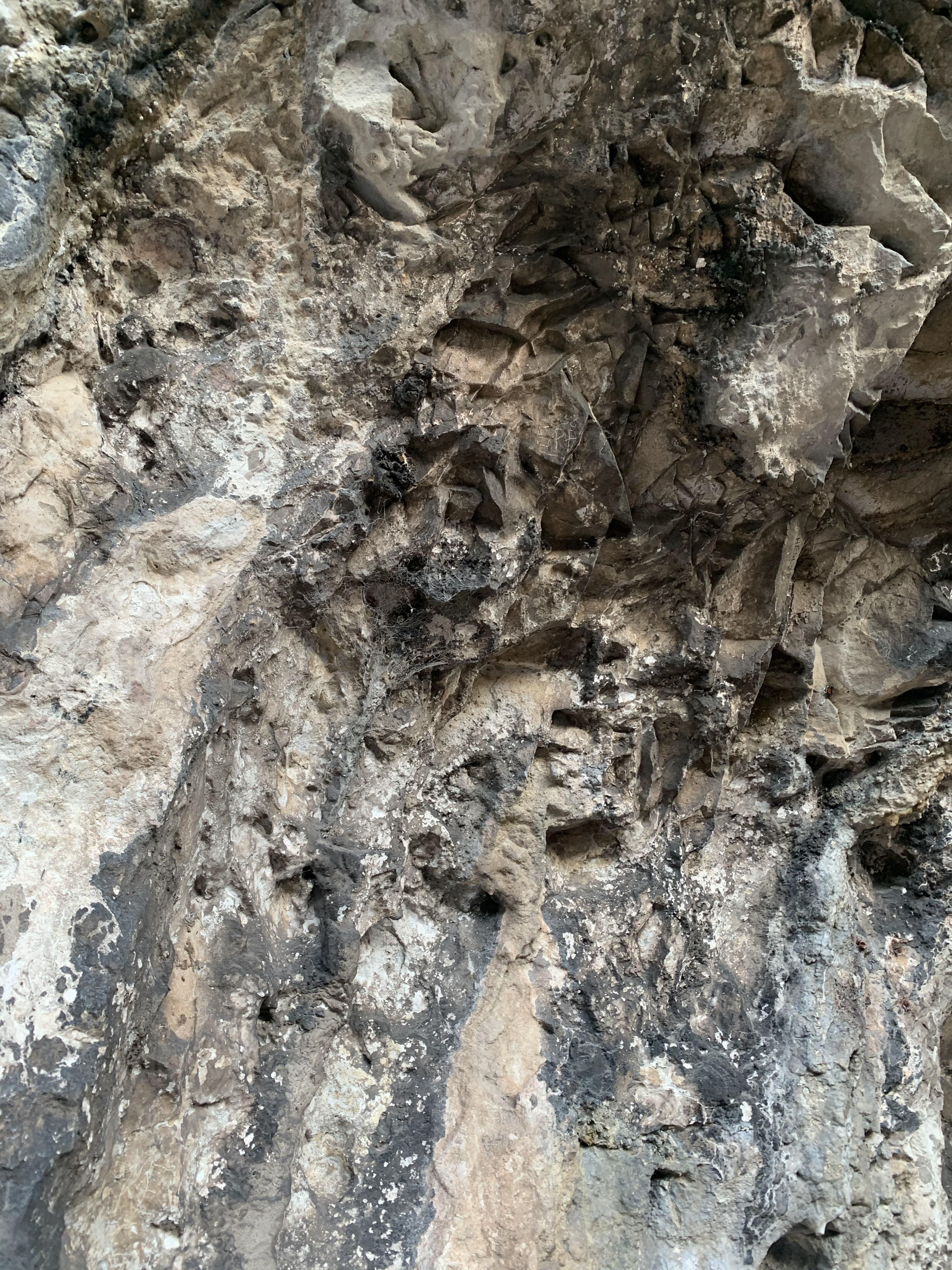
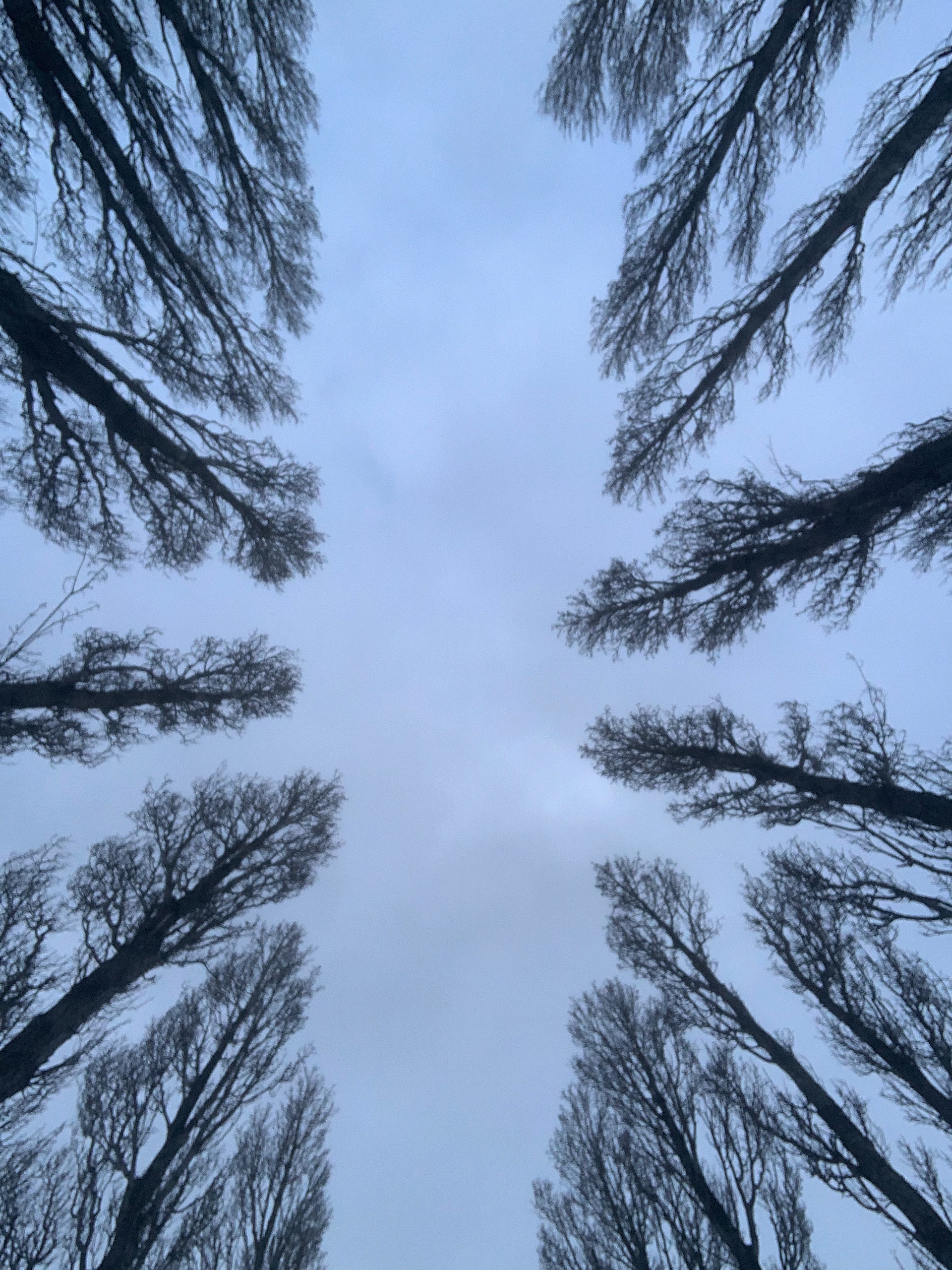

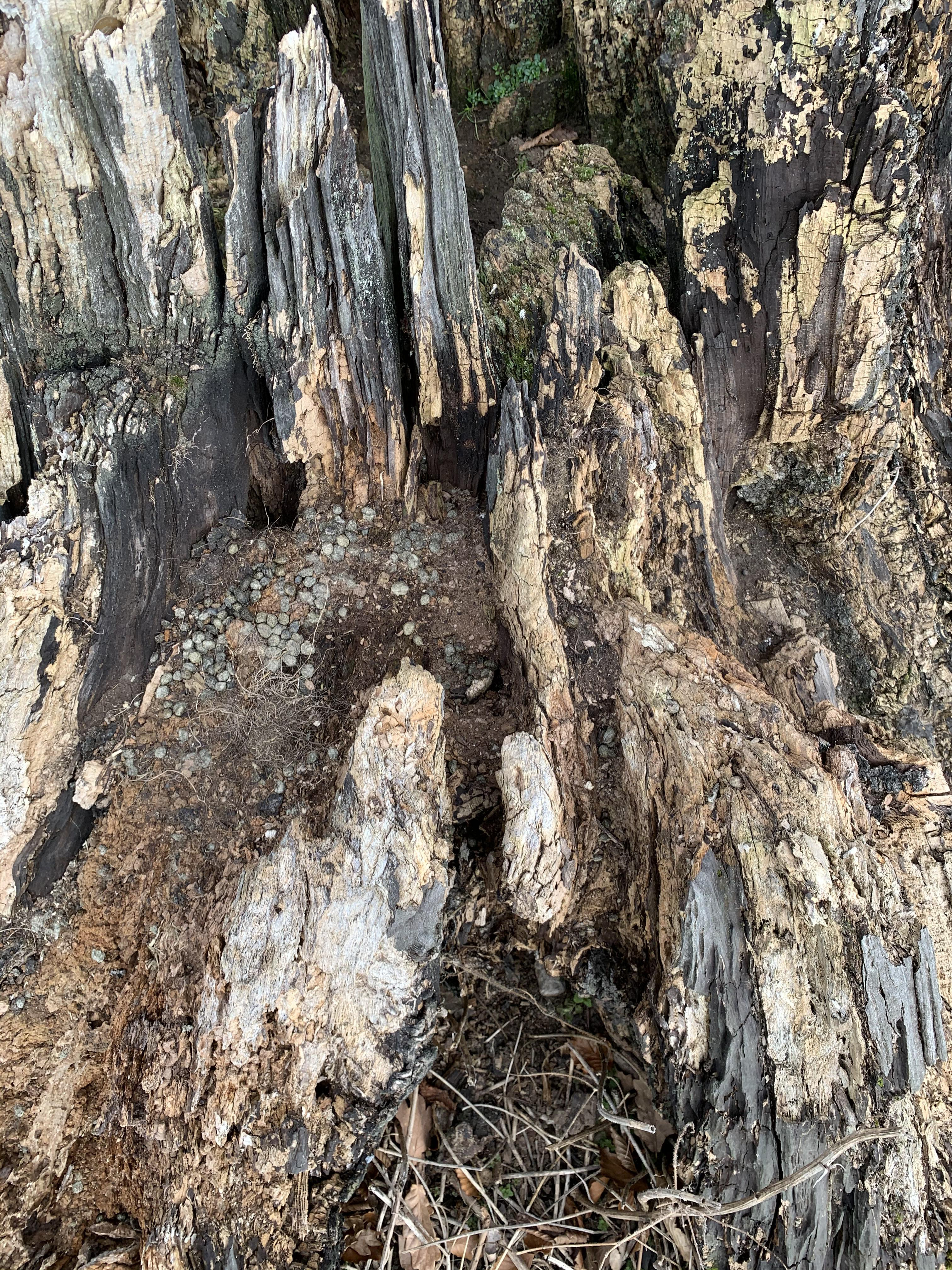


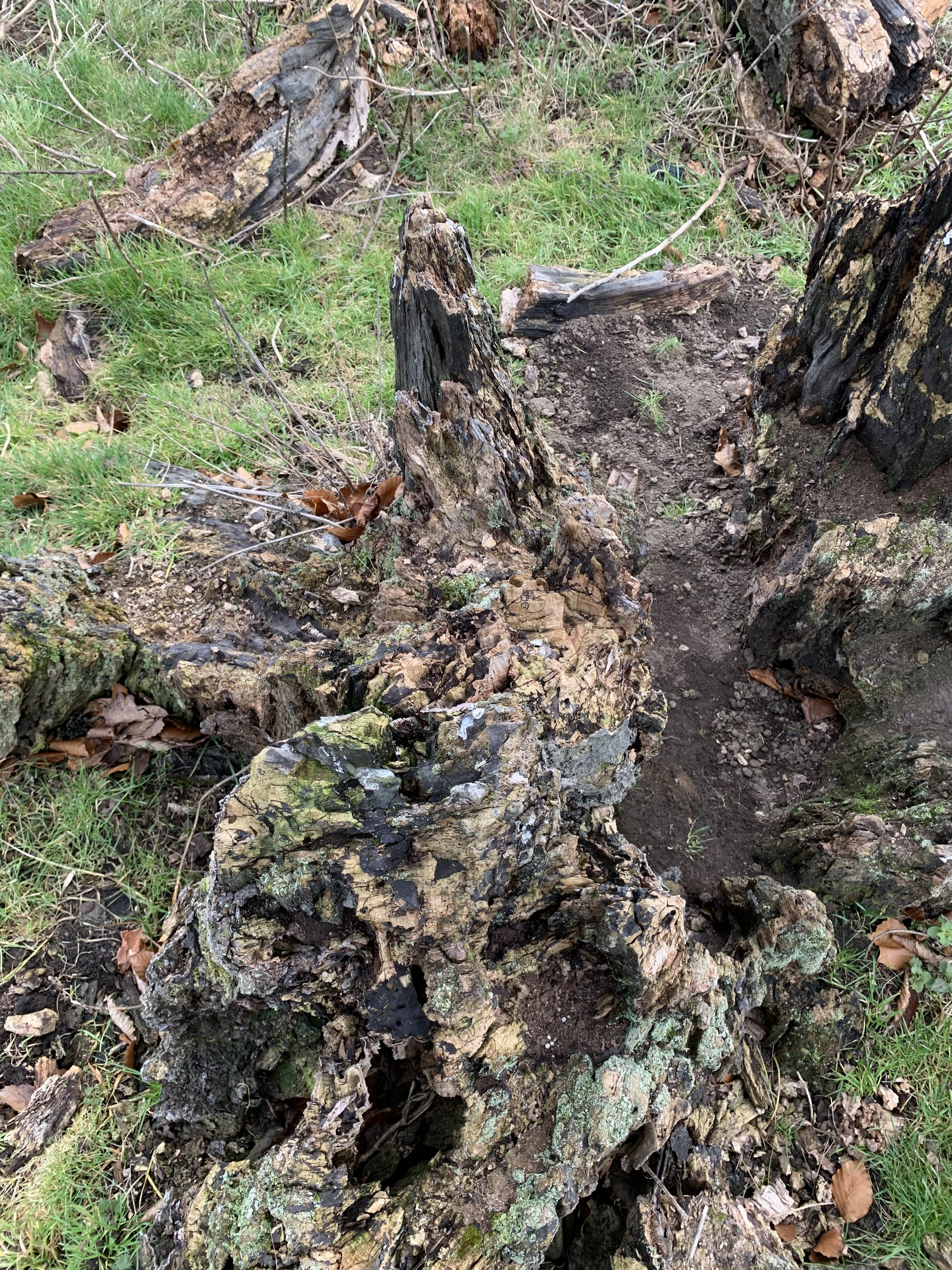
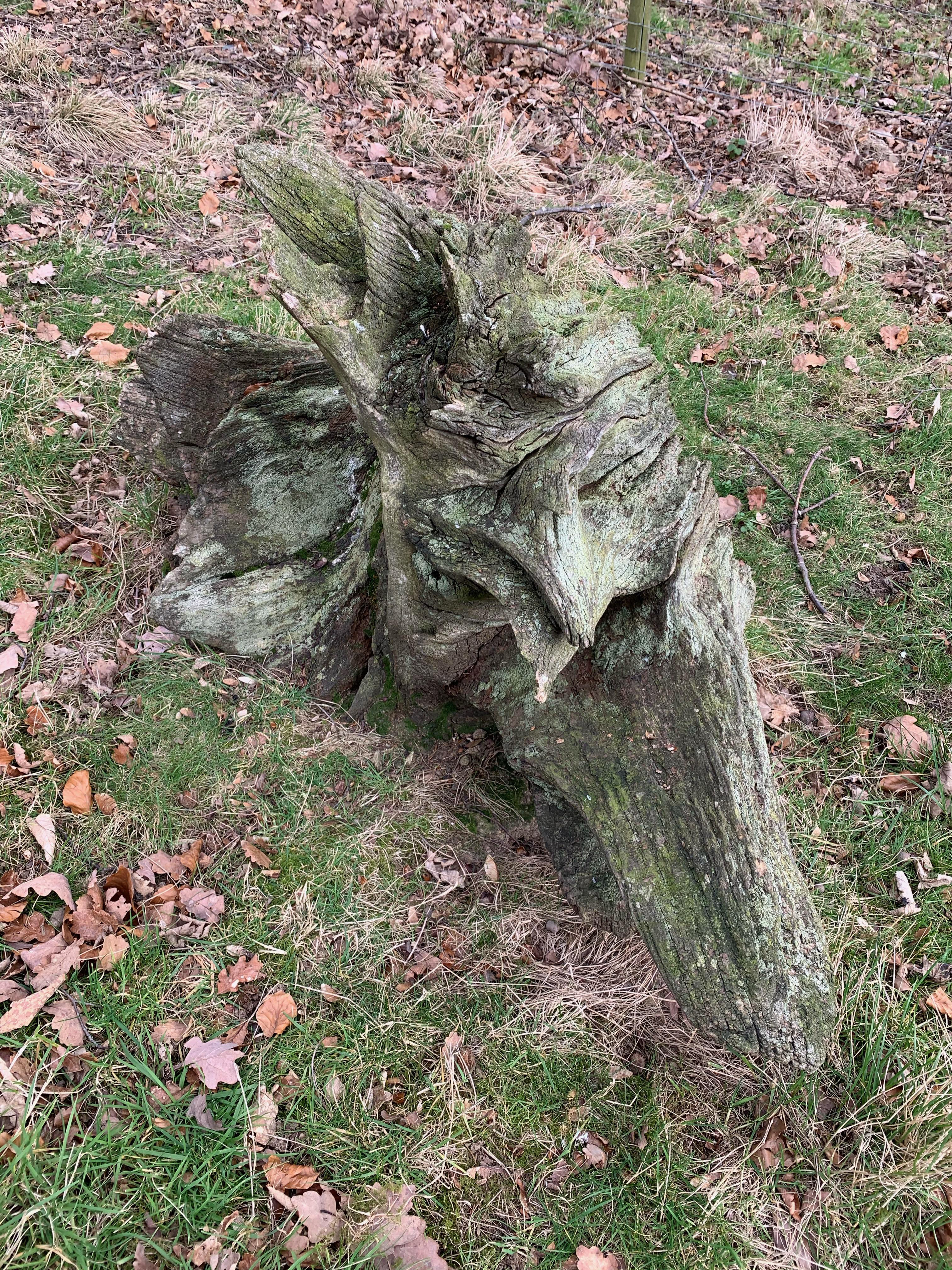
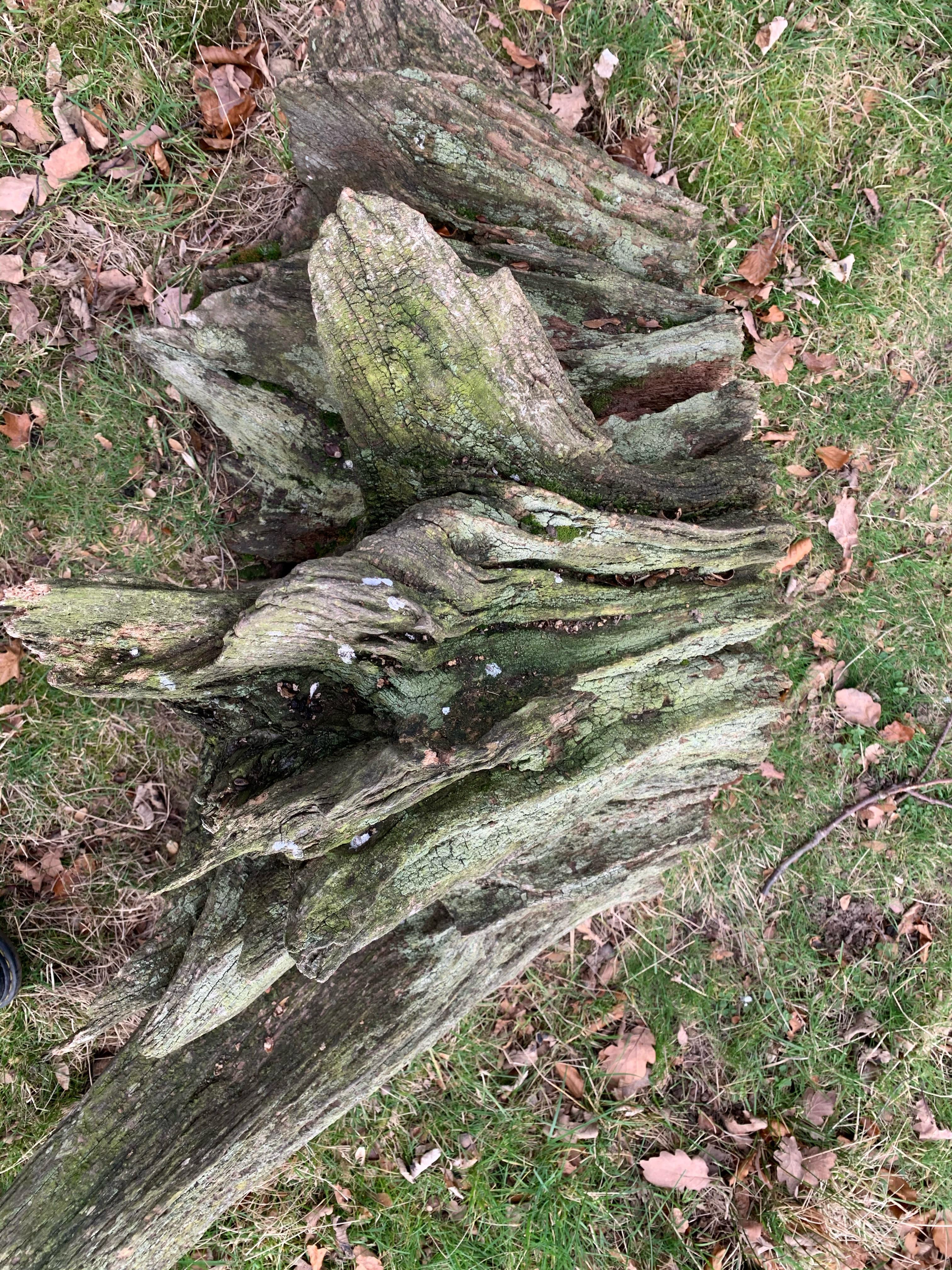

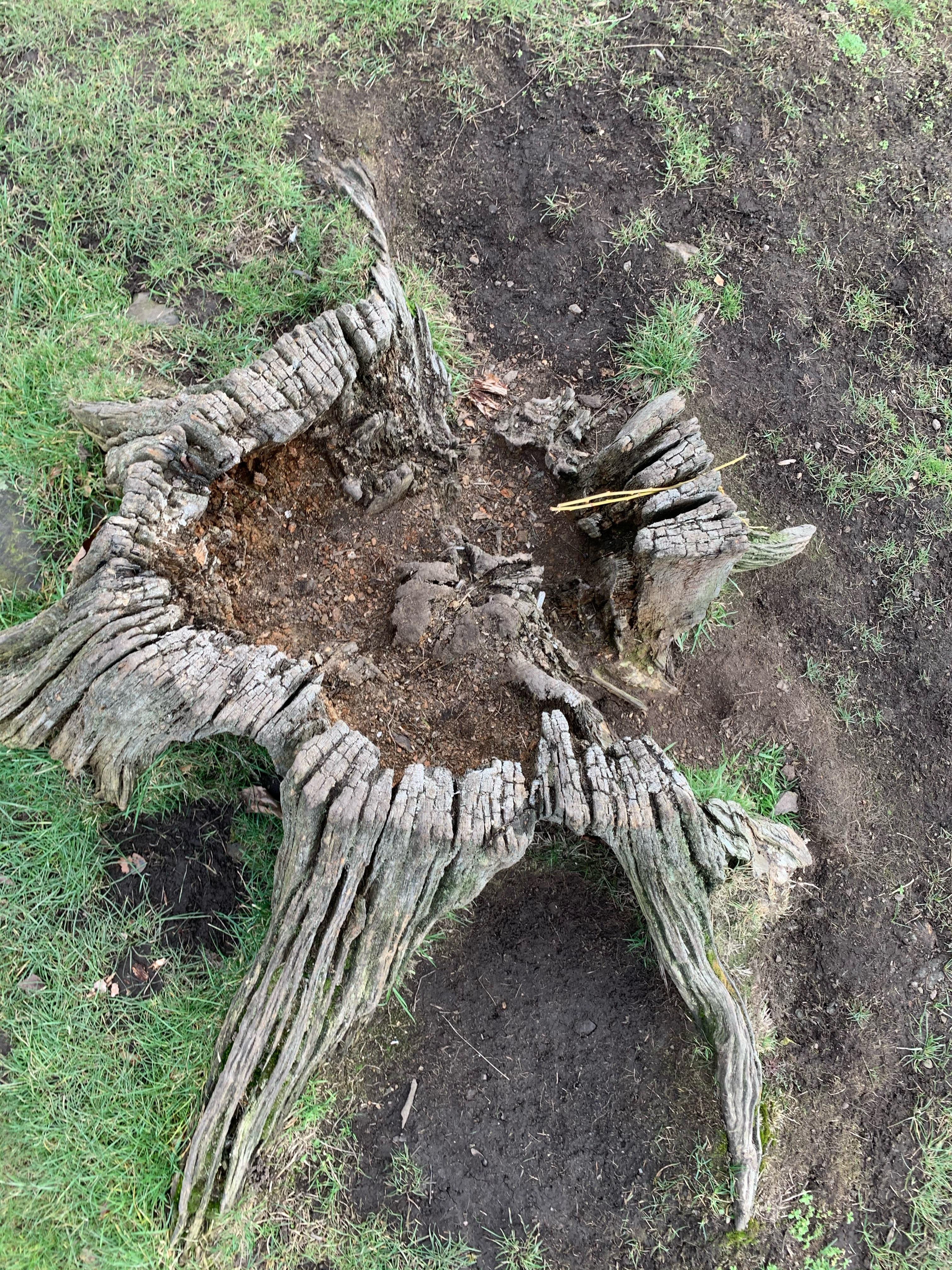
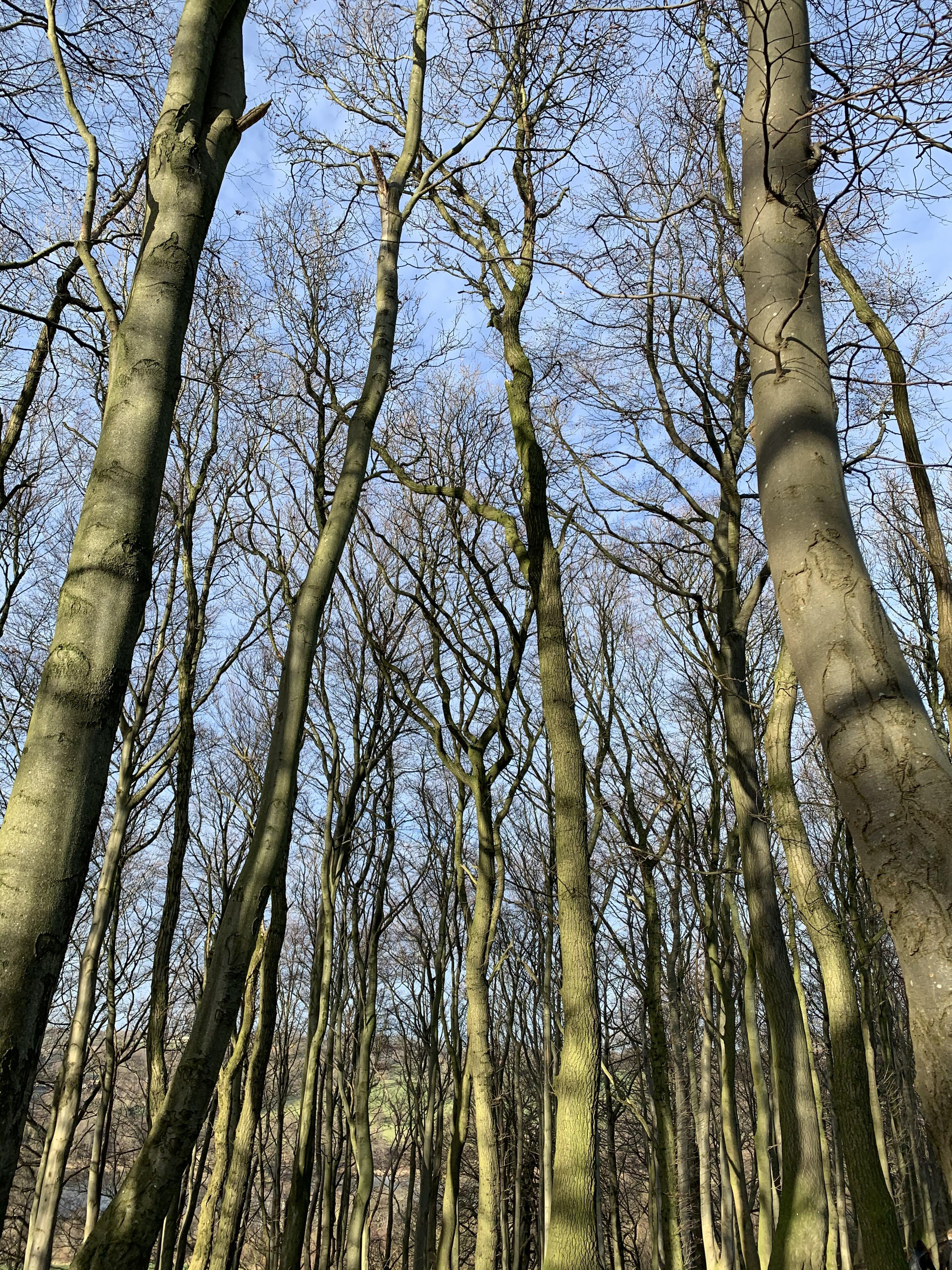
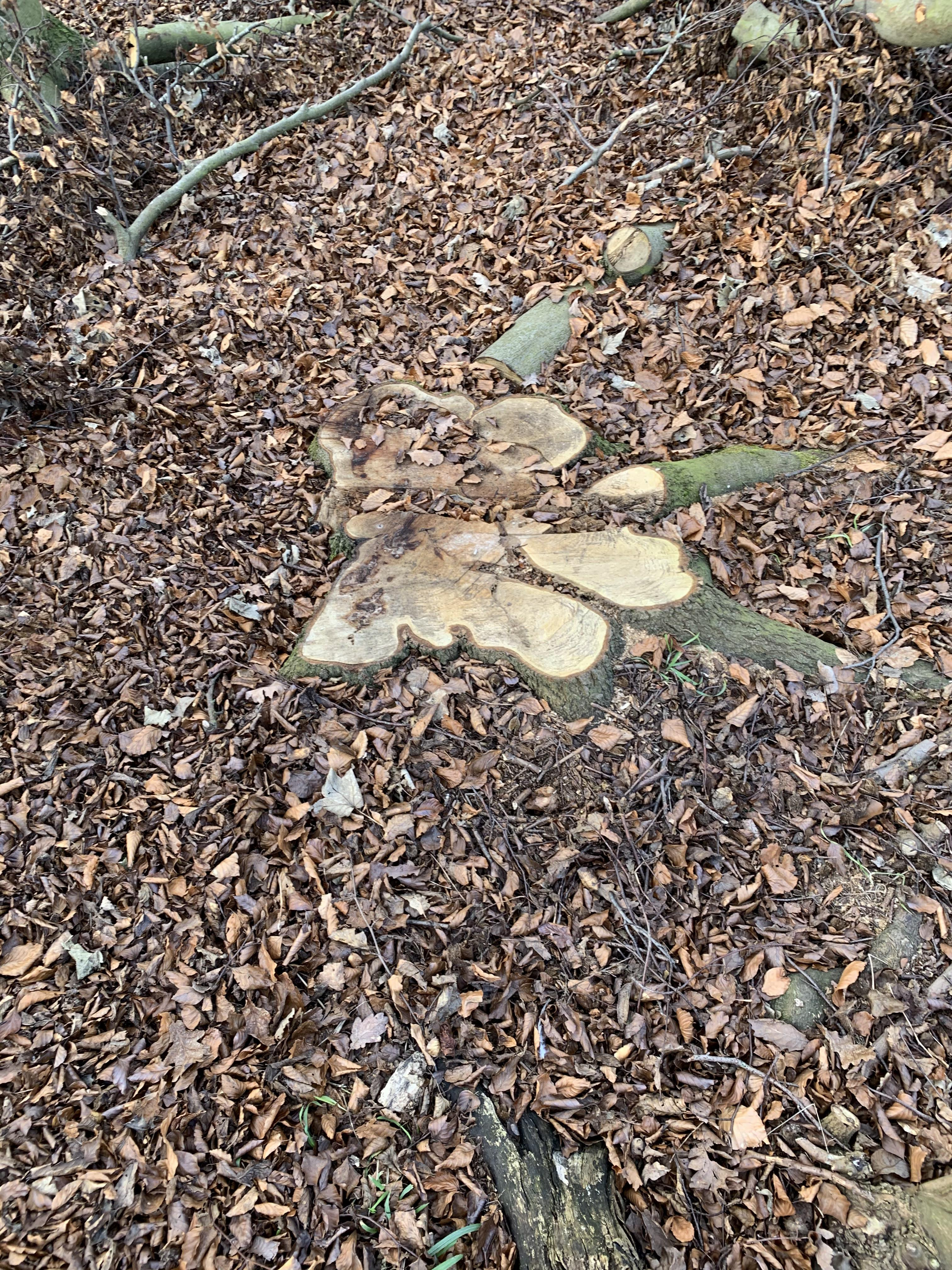
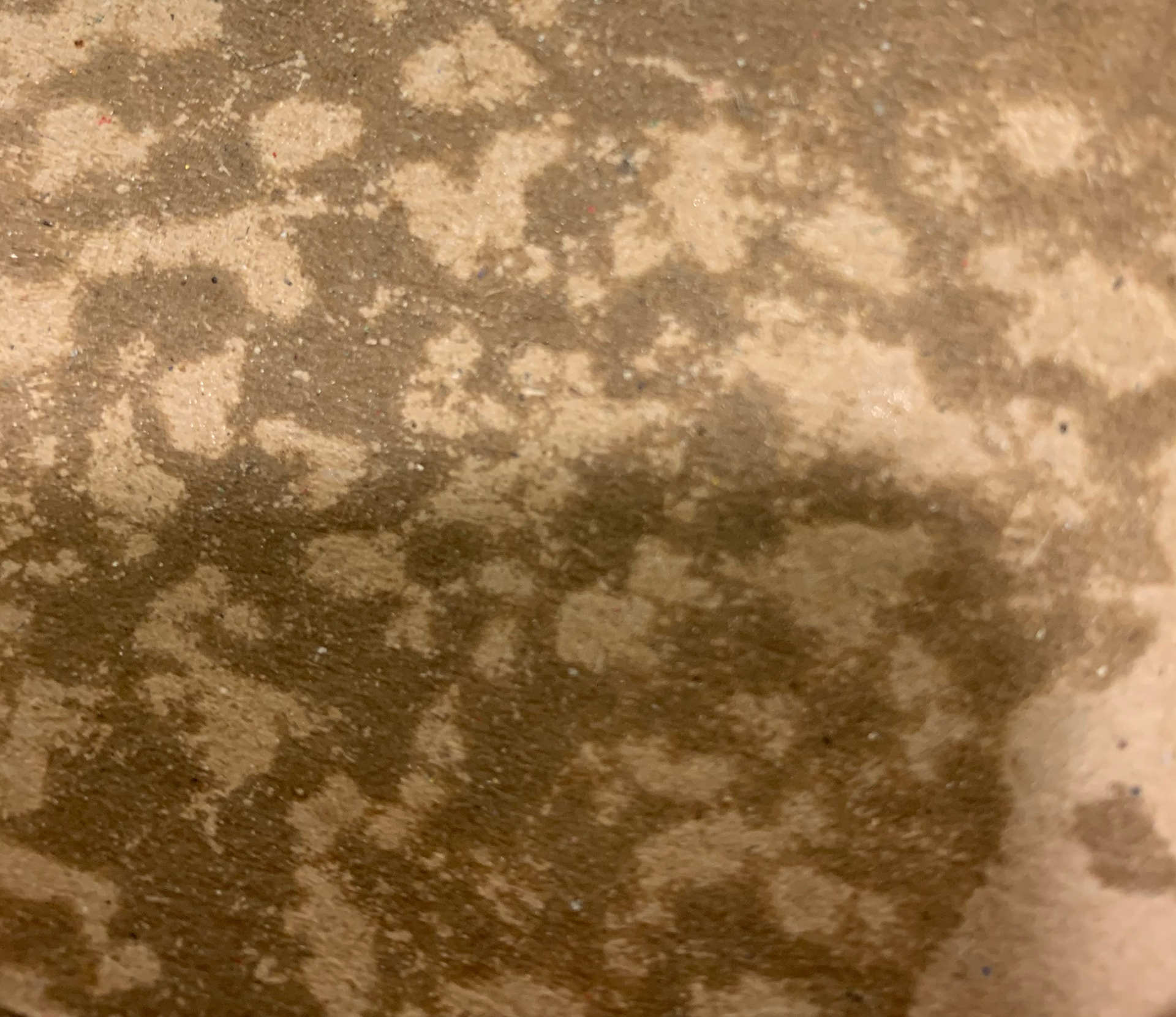


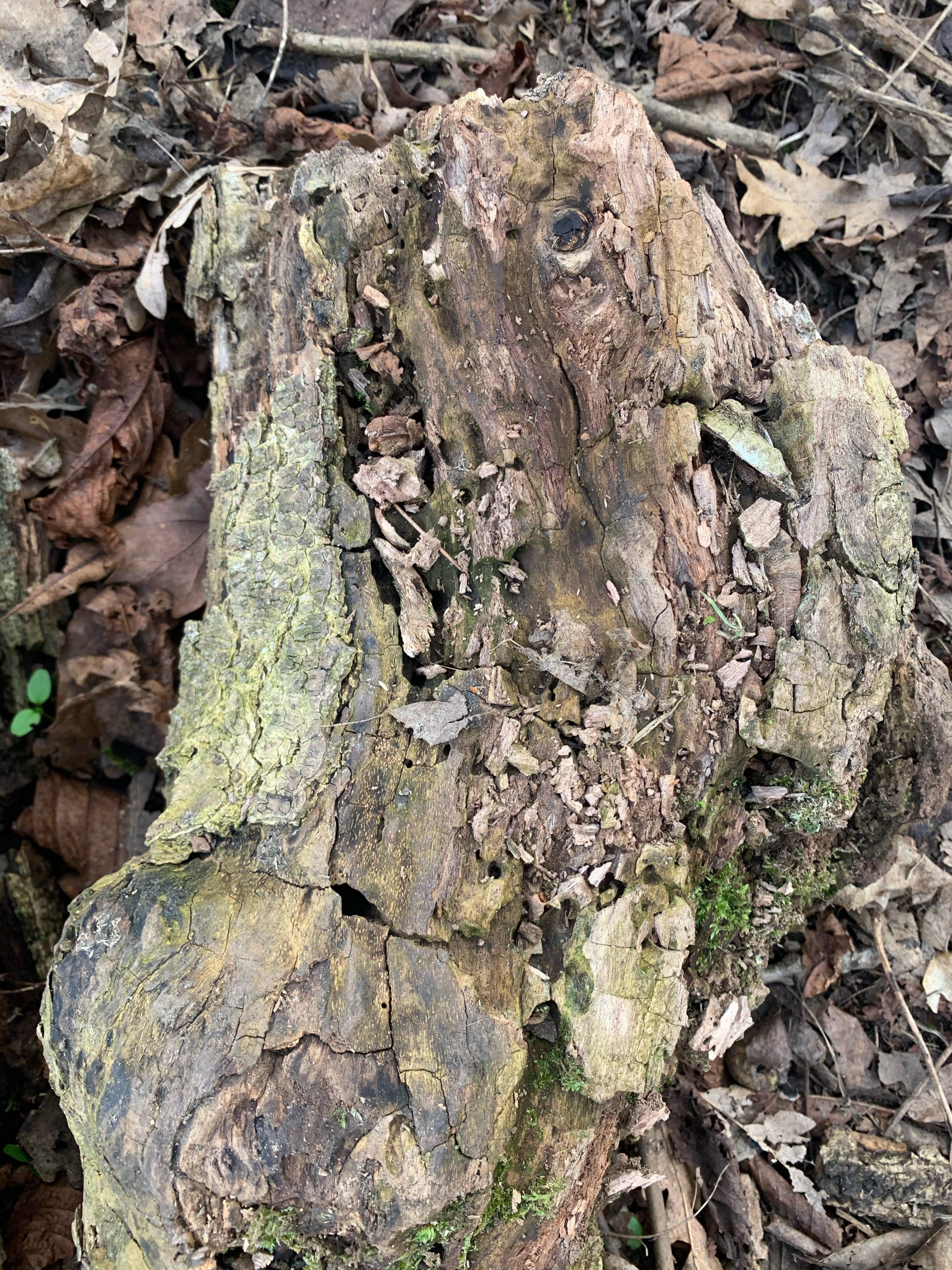
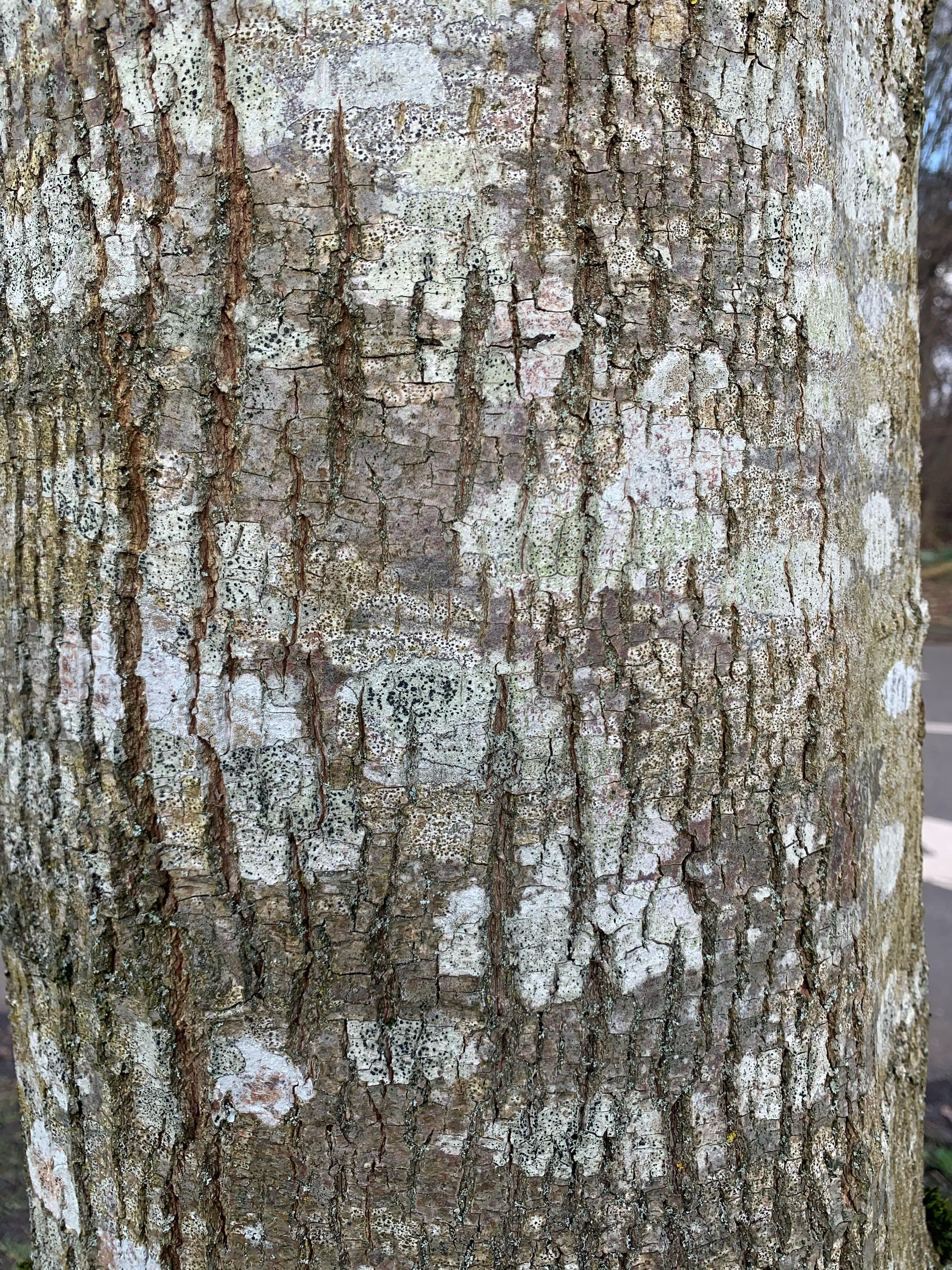


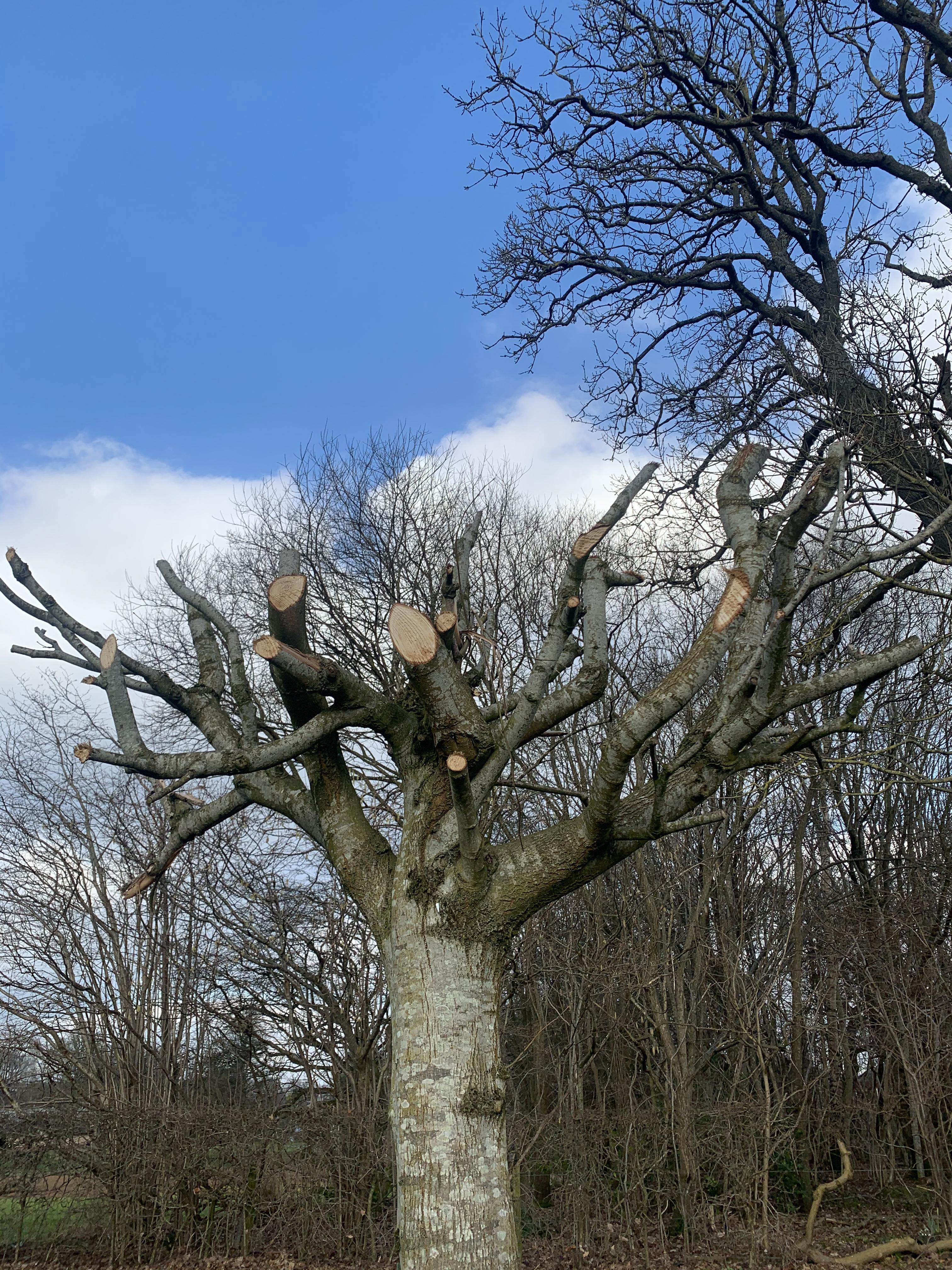

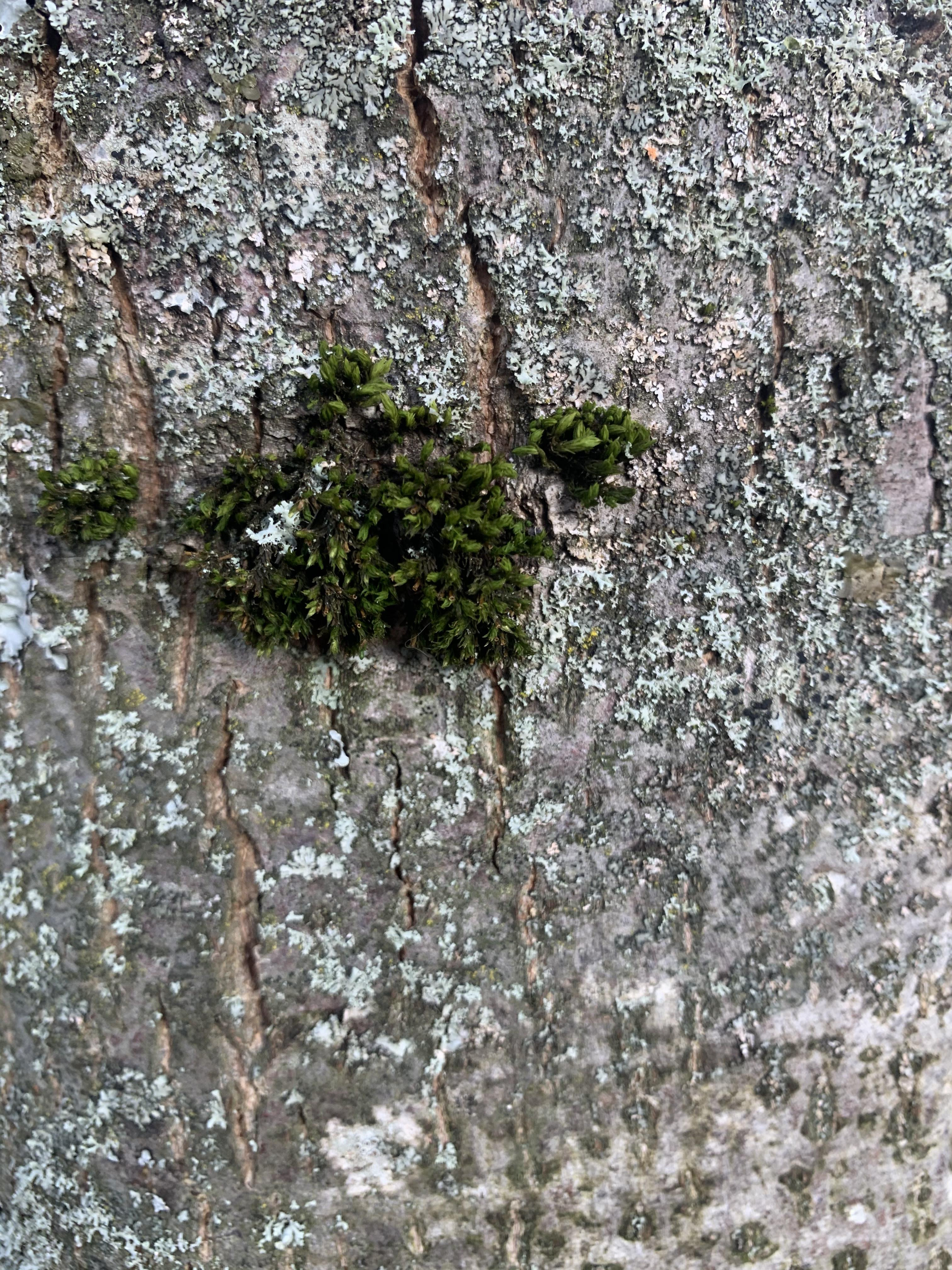
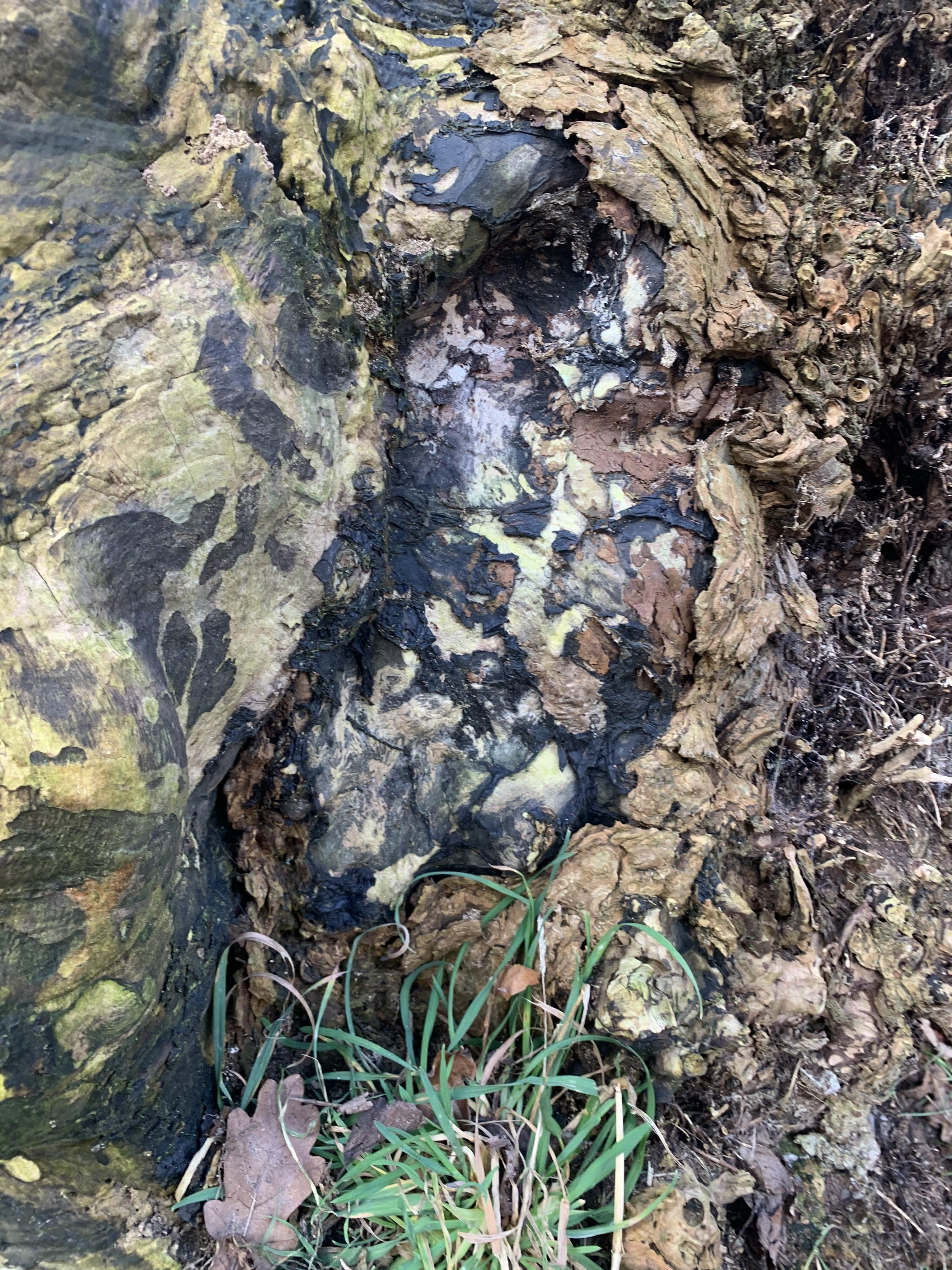
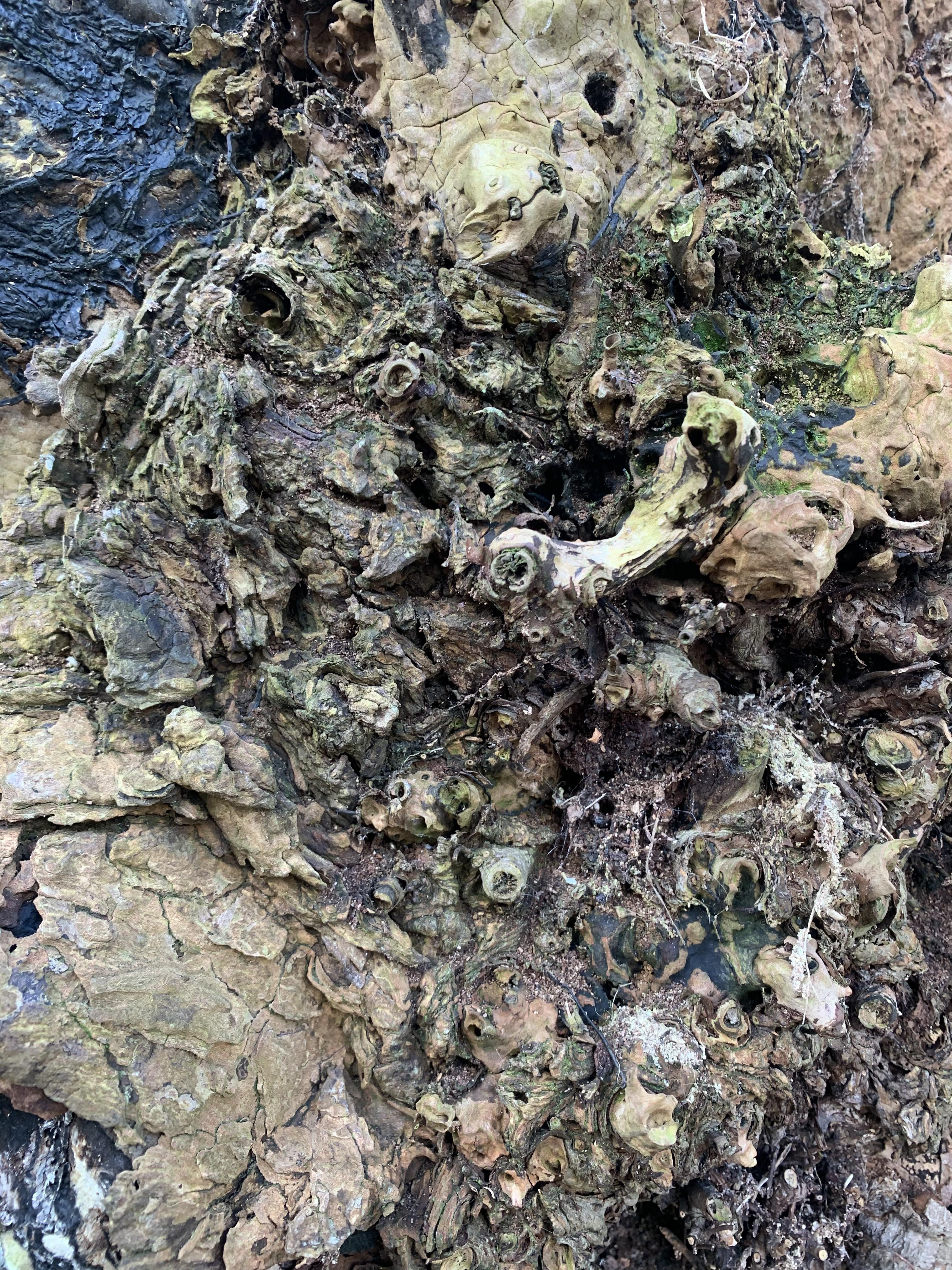
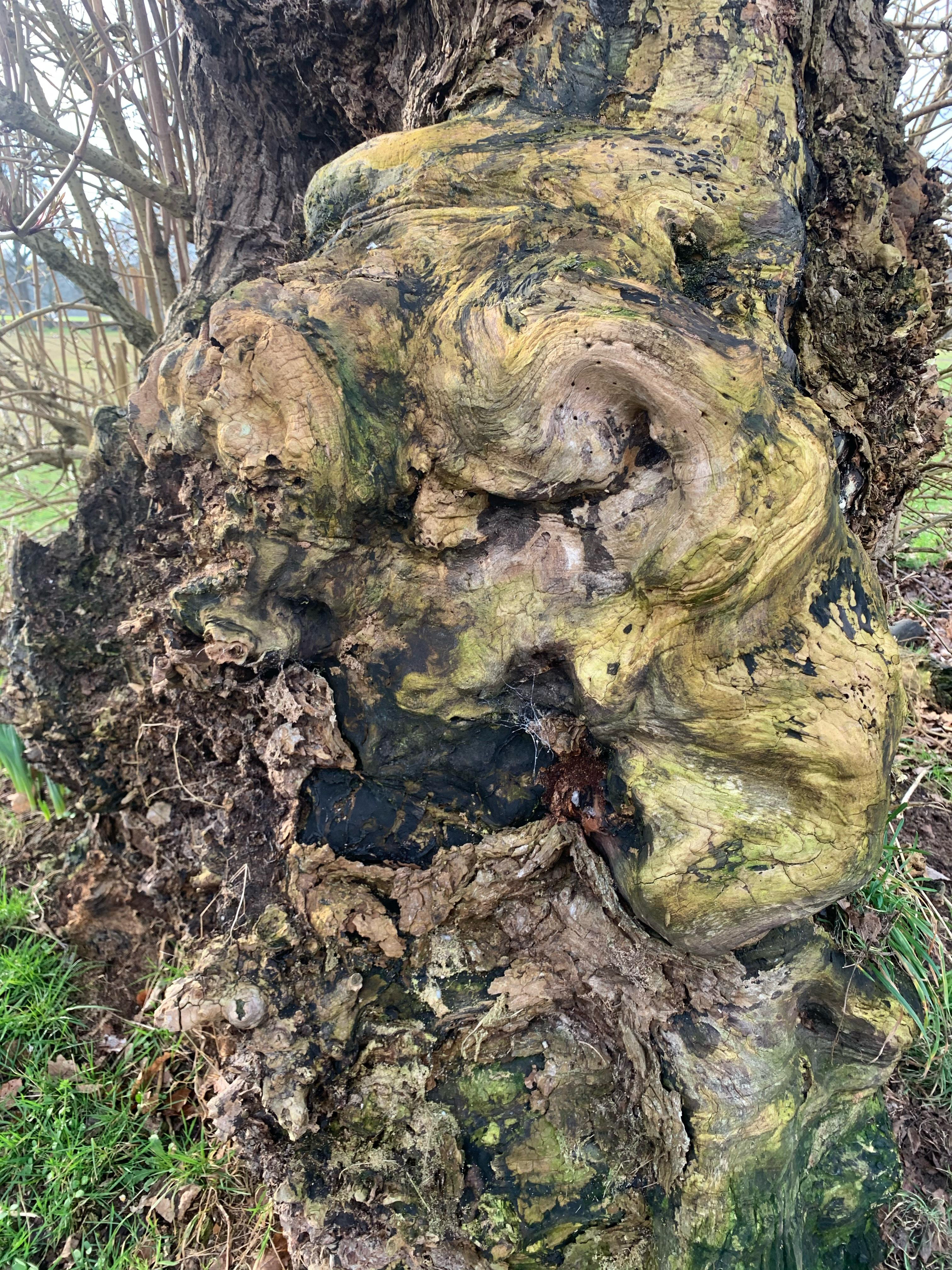
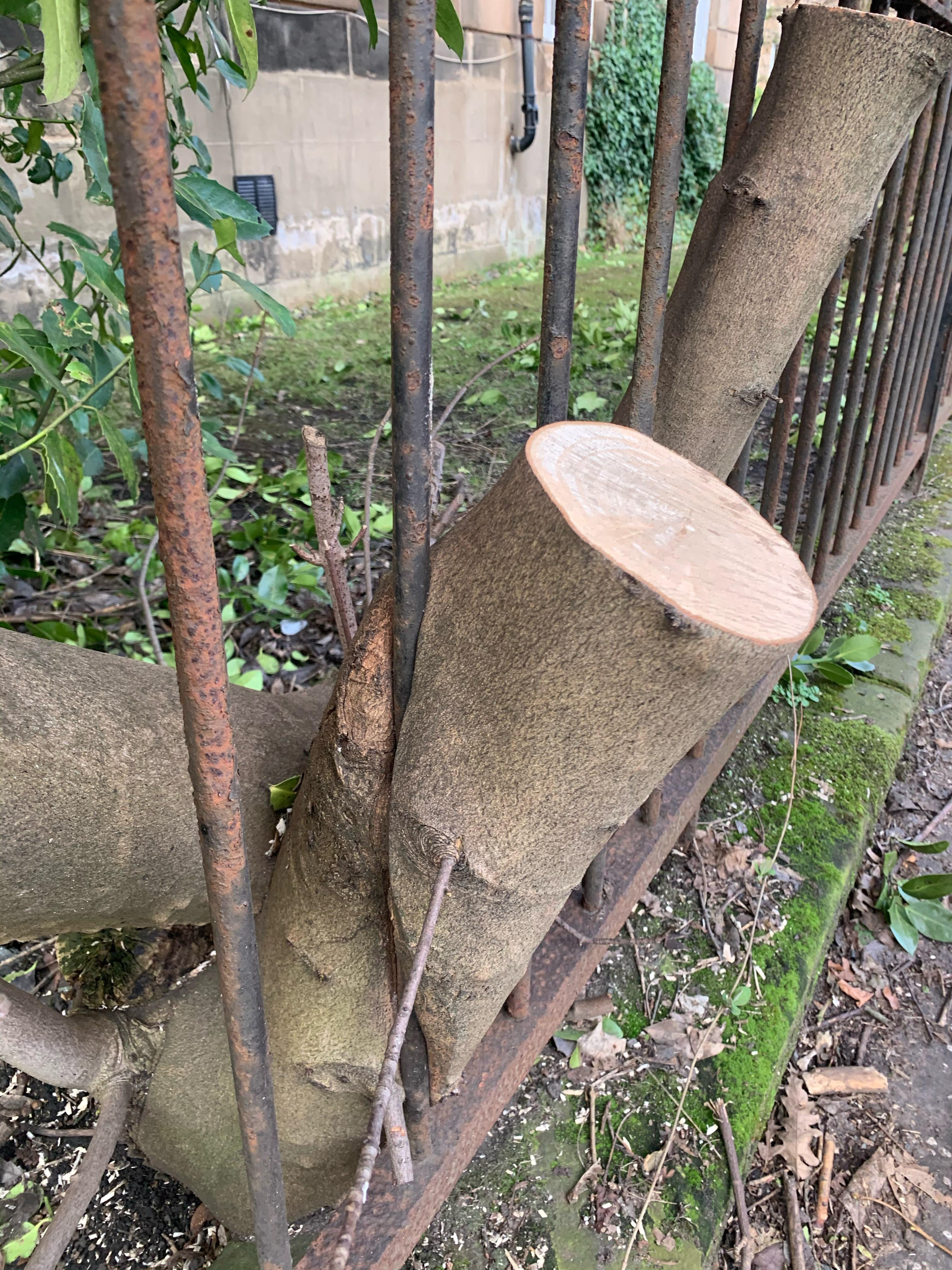
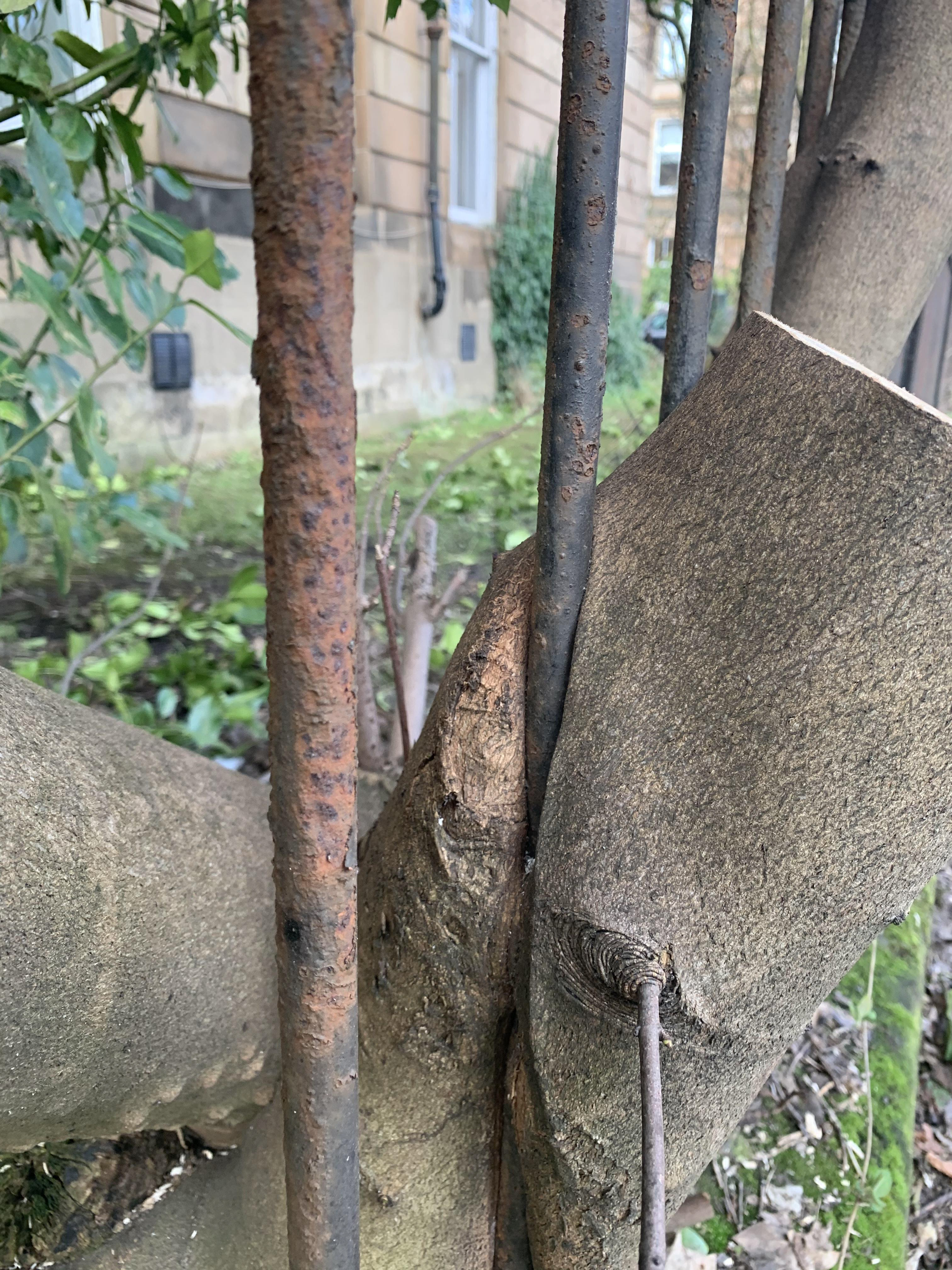
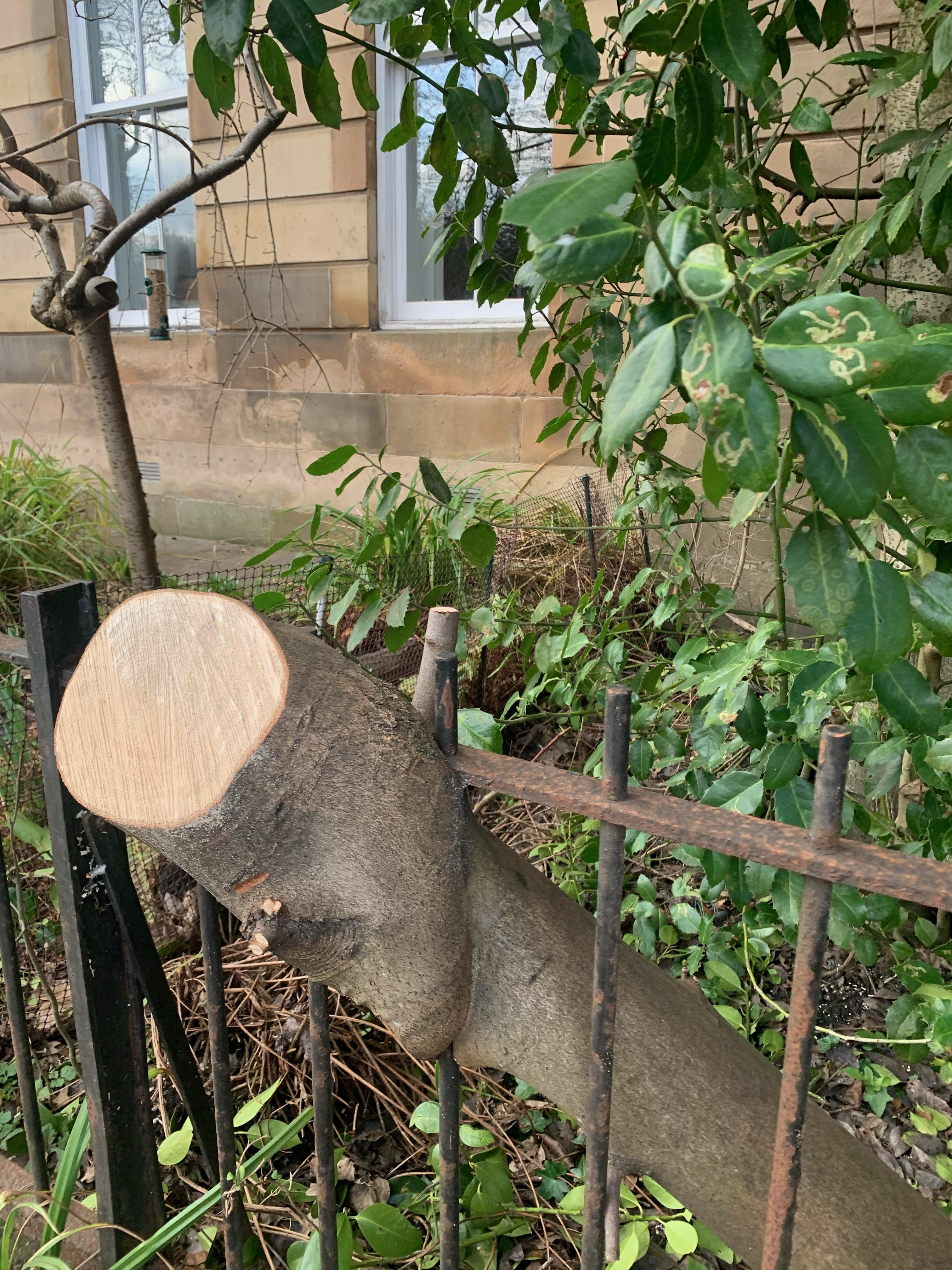
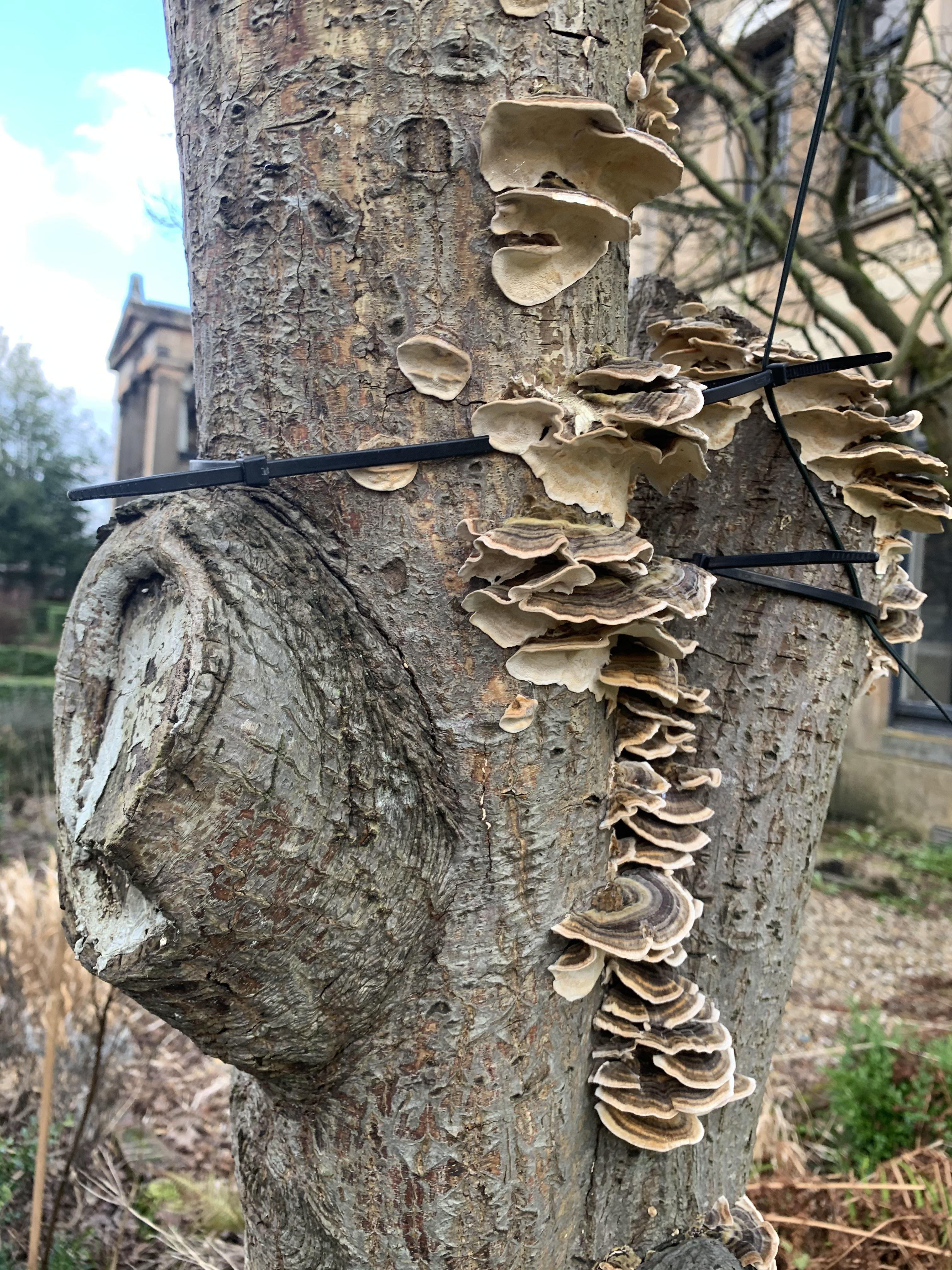
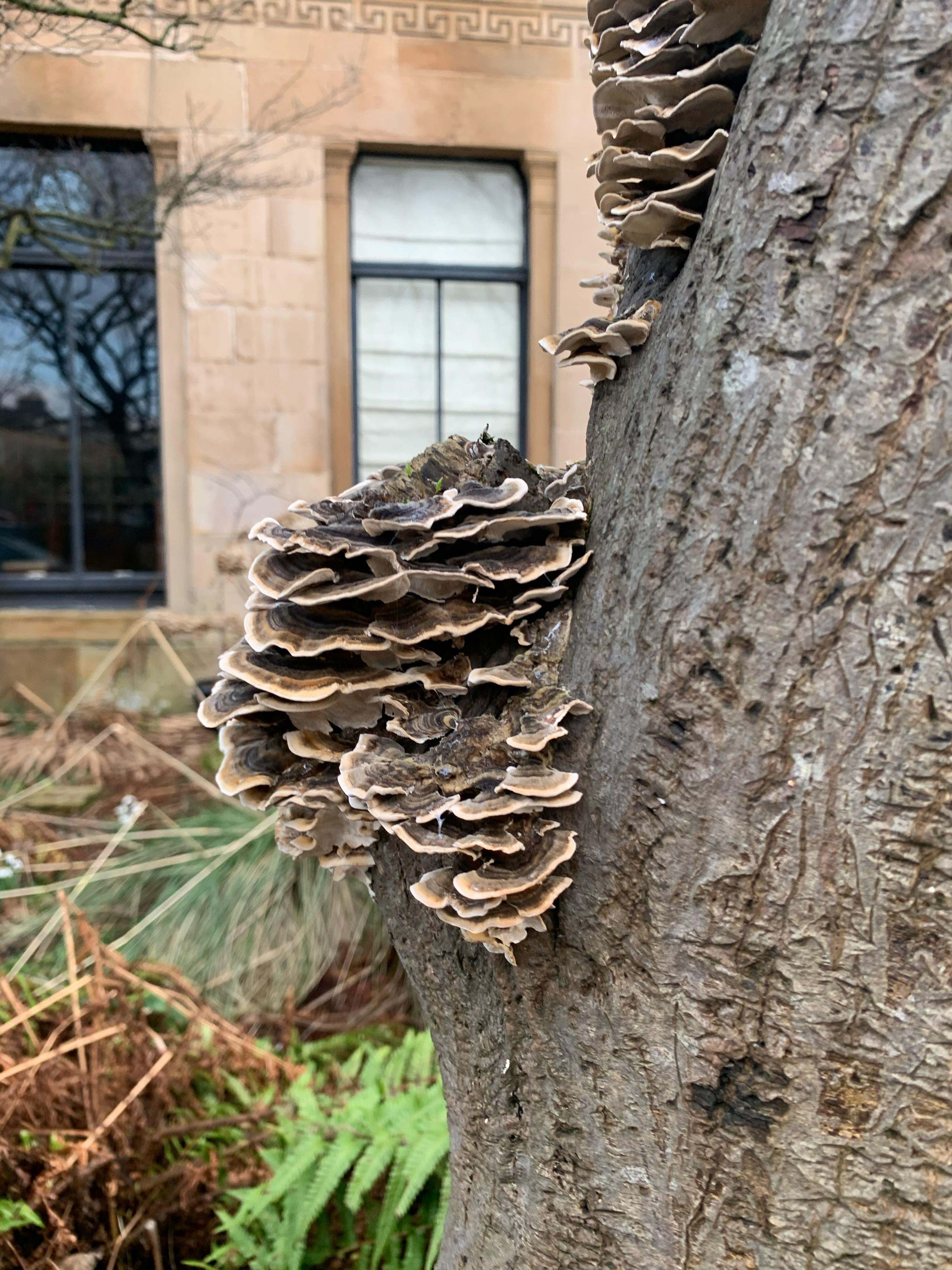
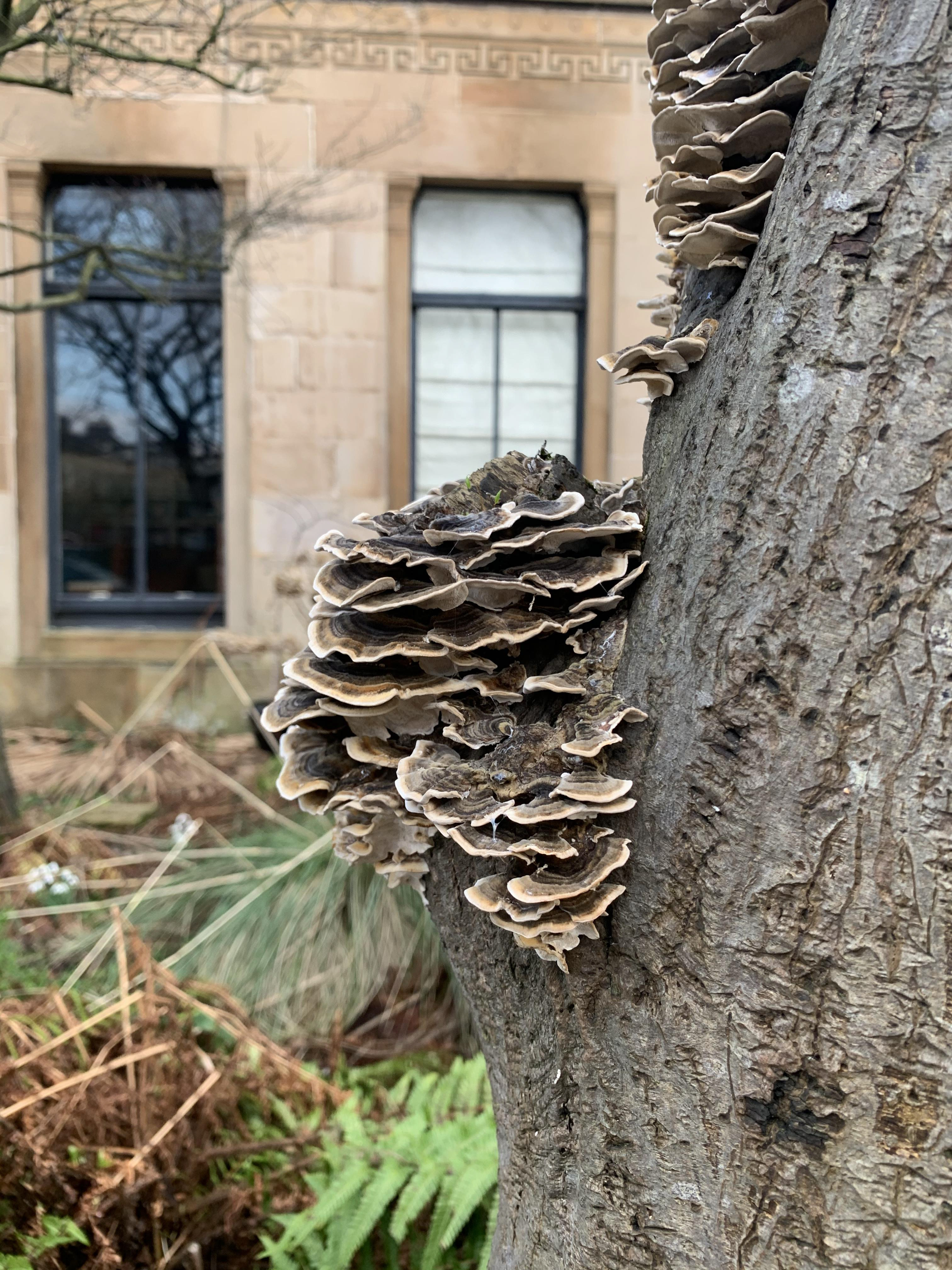
Exploring contemporary Jewellery on hands
Our hands are our bodies main tool, allowing us to feel, create and express.
Looking into jewellery on the hands inspired by the above artist, instead of traditionally decorating the hand creating pieces that exaggerate, immobilise, and explore the relationship between our hands and our surroundings.
Looking into the shape and form of our hands and combining this with the natural forms I was inspired by. Creating pieces that celebrate the hands movement, highlighting them.
Looking mainly into rings but also pieces that work around the fingers too. That aren’t directly the traditional ring we see in an everyday setting.
looking into the comfort of jewellery, making it comfortable or uncomfortable to the wearer is something i want to explore how does it make the wearer feel.
naomi filmer

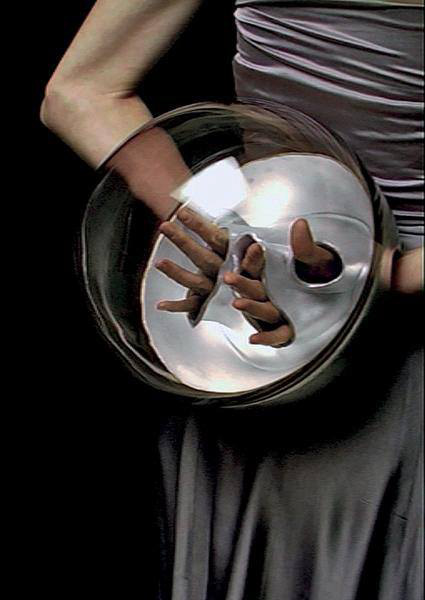
ball in the small of my back

naomi filmer is a jeweller who is preoccupied with the body, fascinated by its shapes, sounds and movements. abstracting the familiar and making it strange celebrating the human form. challenging the boundaries of what defines the body and looking into the relationship between body and objects.
gerd rothmann
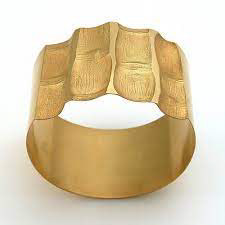
four finger bracelet 1995
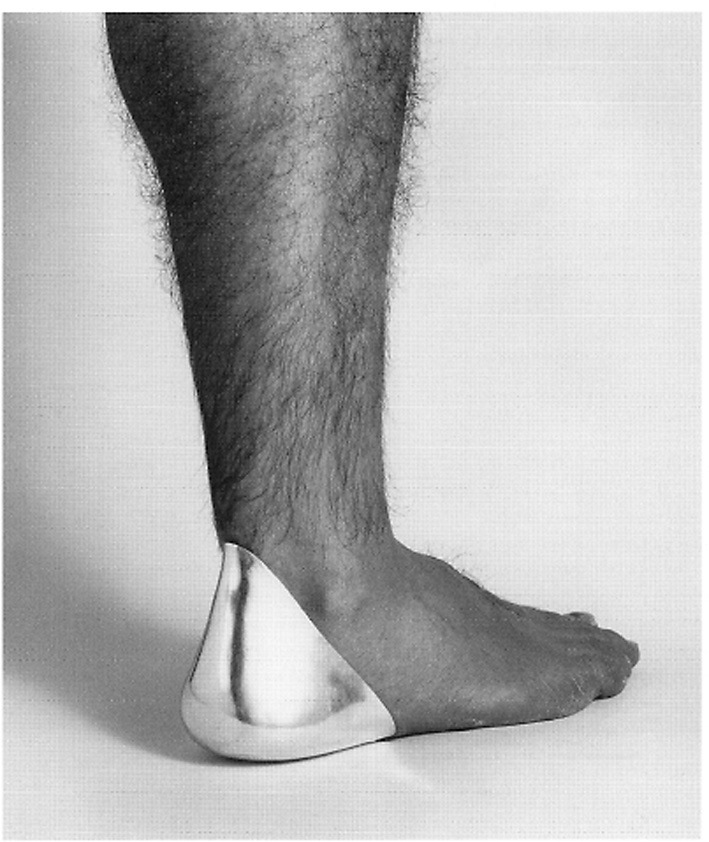
achilles heel 1978
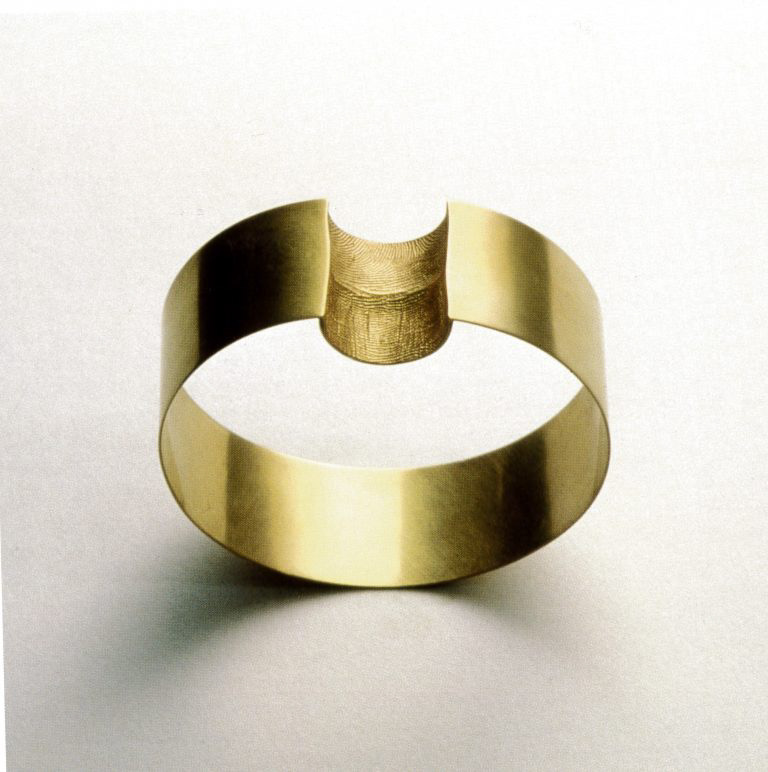
index finger braclet 1992
Gerd Rothmann’s work explores the relationship of jewellery and the human body through the concept of duplication and reflection. casting unique body markings form gold or silver, Rothmann suggests that the imprints on his work were those of his client’s lovers, creating an intensely personal record of a relationship. I looked into rothman as his work captured me and made me reflect on my own work under the same but different have multiple body castings but each ones detail is so different as it has individual imprints that are personal to the maker and the audience.
Gijs Bakker

invisible jewelry
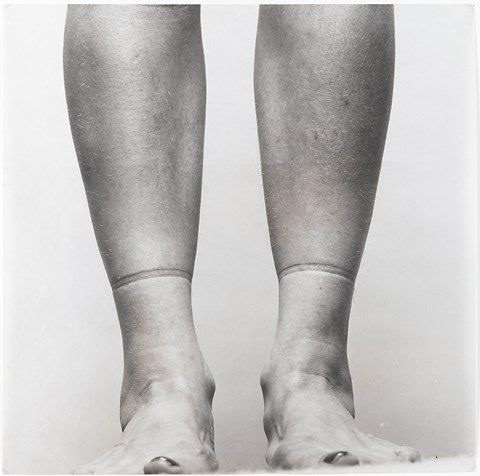
shadow jewelery 1973
artist Gijs Bakker, explored the convention of jewellery rebelling against the traditions of the craft, around 1970 Bakker created a series of bracelets based on the proportions of a standard aluminium tube. these bracelets had the aim of making impressions on the body, being tightly bound around body parts these pieces 'moulded to the body' when looking through my photos the trees that have adjusted to there surrounding habitat moulding around the metal fence reminded me of Bakker and his impressing jewellery.
these three artists explore and widen the definition of contemporary jewellery, I was initially draw to them as their work has a much larger focus looking into to the relationship of jewellery to the body and not being your traditional jewellery. the photos I originally took when looking back at them, these artists came into mind as I could see some of my photos being developed into jewellery following their style. for example, when looking at the picture of the tree growing around the fence it reminded me of Gerd Rothmann's work, looking into casting around the body, the way the tree is suffocating the fence. it also reminded me of Gils Bakker work making impressions of the body and seeing the moulded piece of the jewellery on the body. this inspired and helped me develop ideas with the help of my photos, thinking about the tree stuck in the fence how it would have been moulded if the fence was taken away, the impression it gives and the story of this moulded tree trunk.
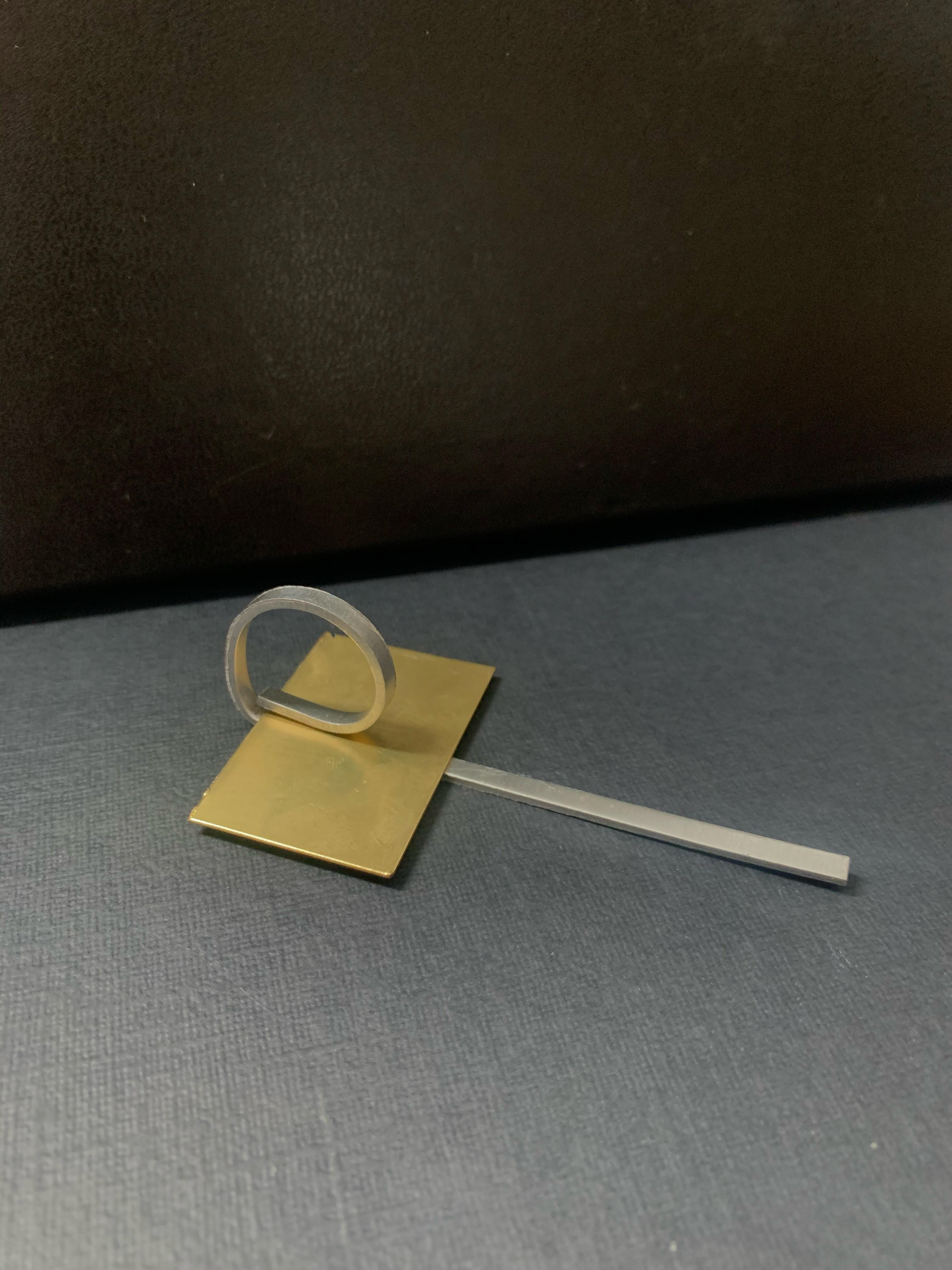
this simple piece, is a ring that covers all the fingers, the bold contrast in the Aluminium sheet and the brass sheet is something i really like about this piece making it stand out. although a simple piece this ring looks into the mobilization of the fingers, having the fingers rod stretched over all your fingers restricting movement and forcing the hand to be in a certain position alike the work of Naomi filmer whose work forces the body into position. the brass sheet that is attached covers the knuckles of the hand making it uncomfortable to bend the fingers. this concept of jewellery making the wearer uncomfortable is something i like to explore, only allowing it to be worn in certain ways other wise it becomes intolerable. making this a very awkward ring.
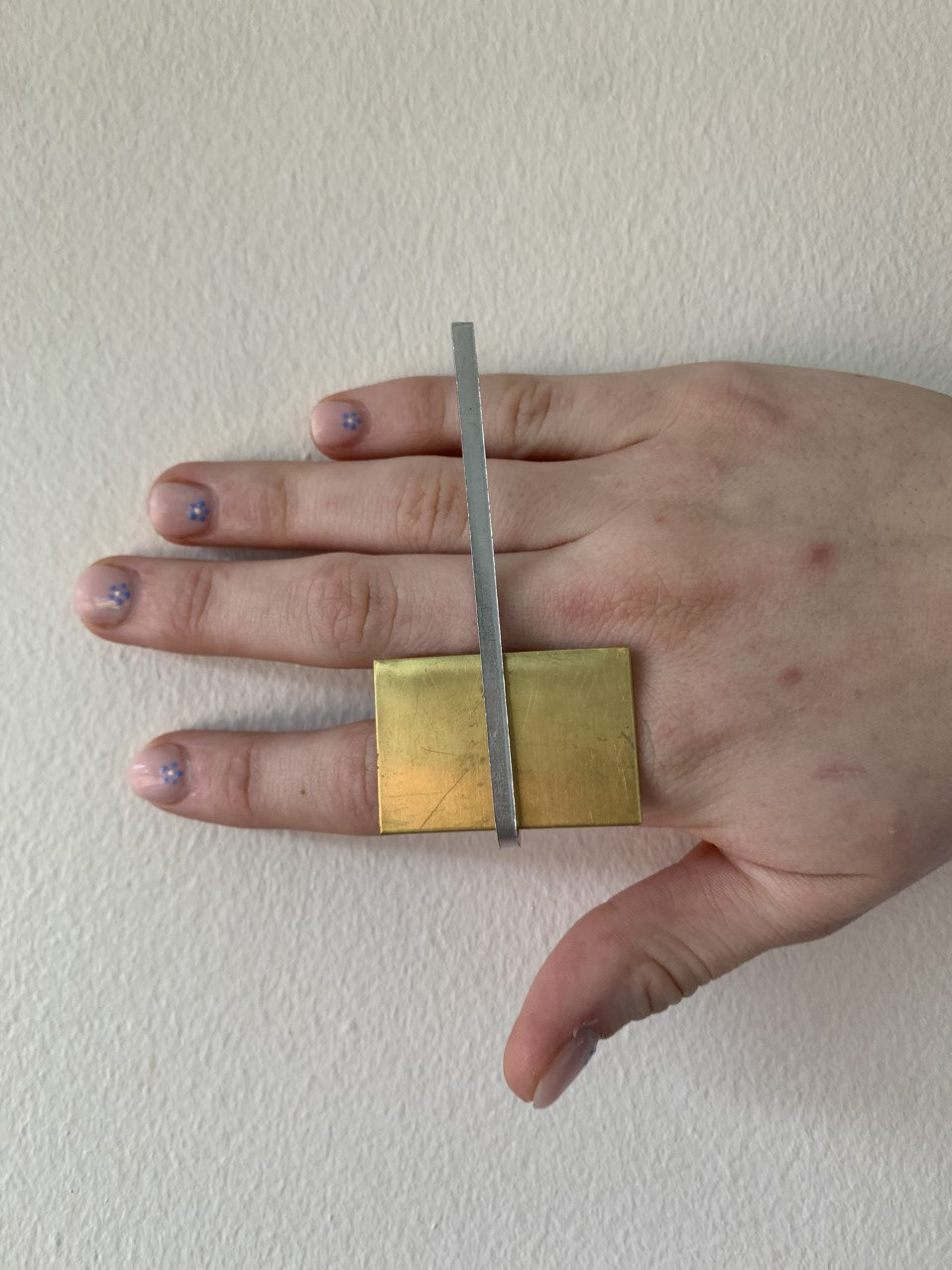

chasing and repousse
repousse, a method of decorating metals in which parts of the design are raised in relief from the back or the inside of the metal with hammers and punchers .
stone setting
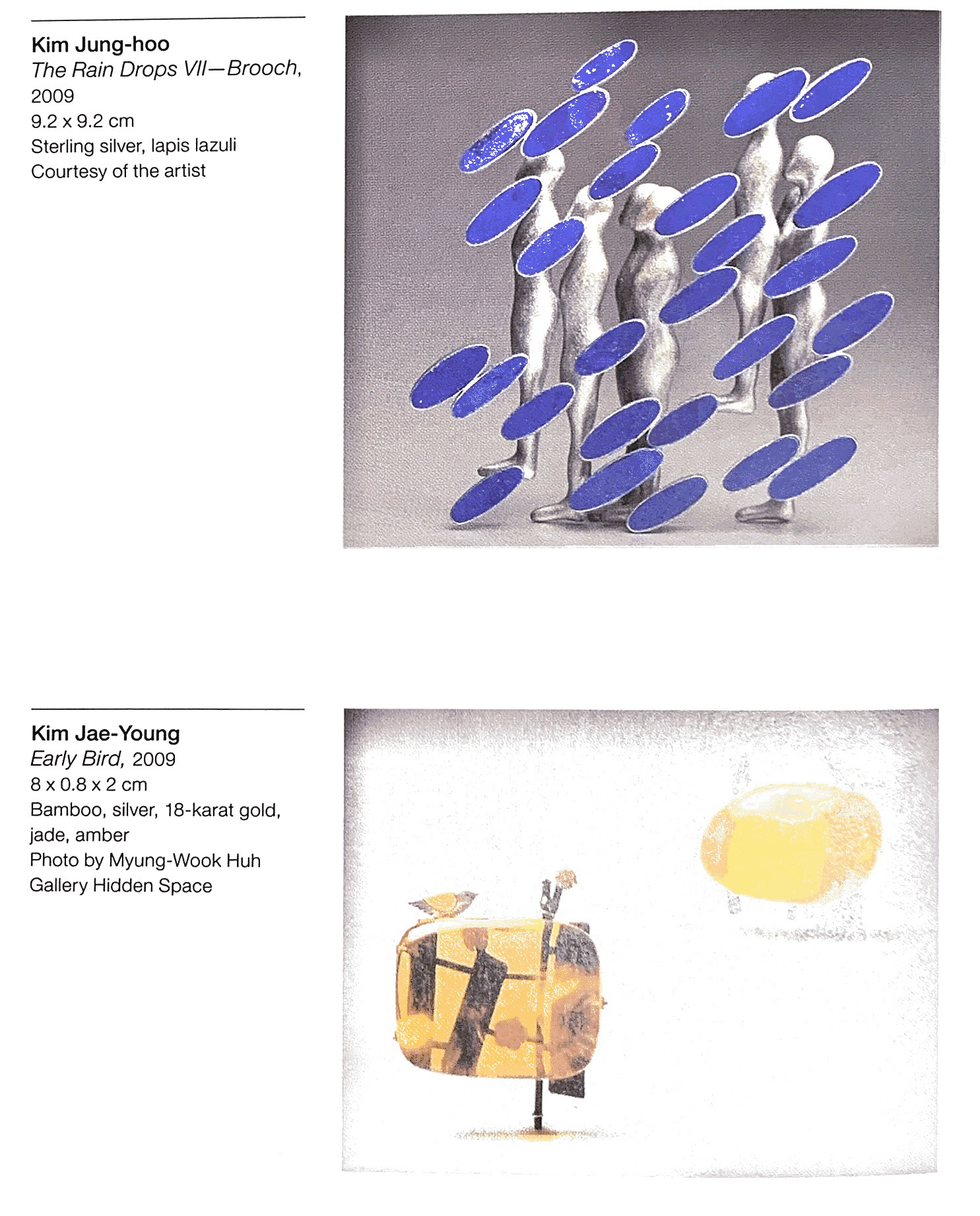
karl fritsch
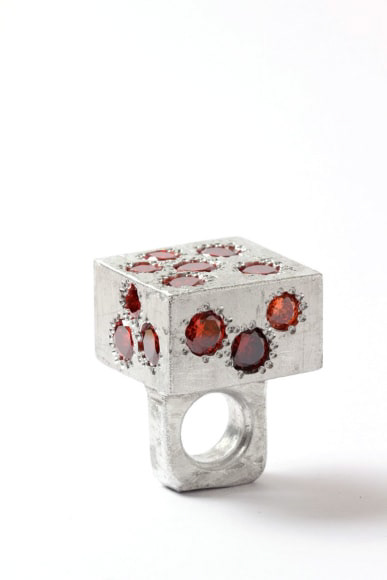
Ring, 2013, aluminum, cubic zirconia
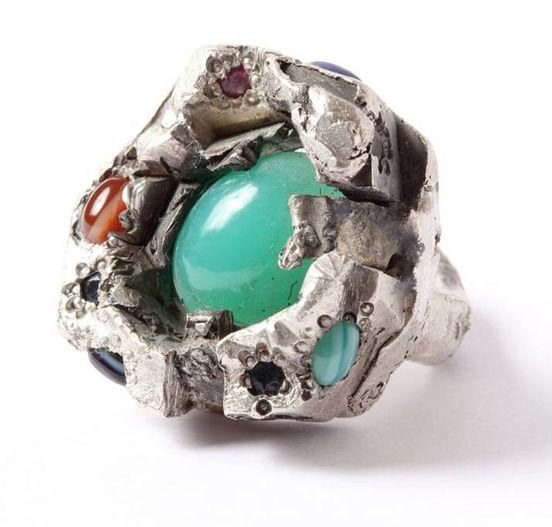
Ring, 2011
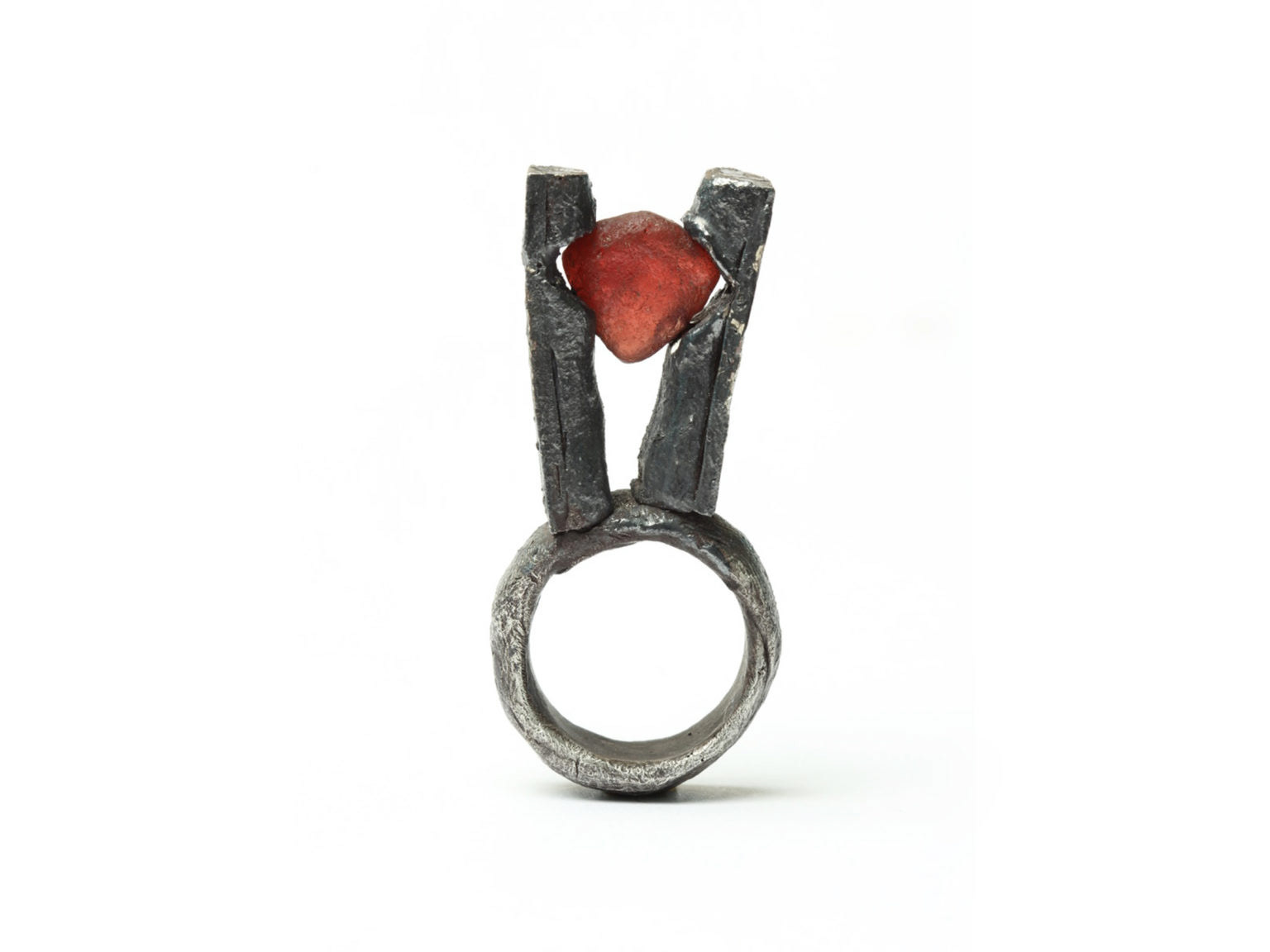
Ring 461, 2021 Silver, raw garnet
Fritsch a German jeweller specialises in his raw unique rings that use a wide mix of materials form basic found object to raw precious stones which are embedded in his unconventional rings. using a range of stone setting techniques all his rings are individual and don't follow each other but explores the materials they use.
irene wolf
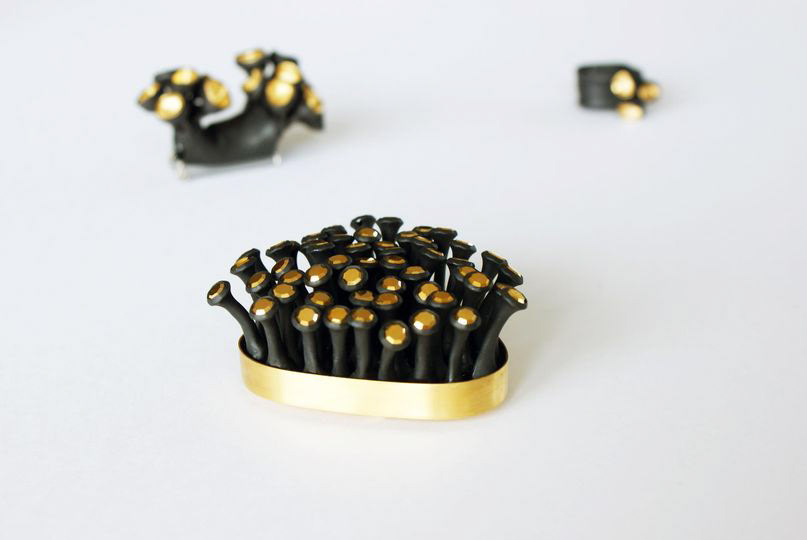

Irene wolf is a German artist who explores the organic look in her work, using unused man made materials her collection is made from shrink hose pieces that have glass stone embedded on the end. although this isn't the traditional stone setting she uses rubber and resin for her unique pieces.

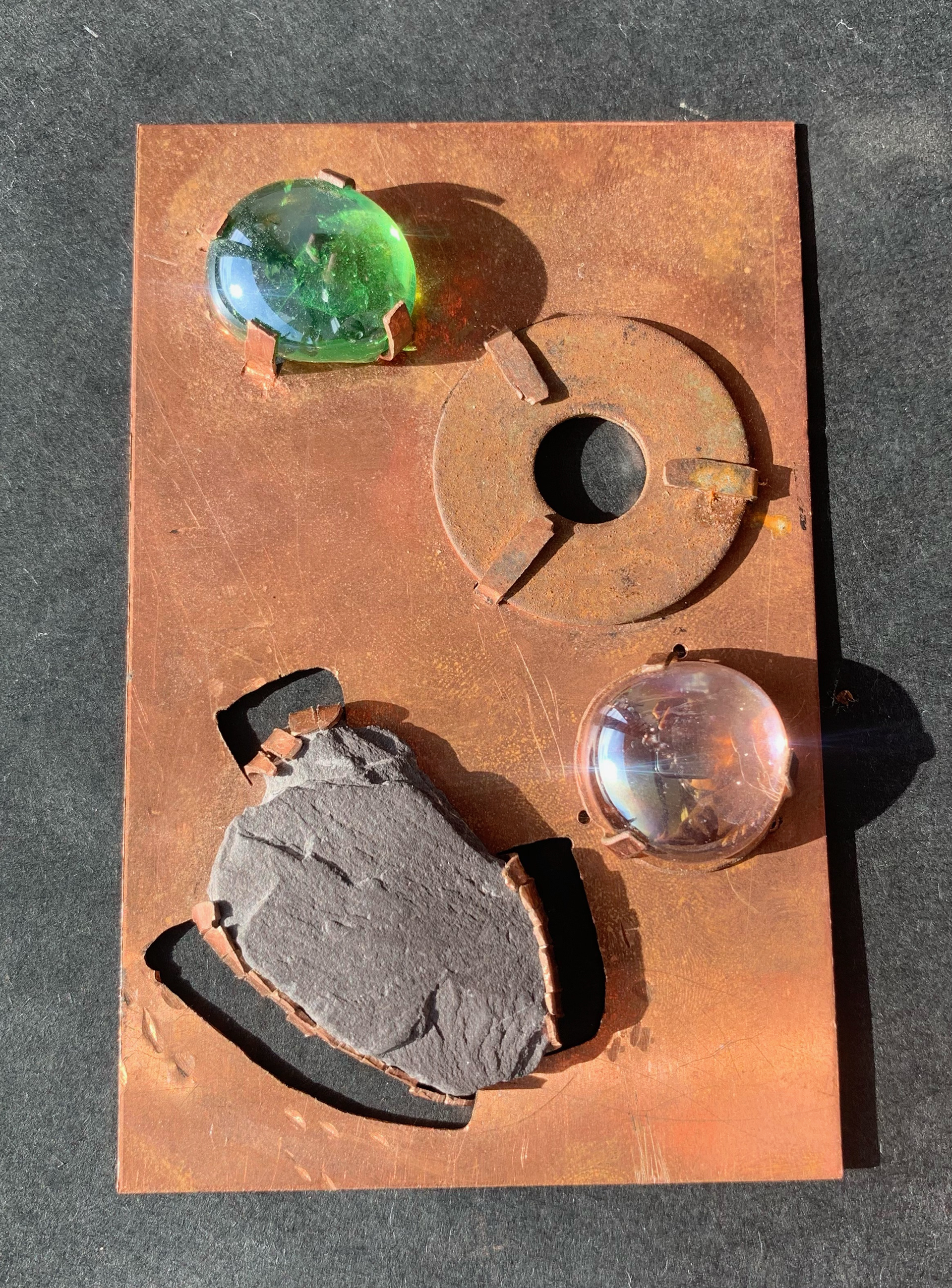
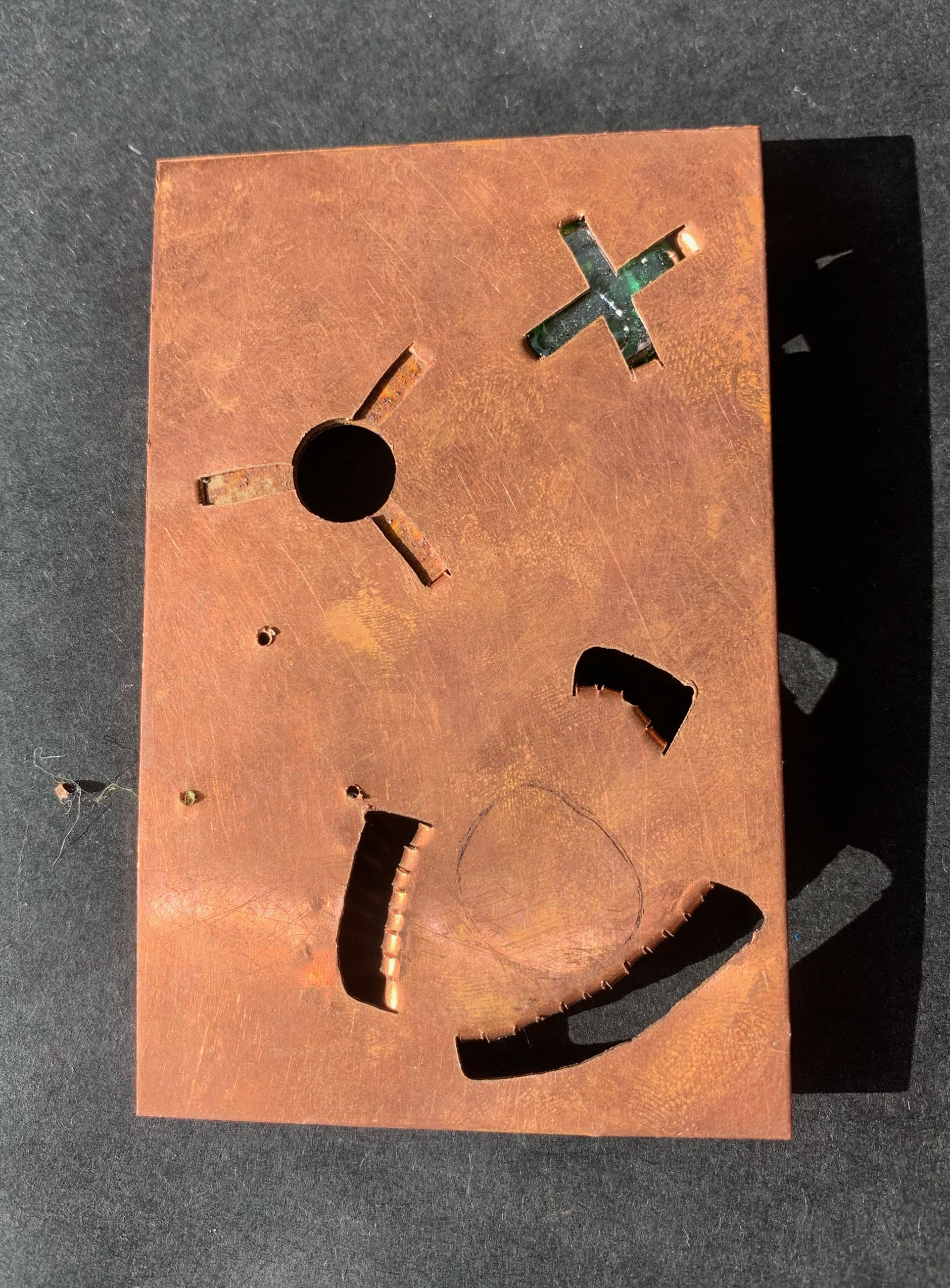
my stone setting samples looking into different types of stone setting to collar, claw grappling and wall stone setting methods. using different objects allowing me widening my skills in being able to use a variety of shapes and sizes. for this technique planning out the sizes and the amount of arms and walls needed to be created is key, otherwise they will not be tight and secure and will fall out. seeing if you want to crate a negative space or have enough space on the metal sheet to cut out is key.
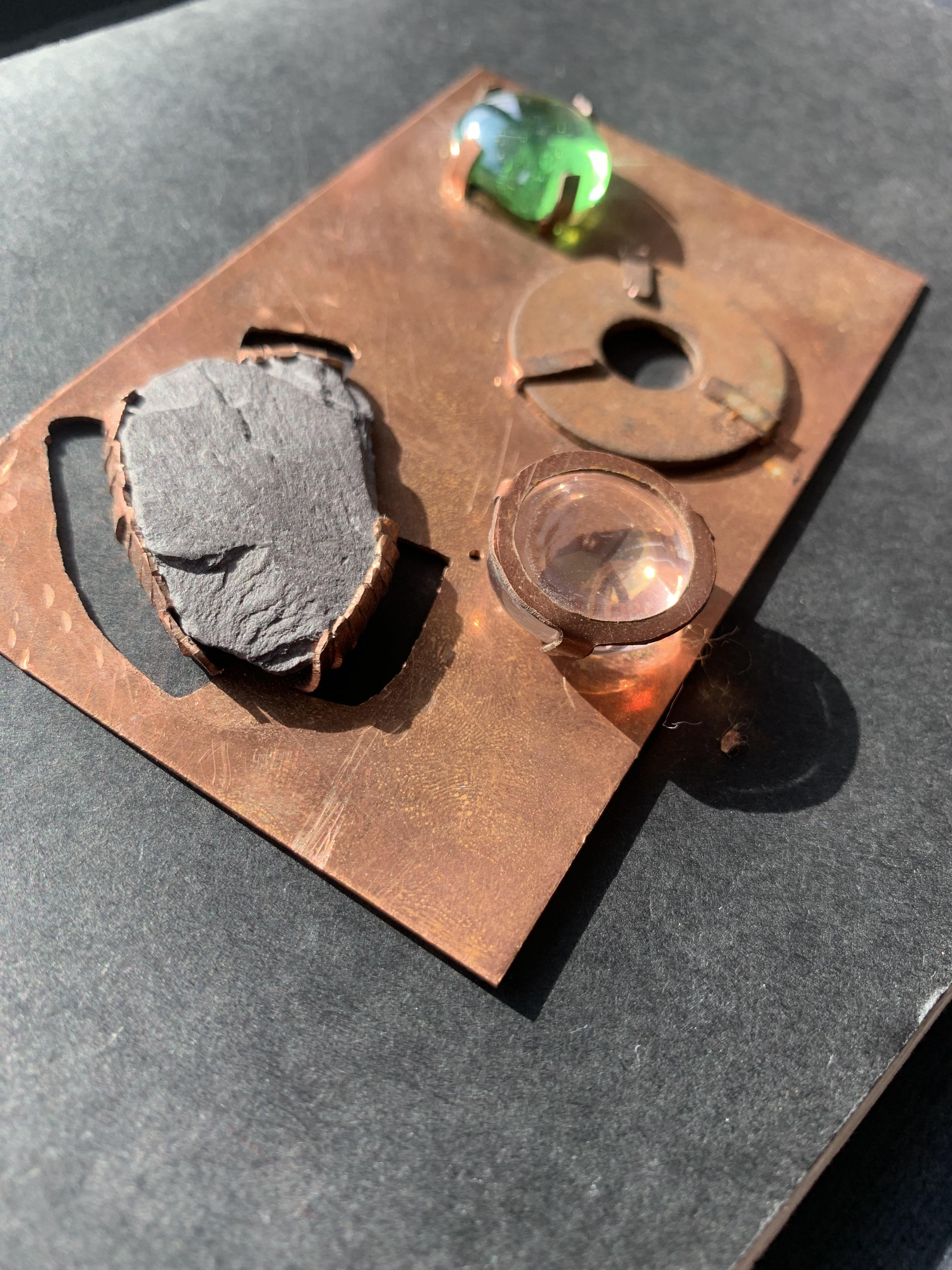

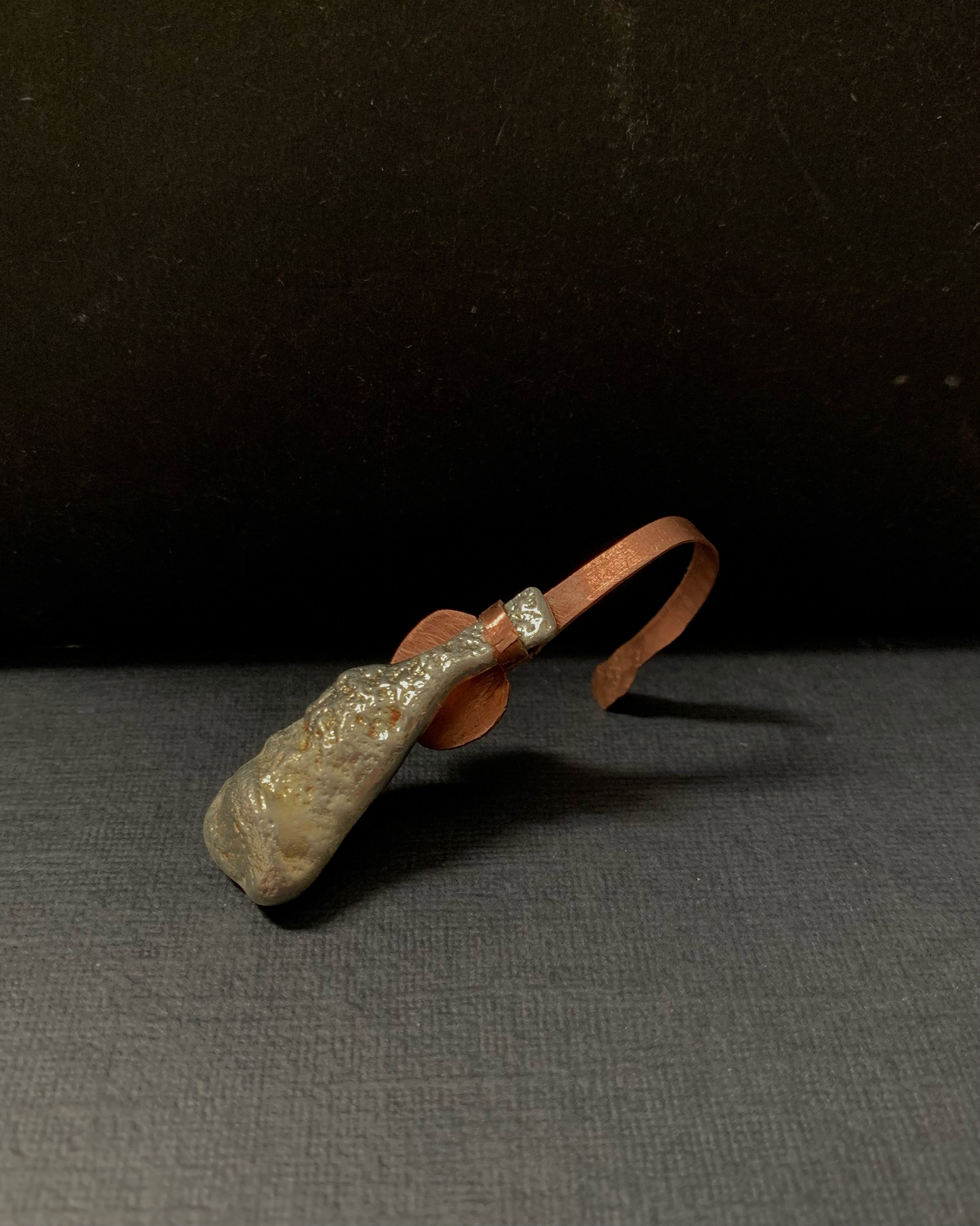
this piece is an extension of my stone setting, using copper sheet and a pewter casting which was poured into sand. by pouring it directly into the sand, the pewter picked up on the sand texture, i wanted to create this texture coping textures of my natural forms, having a very organic loose form of the pewter following the idea of a natural ring. using a collar method which wraps around the slimmest part (neck) of the pewter locking it into place restricting it from moving, this ring sits in-between the fingers and hangs from the back of the hand. this ring is as an extension of the hand. as like the rest of my work it works around the hand, i didn't want to create a piece that was solely for the fingers but explore parts of the hand that jewellery is never usually seen on. this brings focus to the back of the hand and celebrates the negative space on the hand- between the fingers.
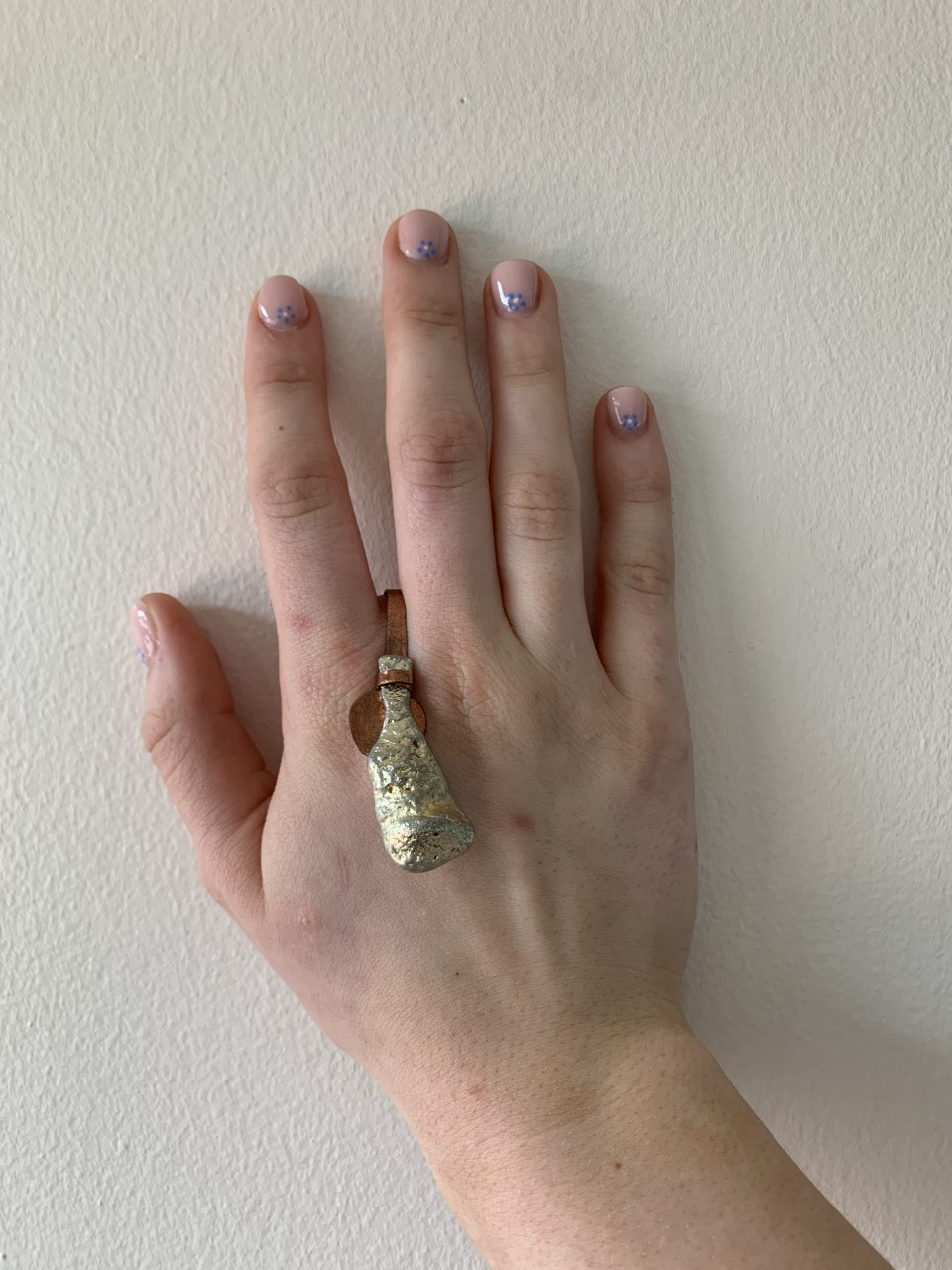
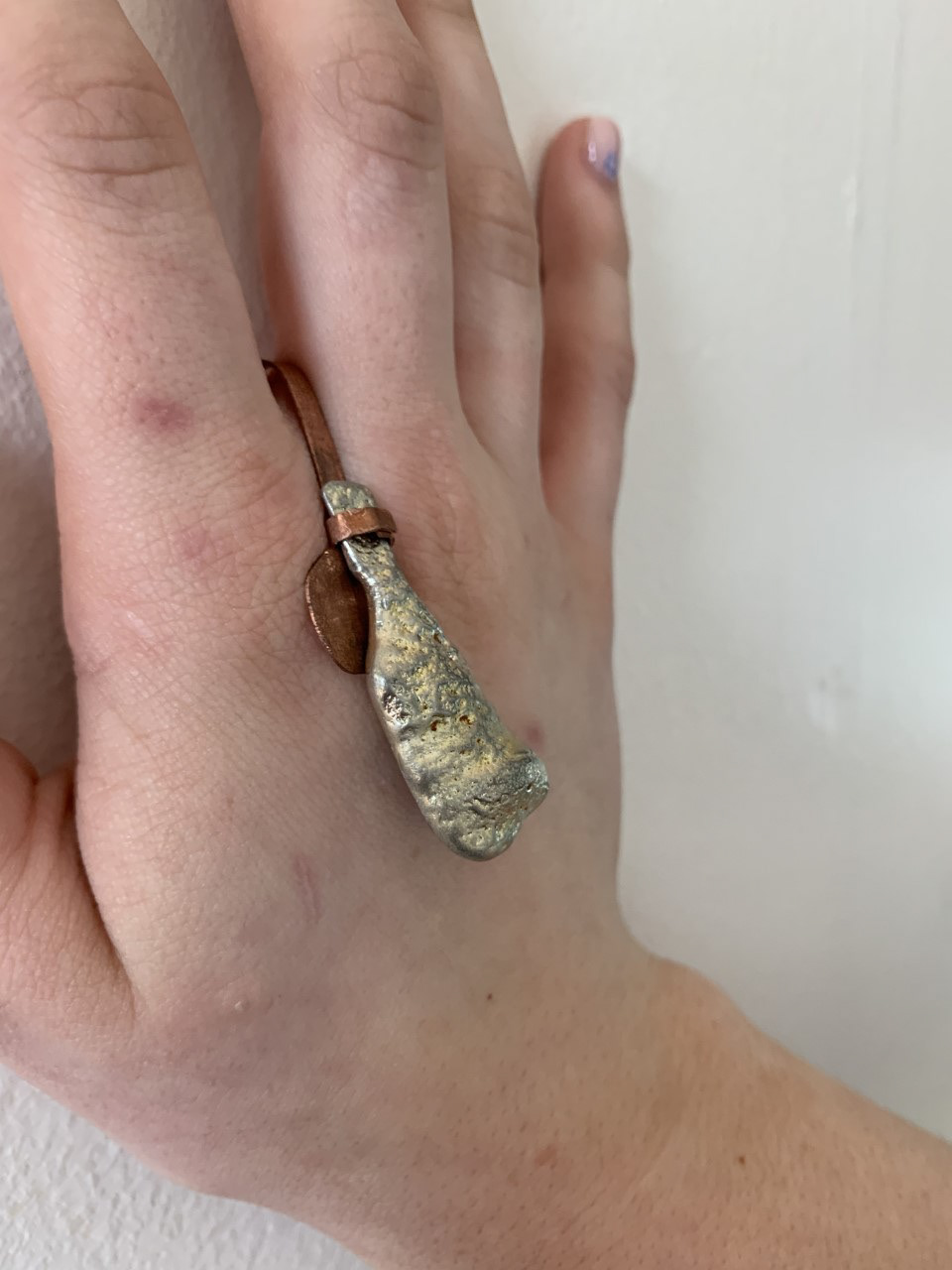
pewter factory visit
we visited the Sheffield pewter craft company which has over 40 years experience in the manufacture of all types of pewter gifts, from small castings to 2 pint tankards and 12 oz pewter hip flasks.
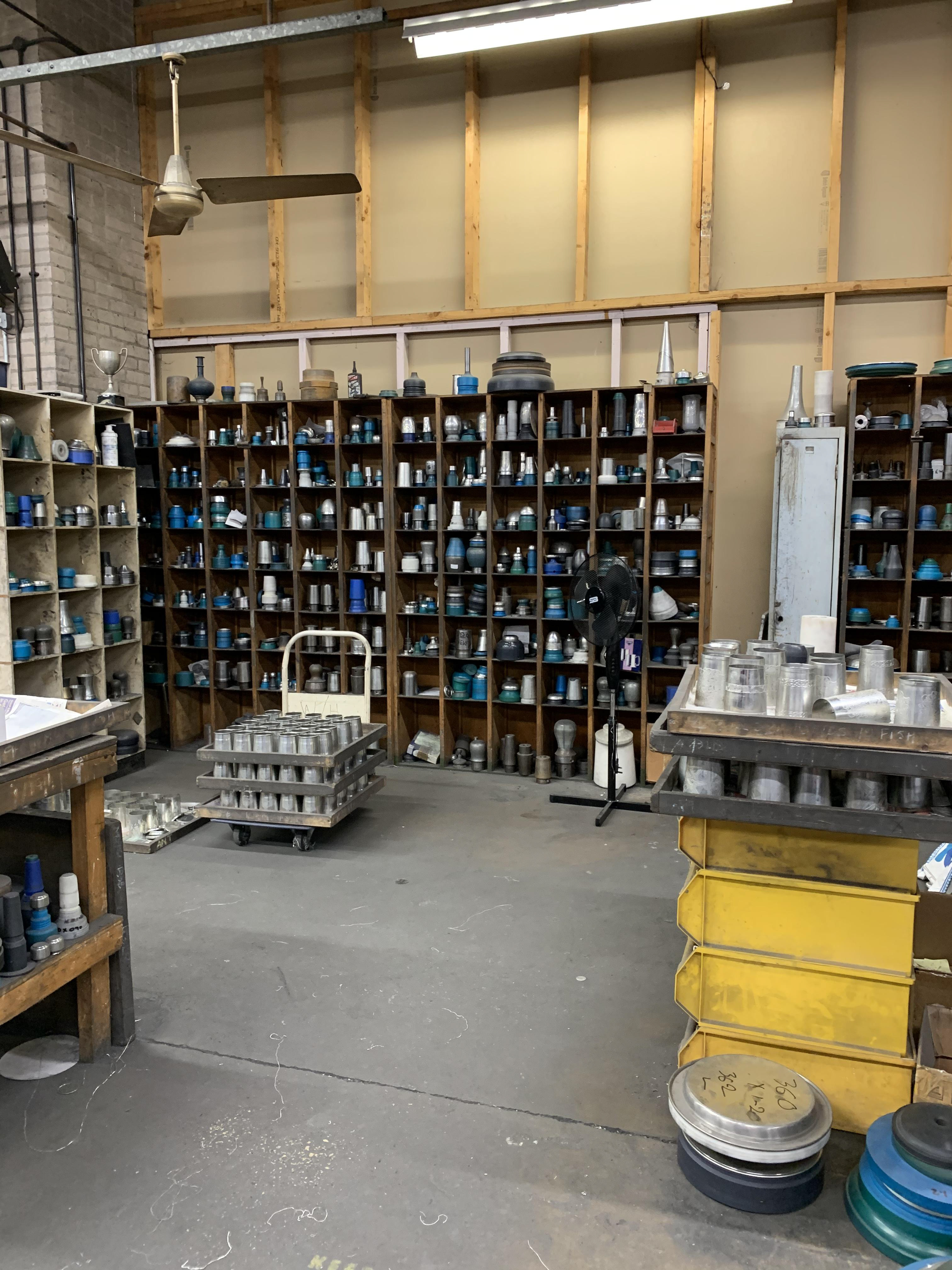
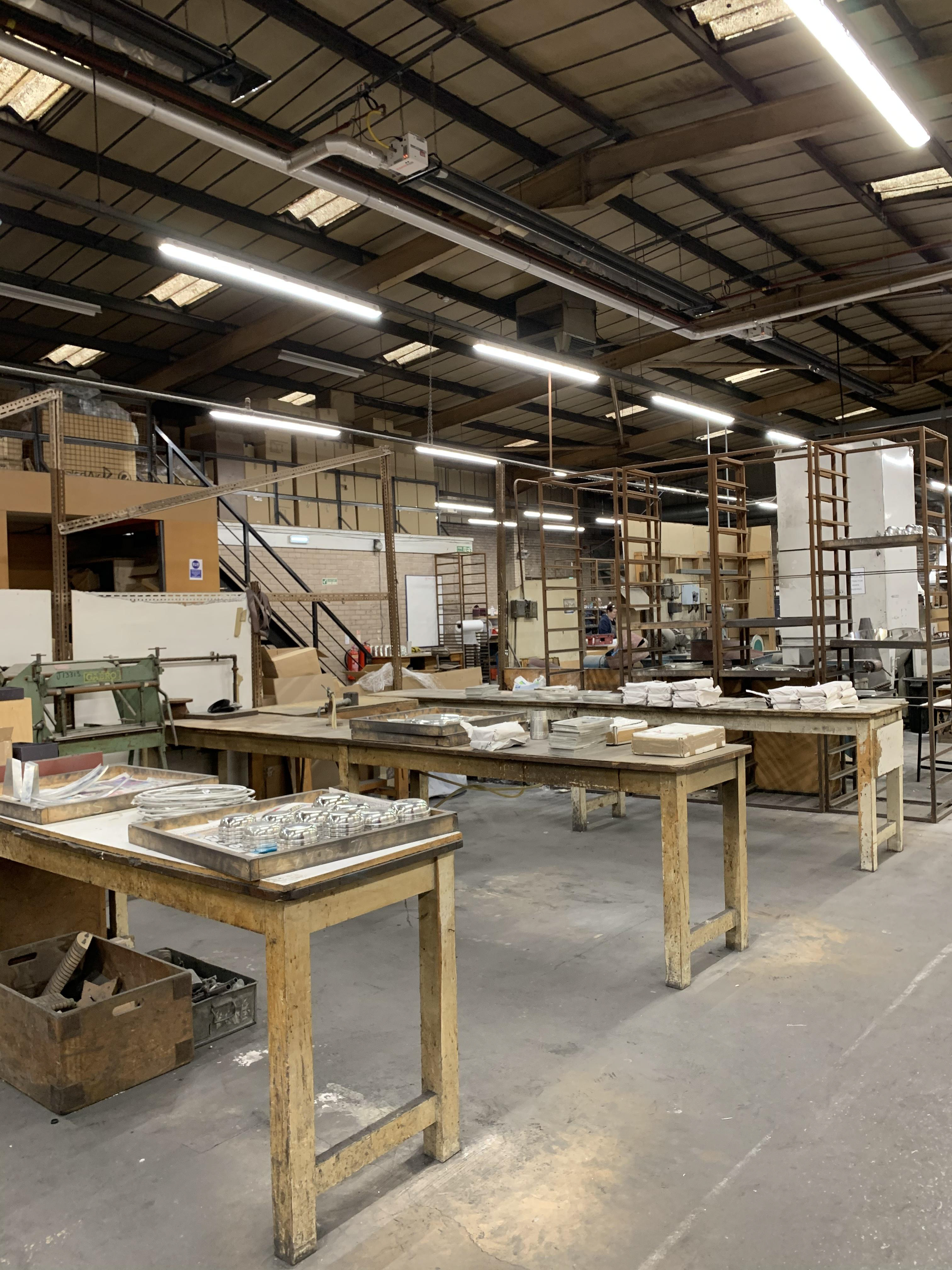
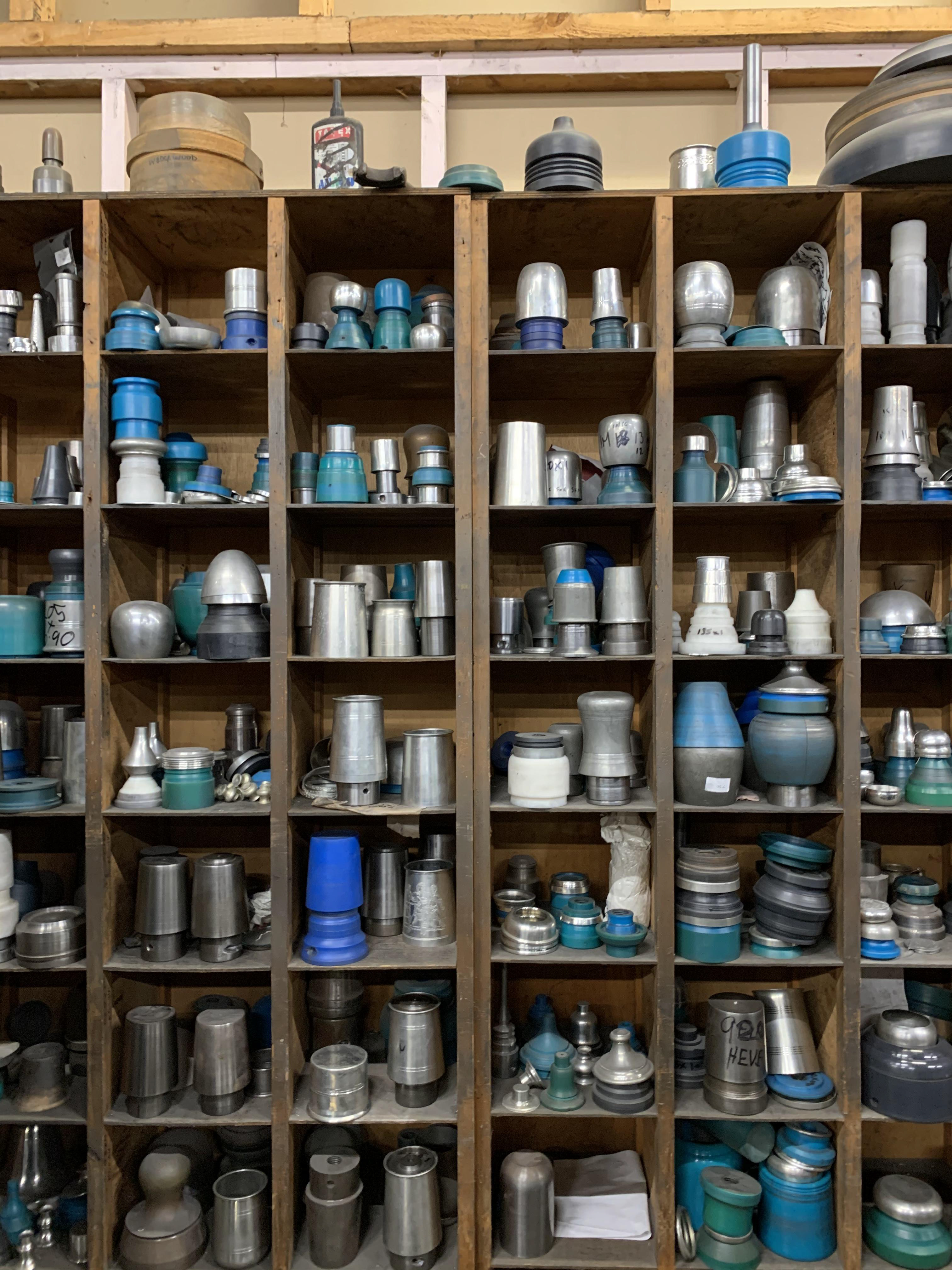

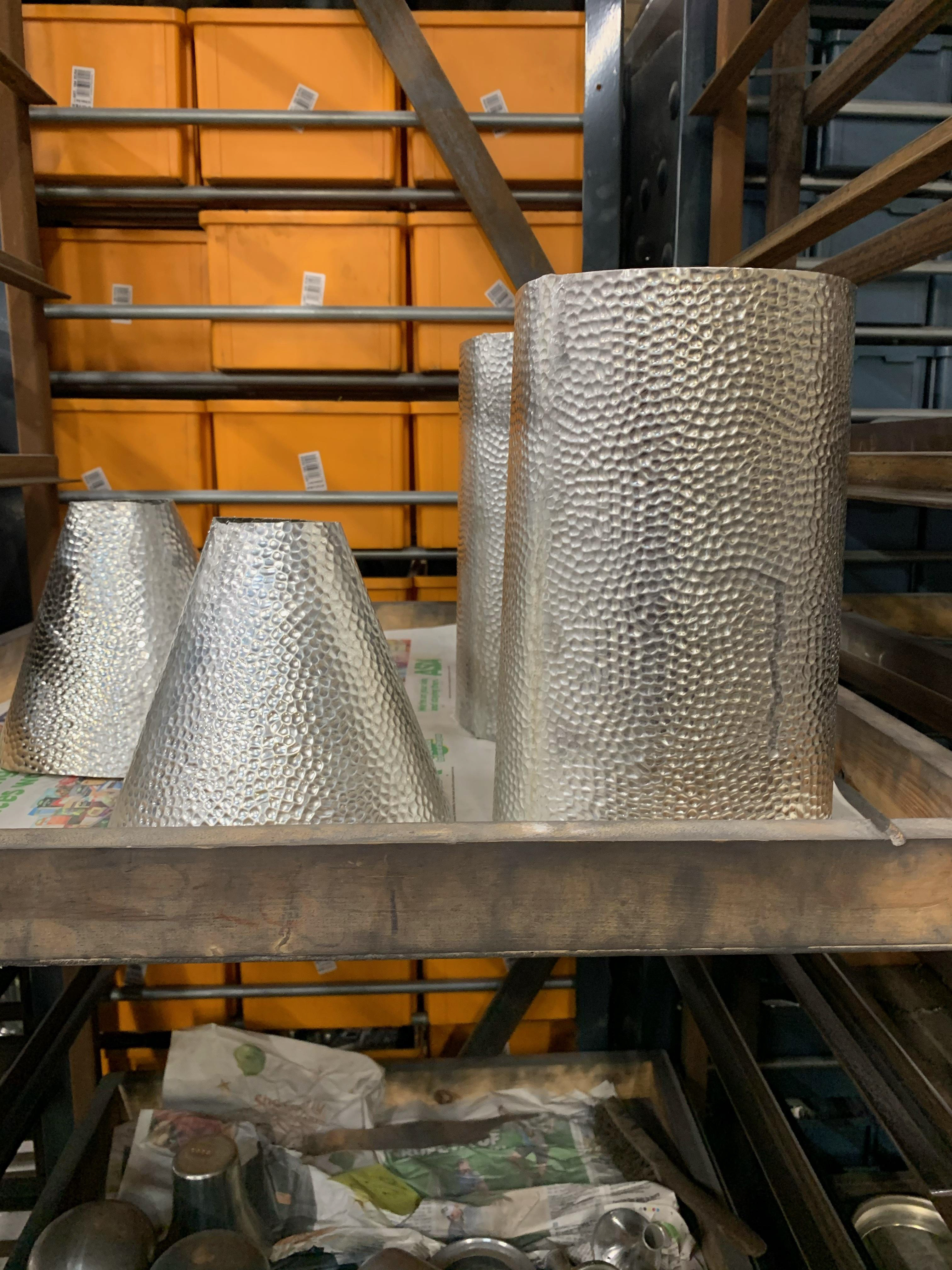
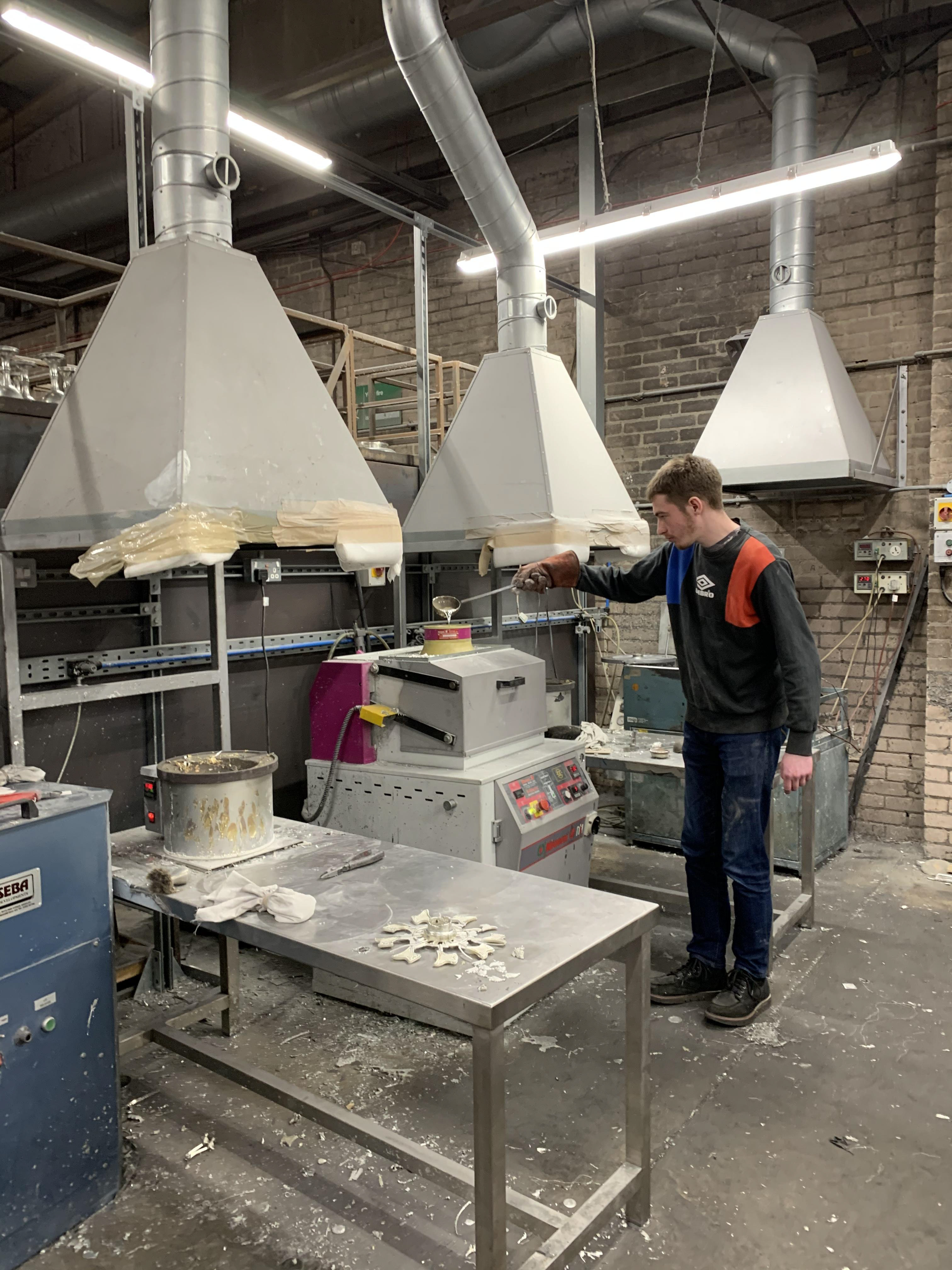
i found this trip really educational and interesting to see the process of pewter in a large production. seeing everyone's roles in the factory and the process they have made to be able to have a smooth run of products. i was also shocked to see everything still be made man made, i think in our society you imagine everything to be made by machines and technology and not have a traditional factory process.
cuttle fish casting
for this i experimented with cuttlefish casting with pewter, as we are using a cuttlefish bone it is resilient to high temperatures, making it an efficient and sustainable way to cast metals. using this technique also doesn't ruin the cast therefore you can reuse it many times until it slowly burns out or in my experience broke, this allows you to make lots of casting all differentiating a little bit each time showing same but different.
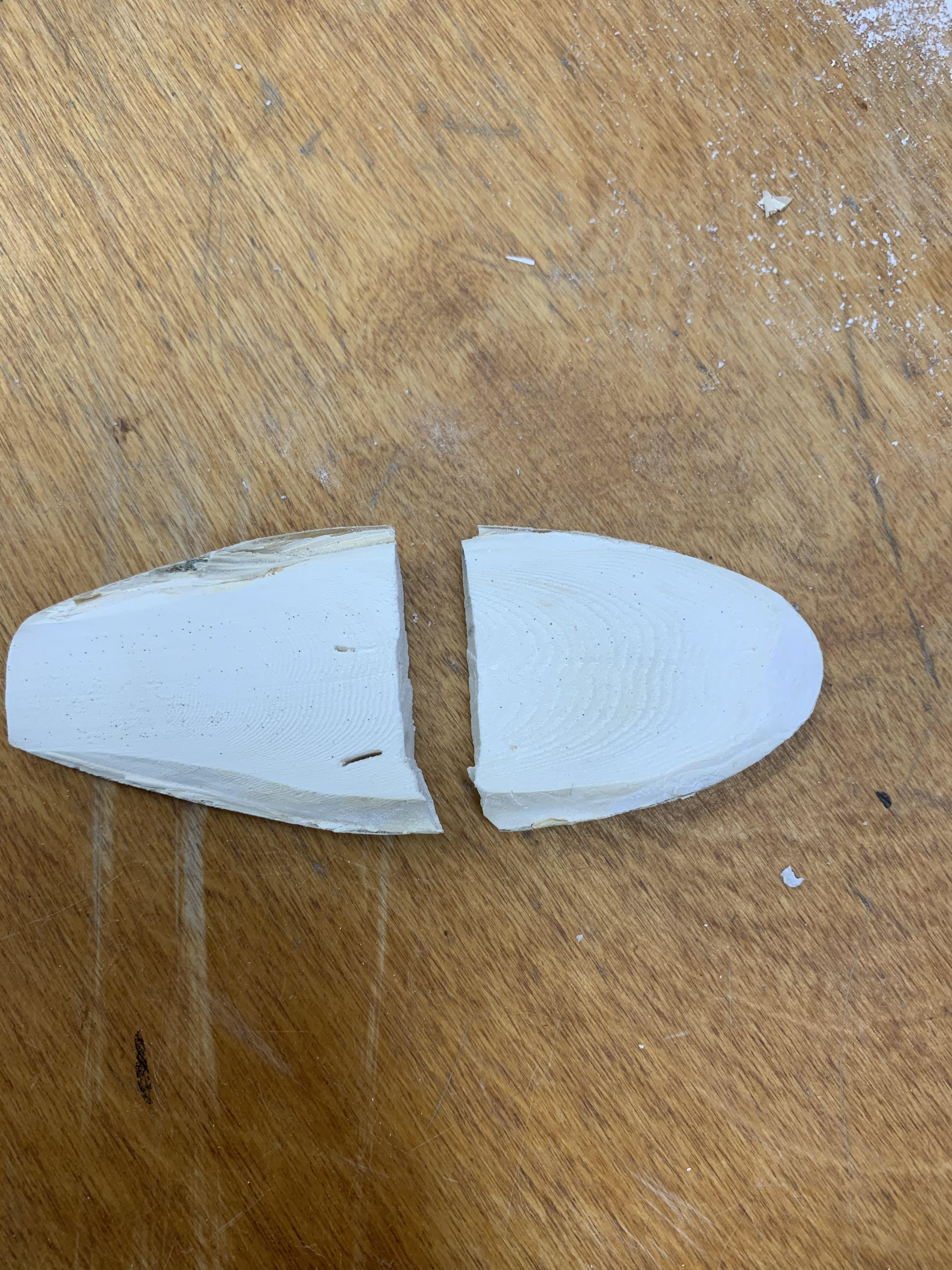
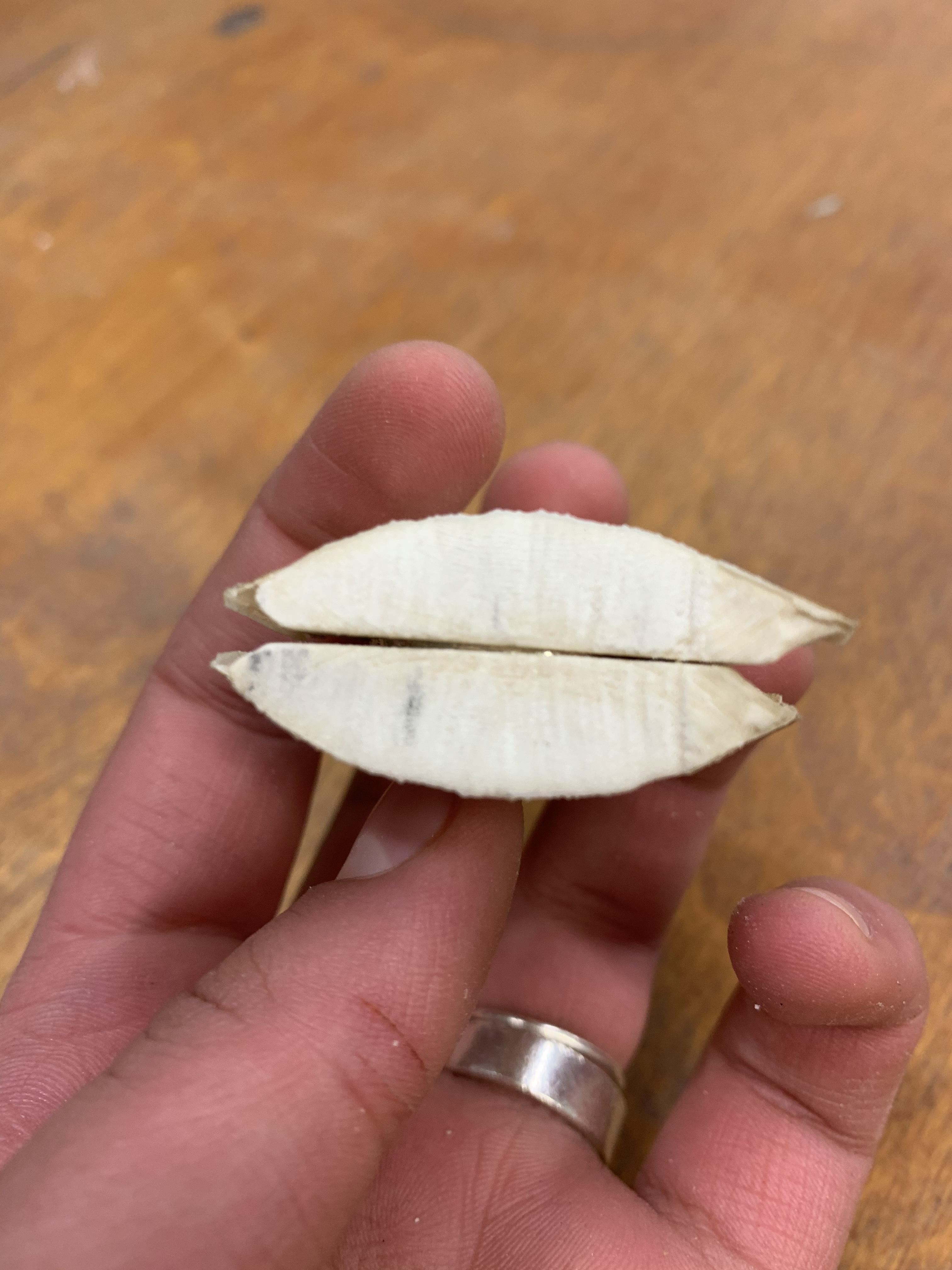
you first start with your cuttlefish and cut it in half so you have two pieces that fit together. using the soft side of the cuttlefish we sanded the bone down to create a flat surface to work on and so both pieces touched each other well. you needed to be careful with how much you cut down however, as if you want to create a deep mould you have to keep that in mind that it wont pierce through the whole piece of bone.
there are two ways to make the impression on the mould, you can carve away at the soft side we flattened with small files and nails or you can use an object and push it into the mould so it leaves an impression when taken out. as the bone is very porous its very easy to leave an impression and will pick up on small marks. for my first experiment i used an impression of a ring which i put in the centre of the piece and applied even pressure and then pressed the other half of the cuttlefish until they are touching with no gaps. once this impression was taken, i created marks with a small file to look like tree roots coming from the ground inspired by my natural forms. i did these carvings on each side so they over lap each other. i then lined up both the pieces and created a pouring sprue which connected from the ring to the top of the mould.
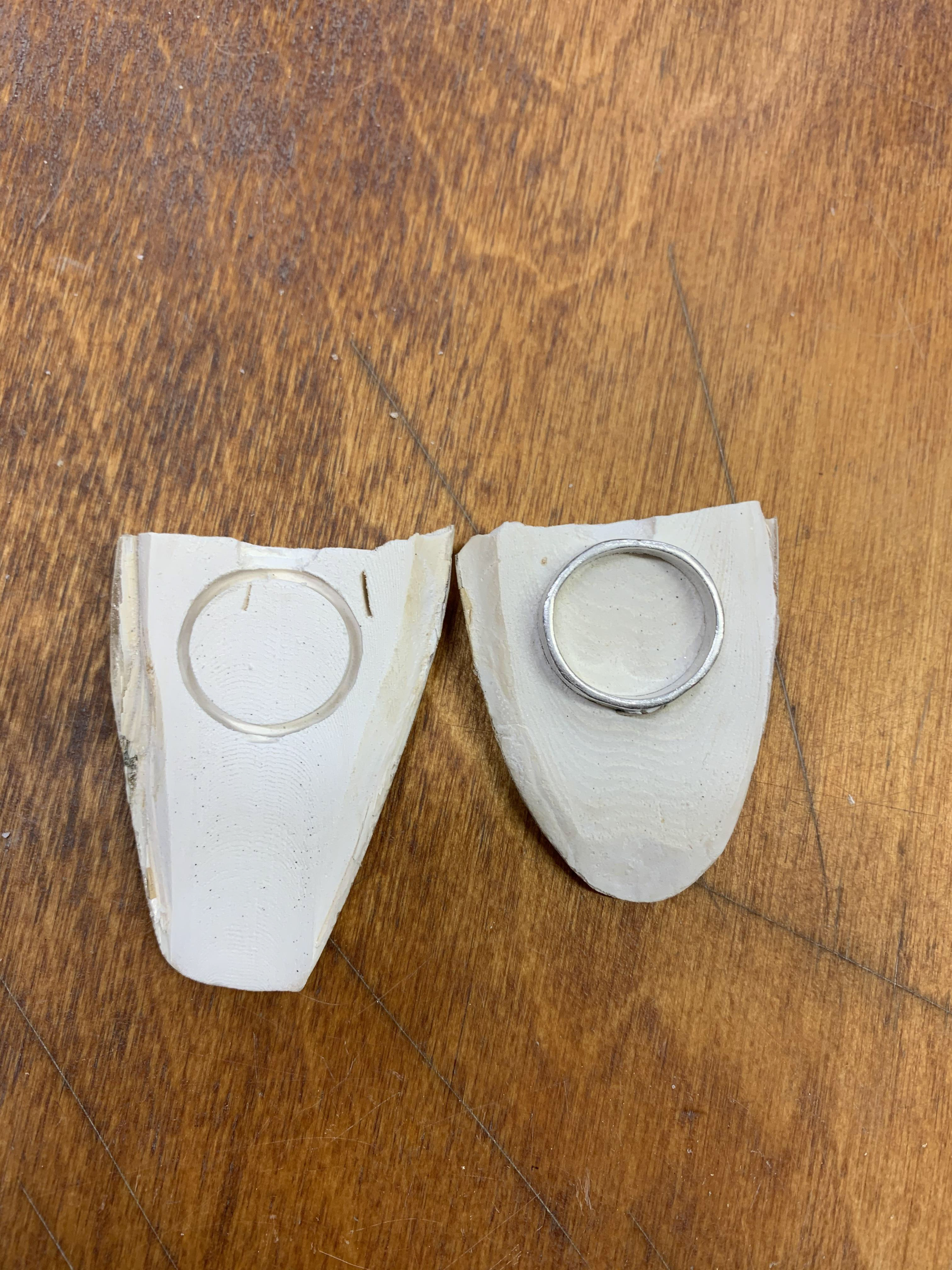

i then binded my cuttlefish with wire tightening it, making it as secure as possible, i found this challenging as sometimes i tightened the wire too much and it caused small cracks in the bone, i also learned form my first cast that aligning the two parts of the cast is really important as if they don't line up they will be out of position, therefore for my following casts i put in a small bit of wire in the soft side which inserted to both sides allowing it to line up.
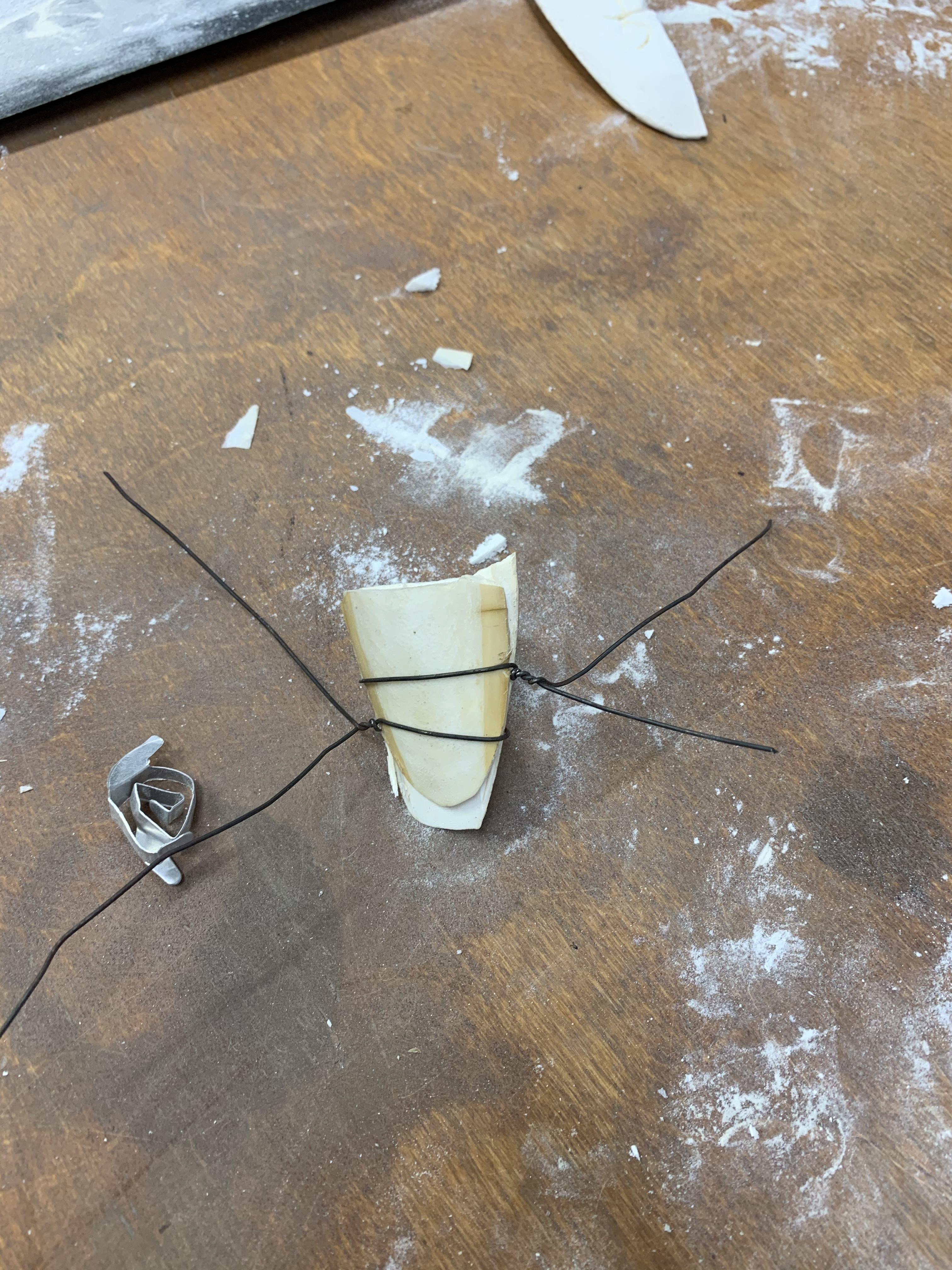
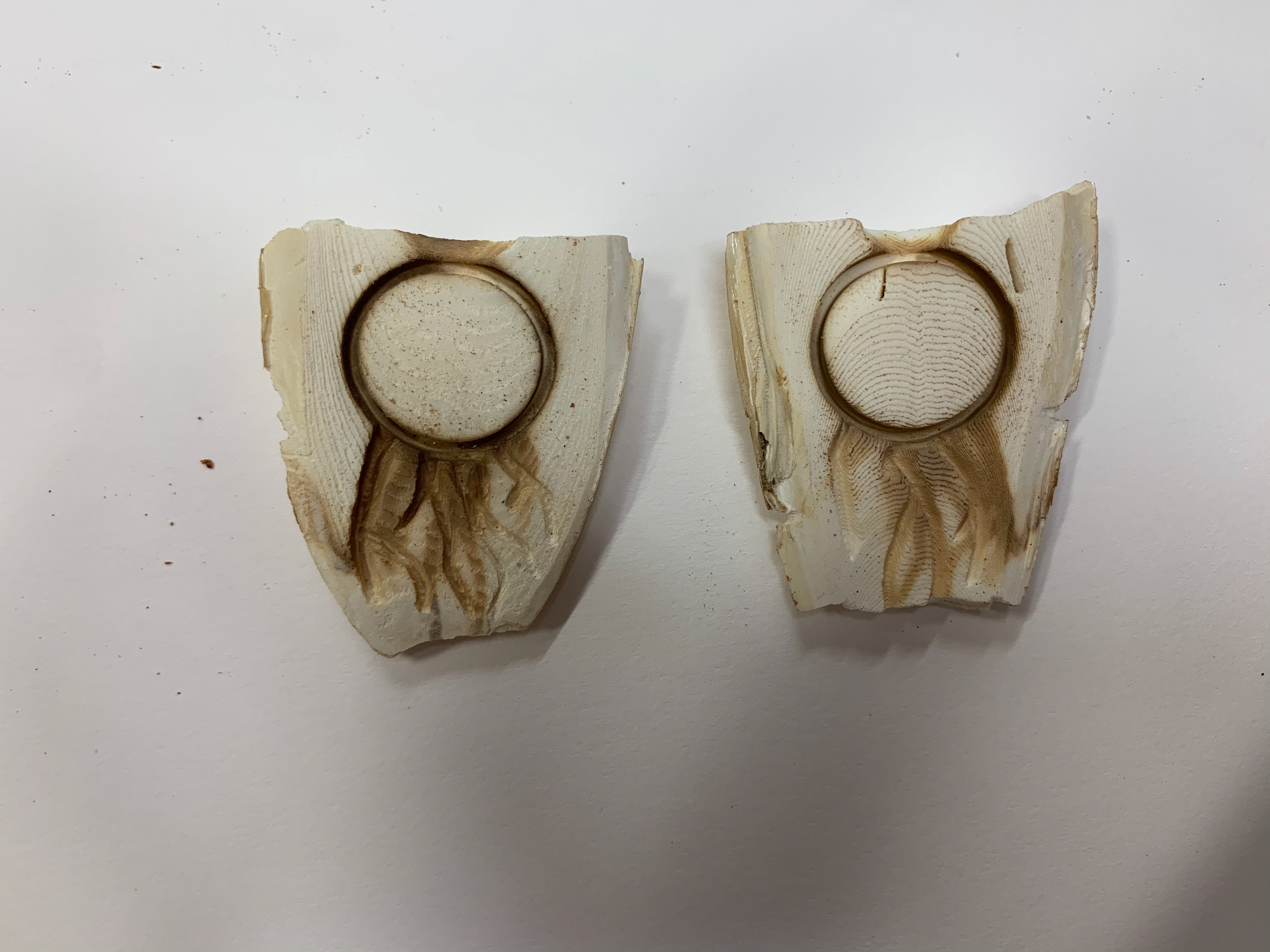
we were casting with pewter, the advantage of this is that its a cheap metal for casting compared to silver or bronze. it also has a much lower melting point around 230 degrees which means it doesn't cause much damage or burn to the cuttlefish bone allowing you to do multiple pours. although they will change, they will use the same mould. the image above shows my cuttlefish bone cast after the fist pour, you can see the burn to the surface however the mould is still there.
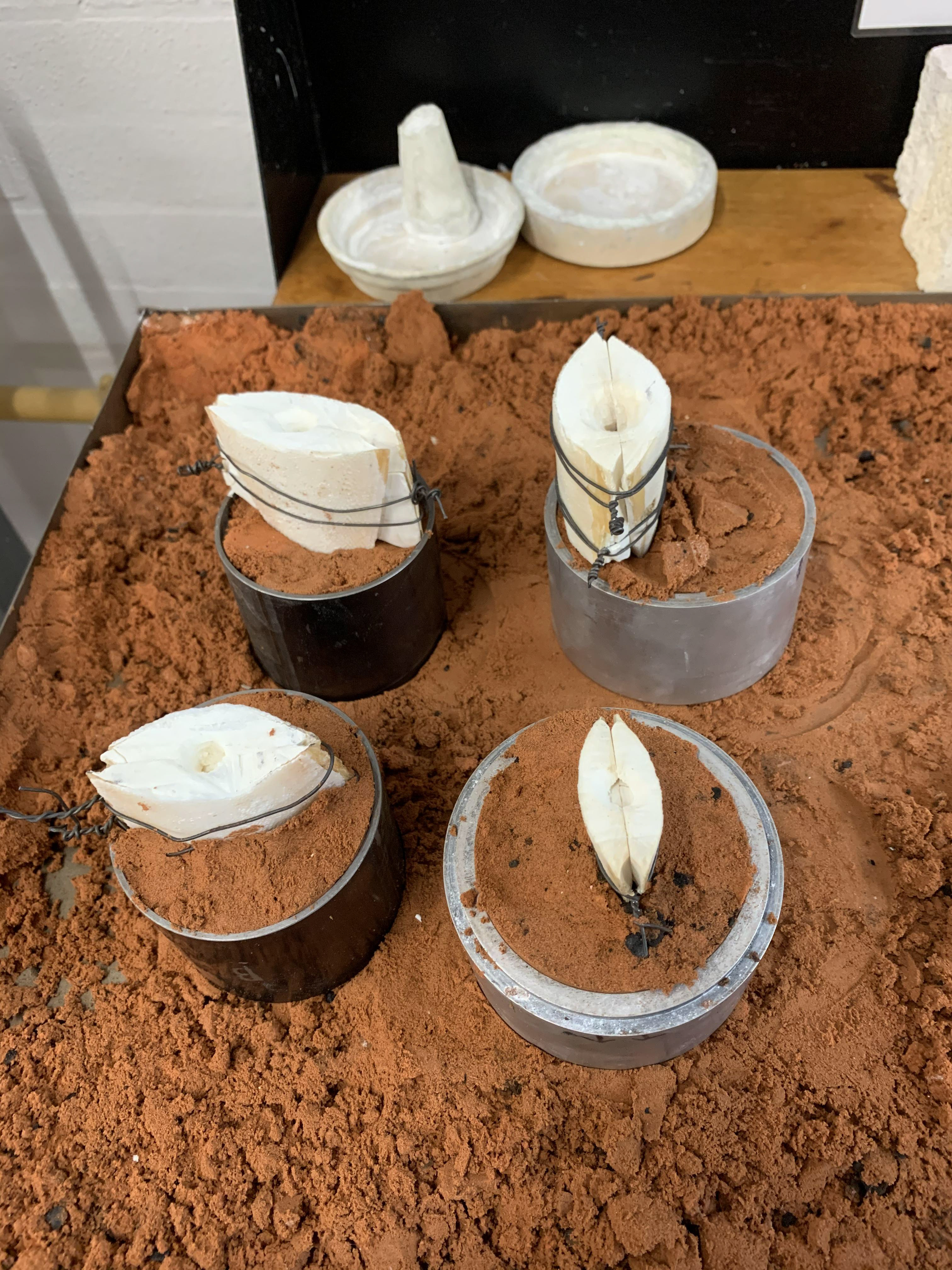
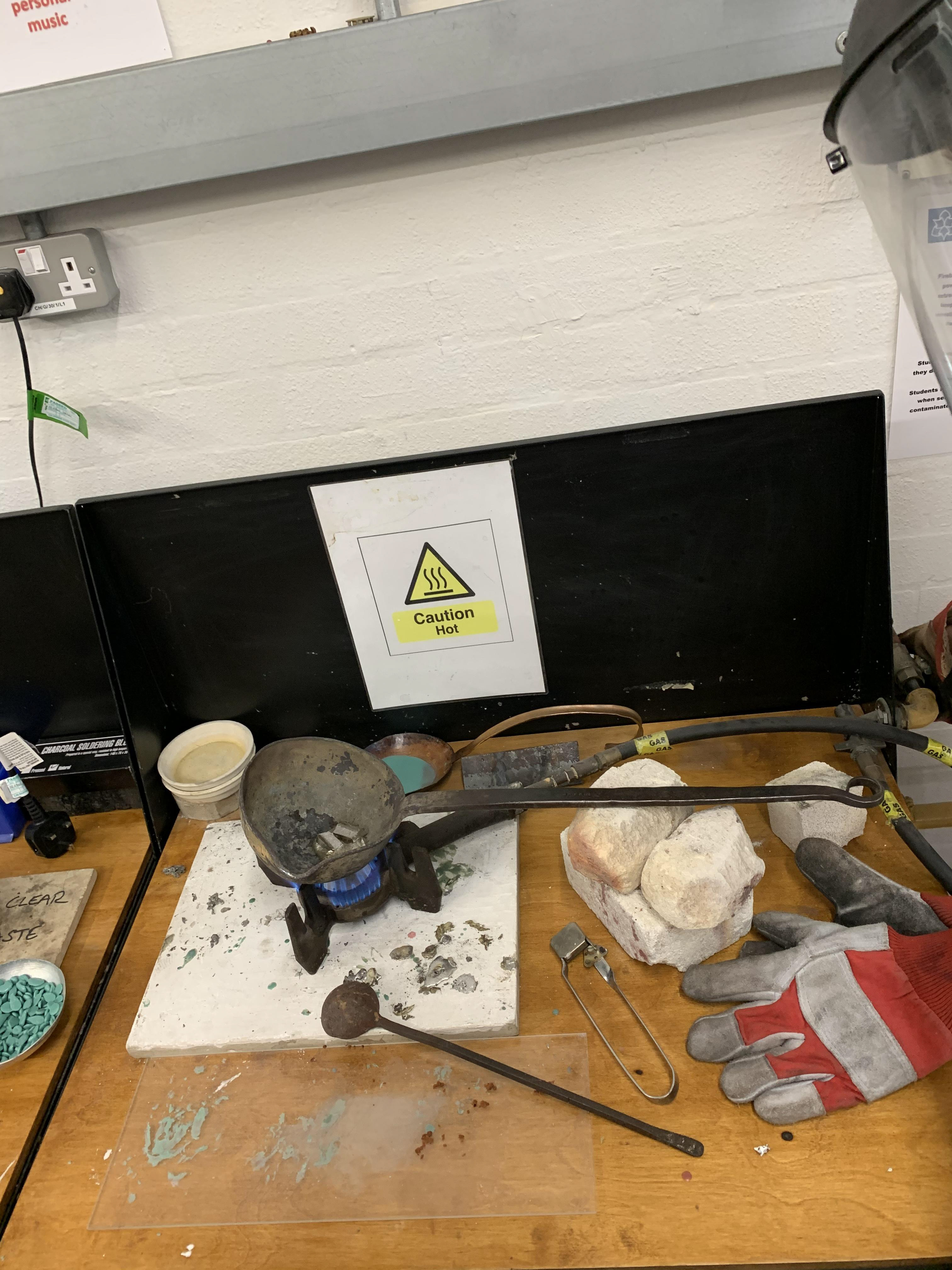
we casted in a a sand box this allowed the sand to hold our cast securely and if any over split didn't burn any other surfaces. using the sand also allows us to compact it as after my fist pour, i broke the mould whilst getting the pewter out, but having the sand i could compact the sand blocking up any of the cracks and holes it created allowing me to keep the cast and not waste all my pewter.
the image above is of my first pour. as you can see i didn't tighten the bindings tight enough which meant it leaked out the bottom and out through the sides. the large bit of pewter at the bottom left the cast and took an imprint of the sand it was buried in picking up its texture. if i compacted the bone more in the sand not allowing any space for the pewter to move, the leakage wouldn't have been possible. as it leaked and wrapped around both the cuttlefish bone i had to break it off which means on my next pour i needed to be very precise with placing it in my sand box and compacting it down otherwise it would just run though and take the in-print of the sand below.

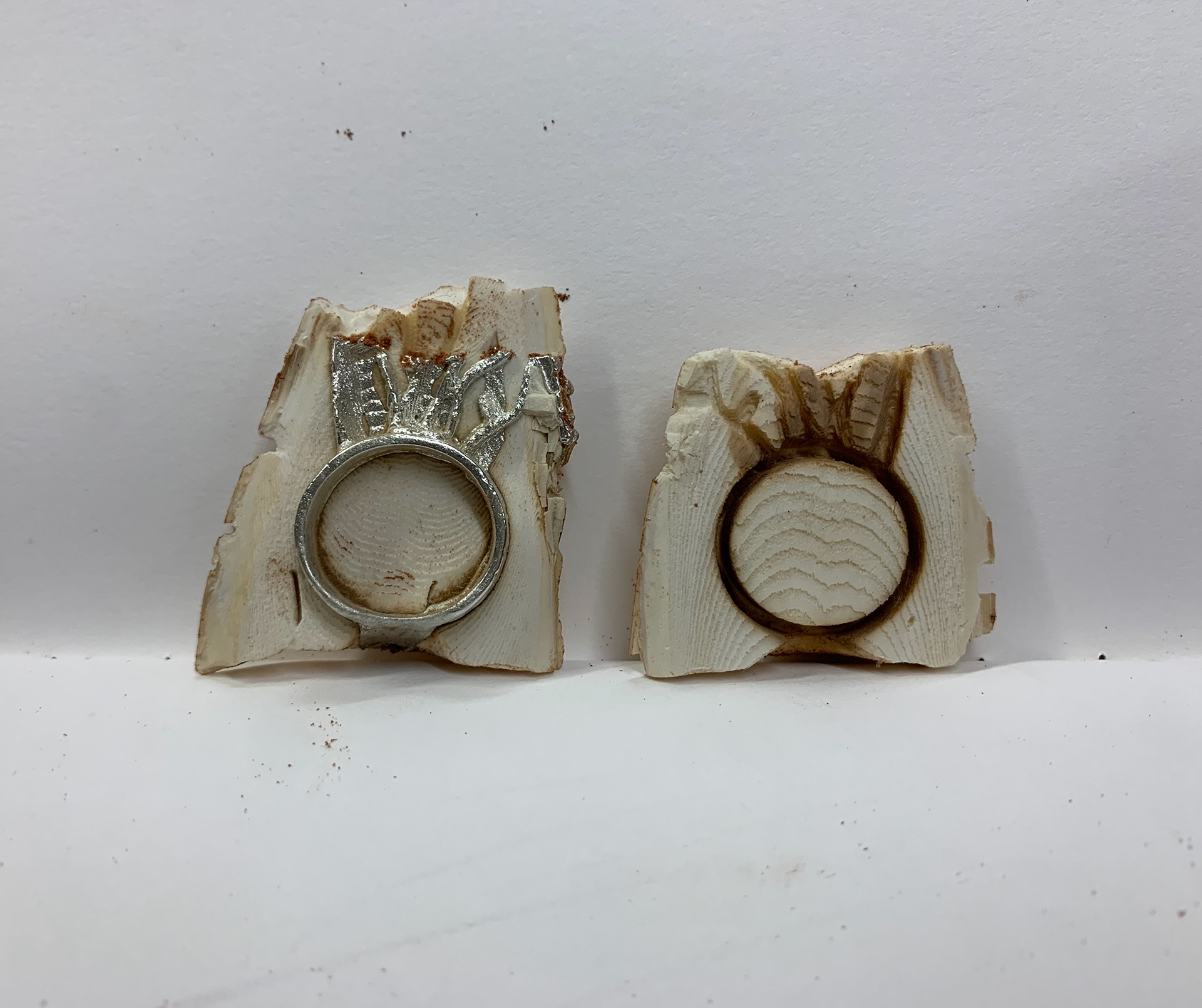
i really love using cuttlefish bone as its a porous material the pewter picks up on the very delicate textures which adds a lot of character and detail to the piece. this can if wanted be sanded down however I thought for my pieces looking into the natural form it gave a very organic texture.
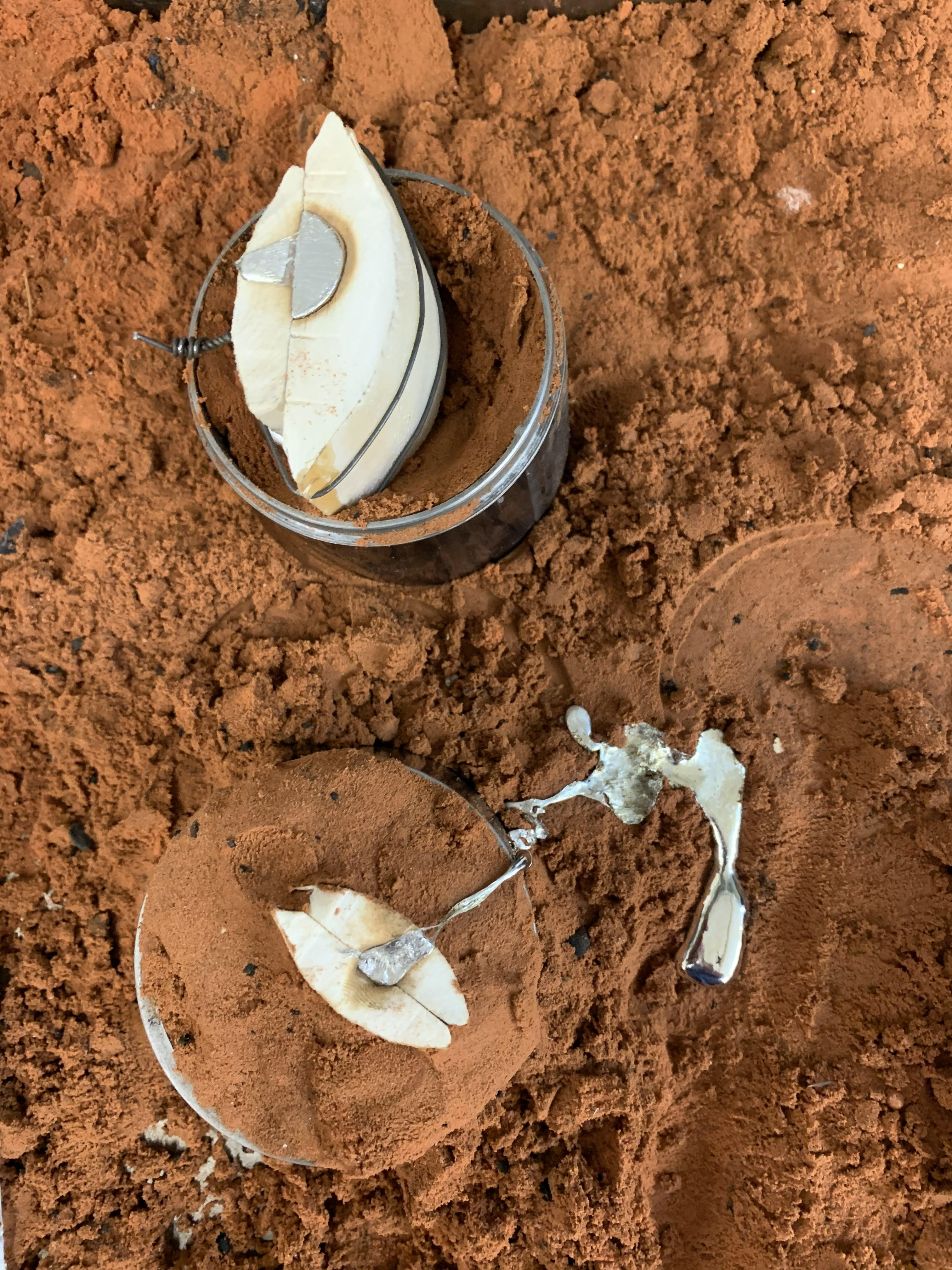
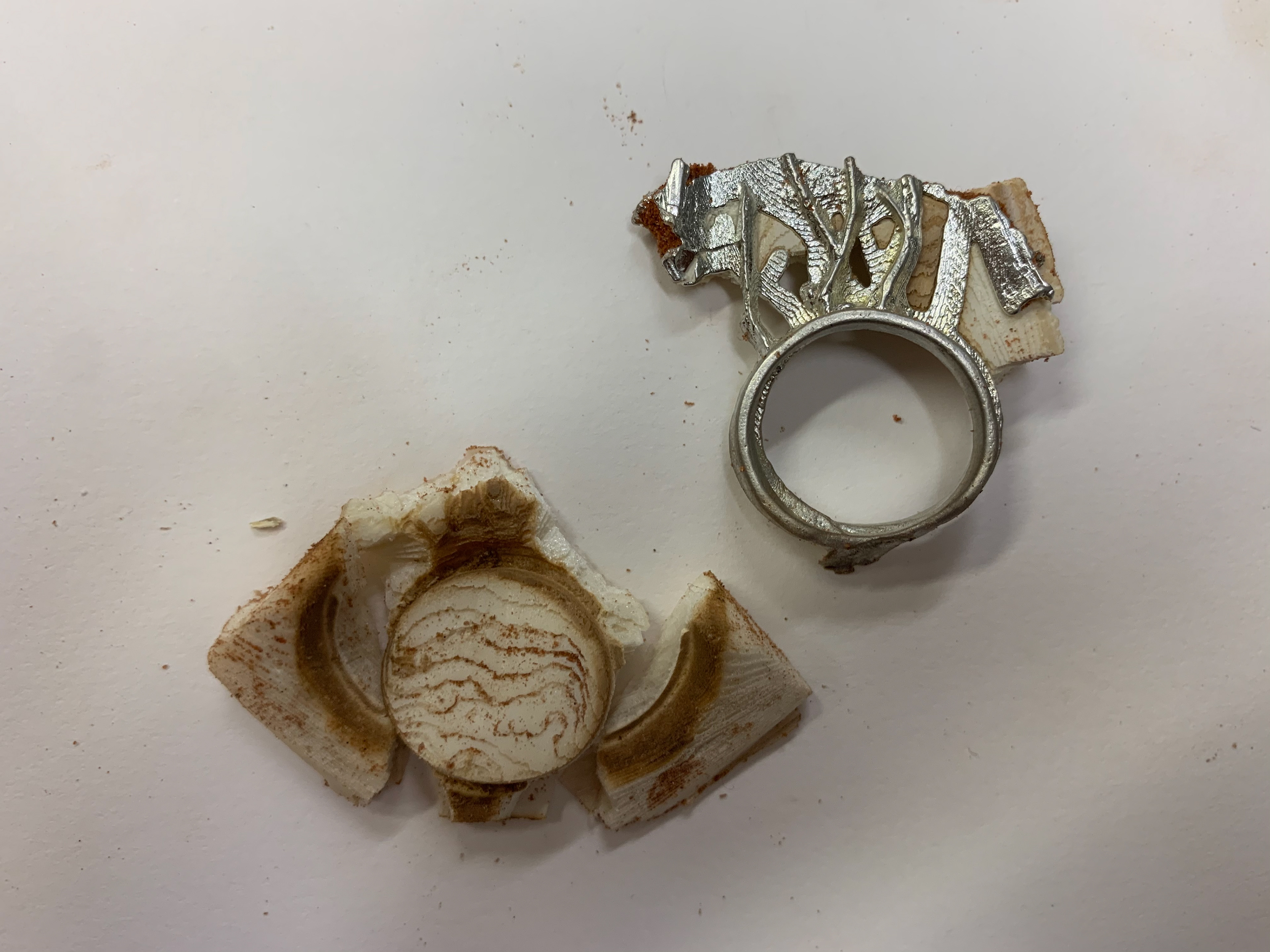
unfortunately after my third pour my cast got stuck to the pewter therefore i had to break it apart to get my final ring out i think this was because it had cracks in it before so the pewter was leaving the cast holding binding the cuttlefish bone to the pewter ring.
a COLLECTION OF ALL MY BINDING WIRES I COLLECTED THROUGH ALL MY PEICES.
a collection of the class cuttlefish bone moulds
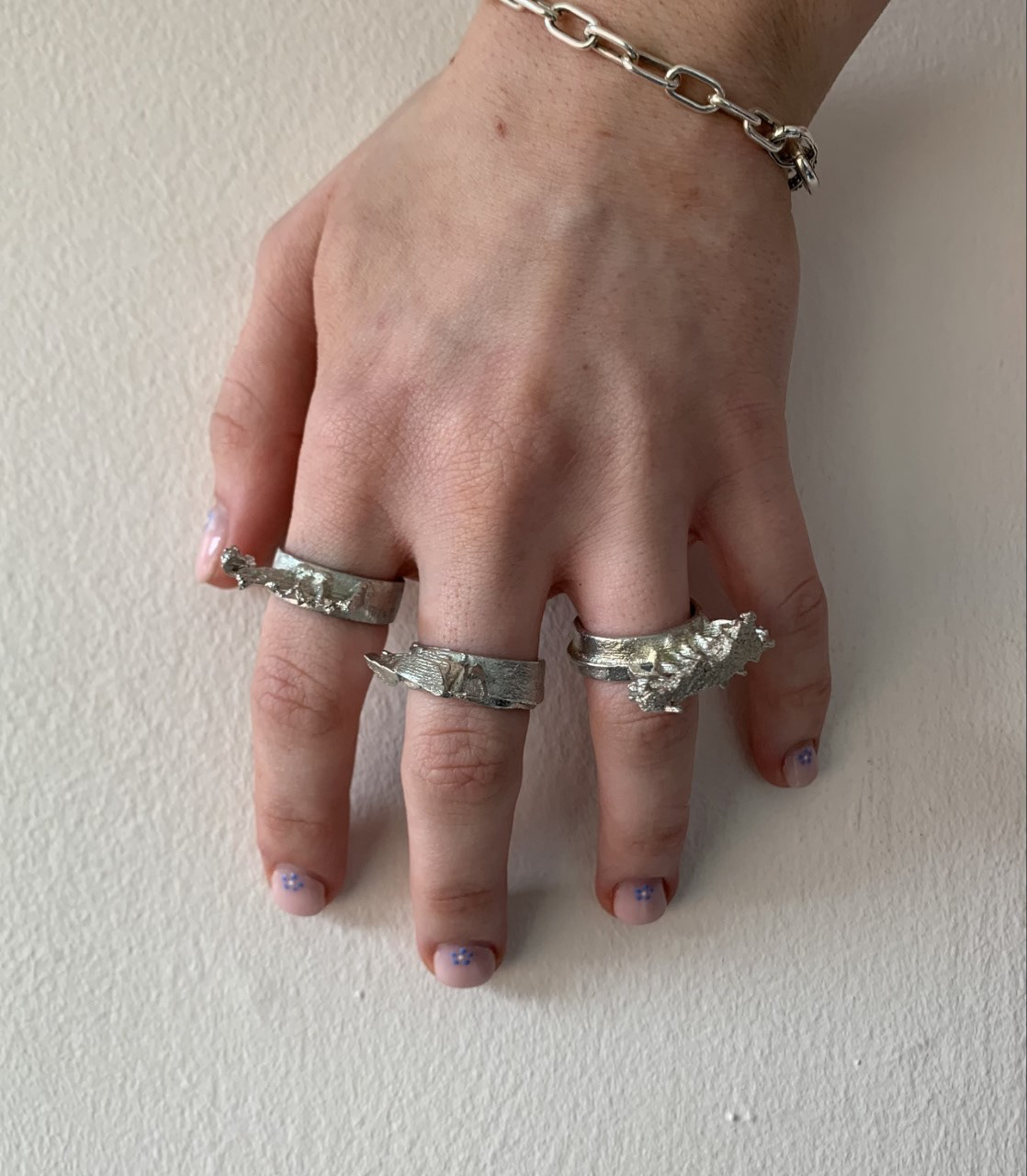


planning same but different
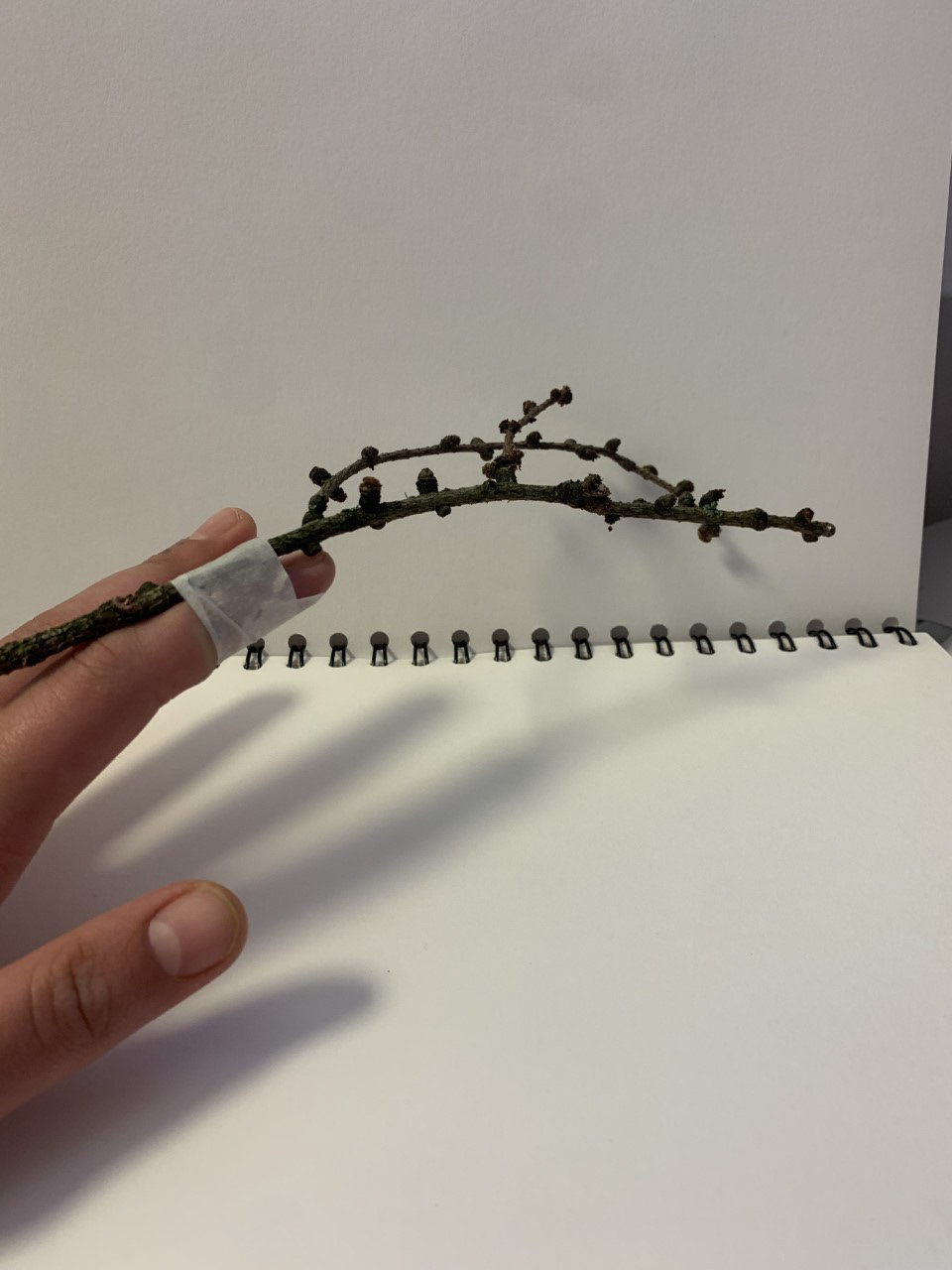
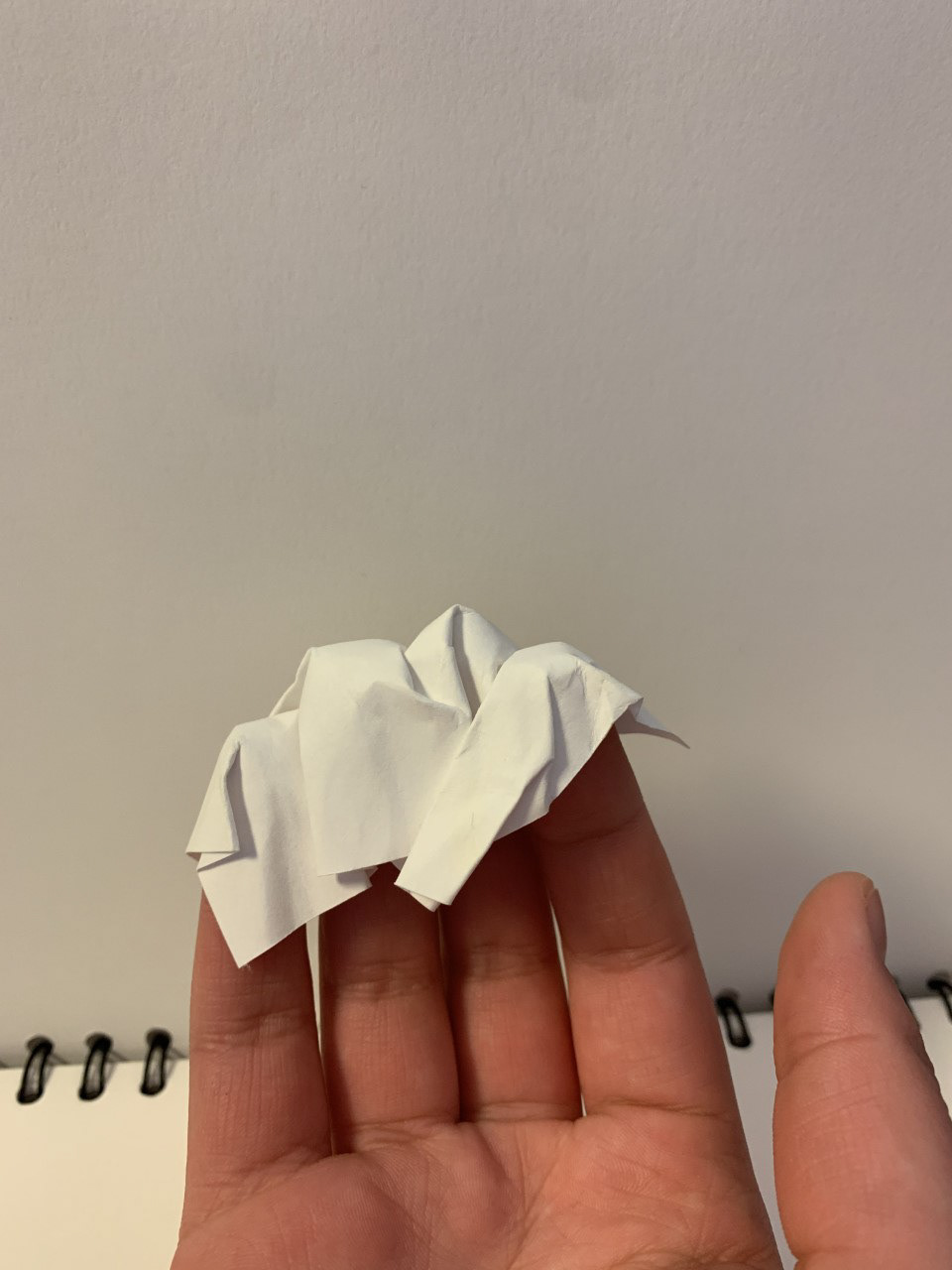
for this ring i was looking into the textures of bark on trees, looking into the patterns they have. from this I created a ring that had cut-outs similar to these patterns, interlinking with a variety of sizes and shapes. I cut these out on a sheet of coper, leaving a gap clear in the middle. with the cut out process I had to be very patient and delicate with my work. drilling a hole for each cut out and having good control on a piercing saw as they were all very close together. with these cut out i was then able to bend both of the halves around a ring stake. bending it to my desired size on both side creating a double sided ring that fits in-between the fingers. by having these cut out it made the metal very week as there was so little strength to it. this meant that it was very malleable to work with.
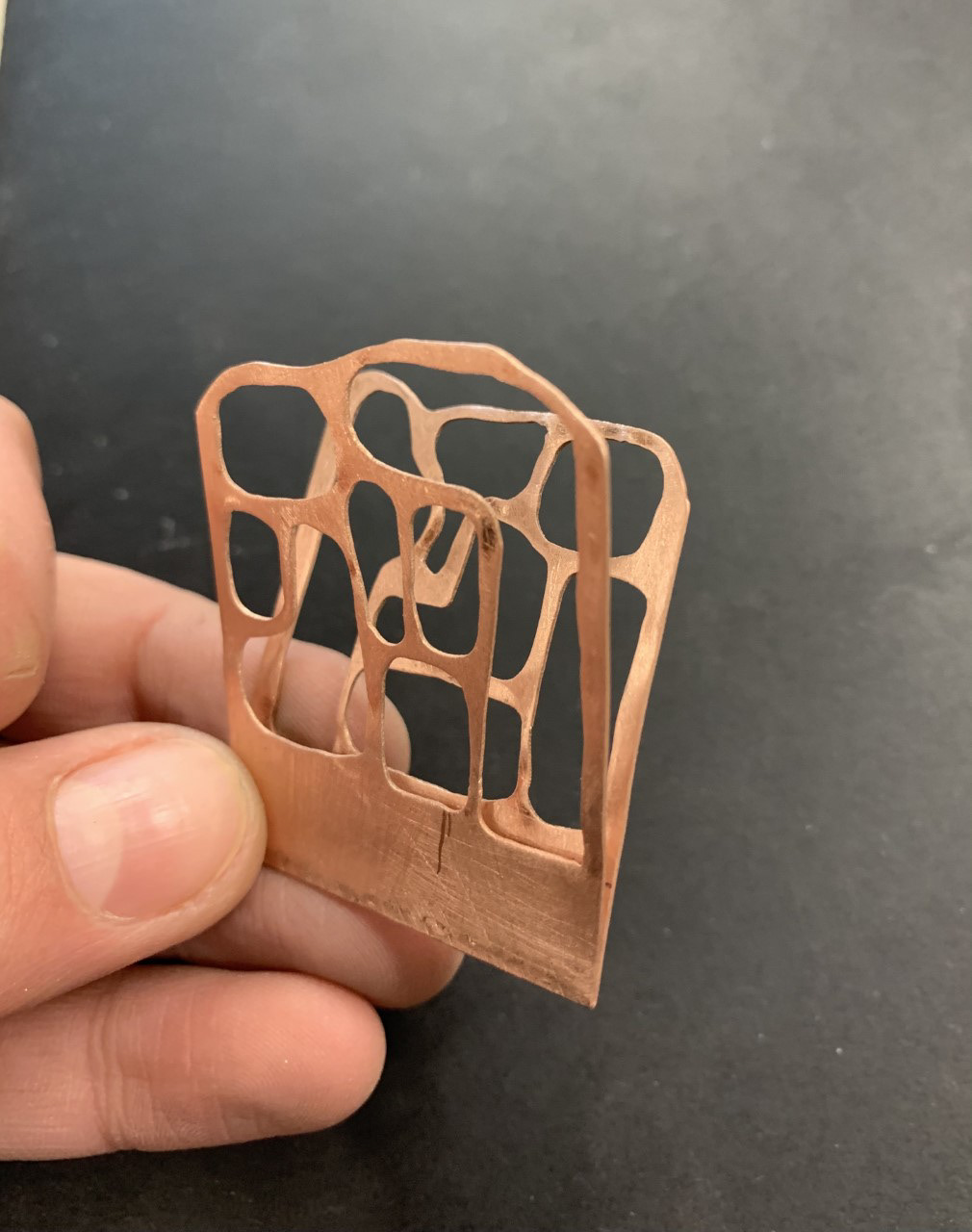
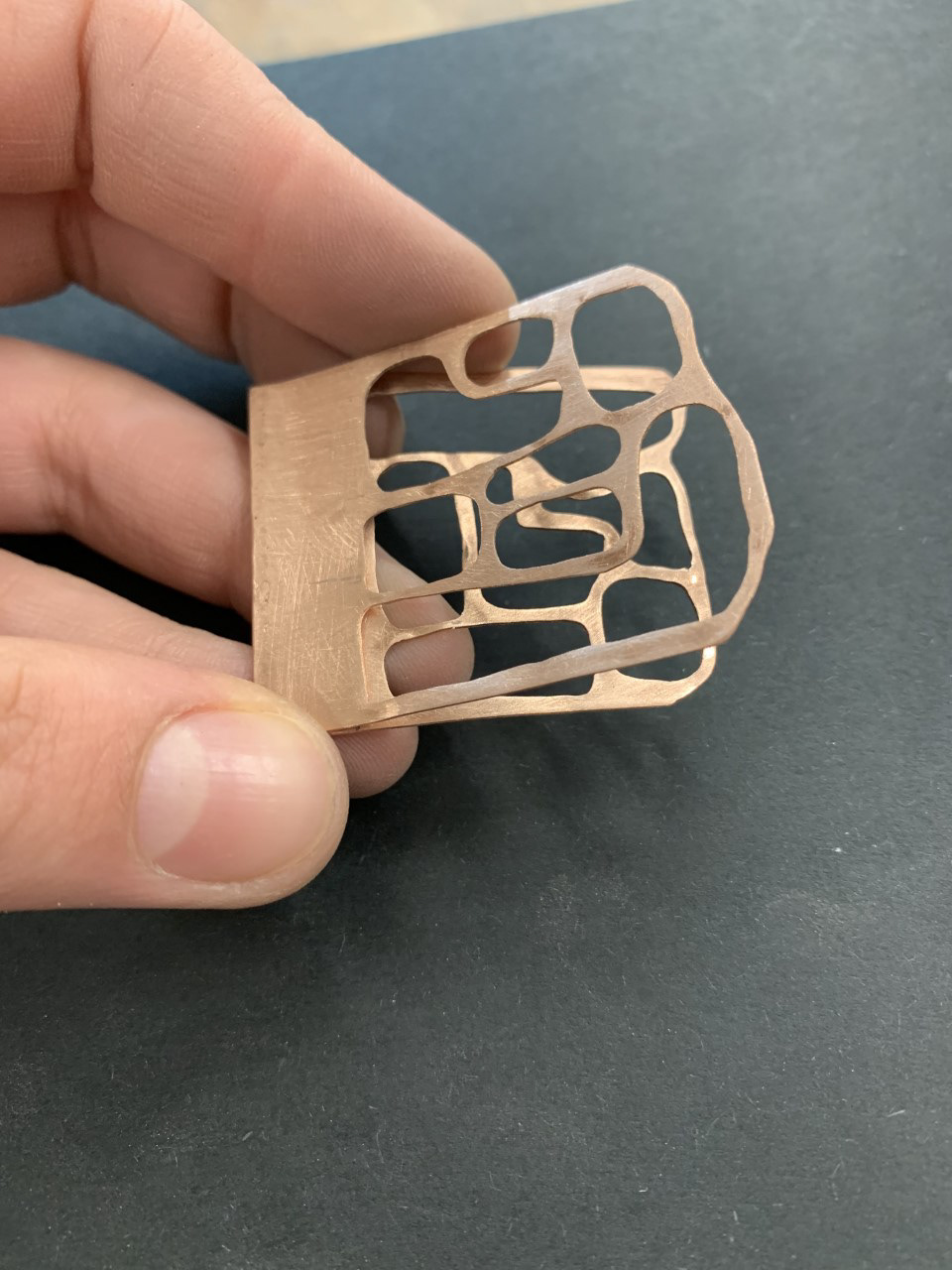
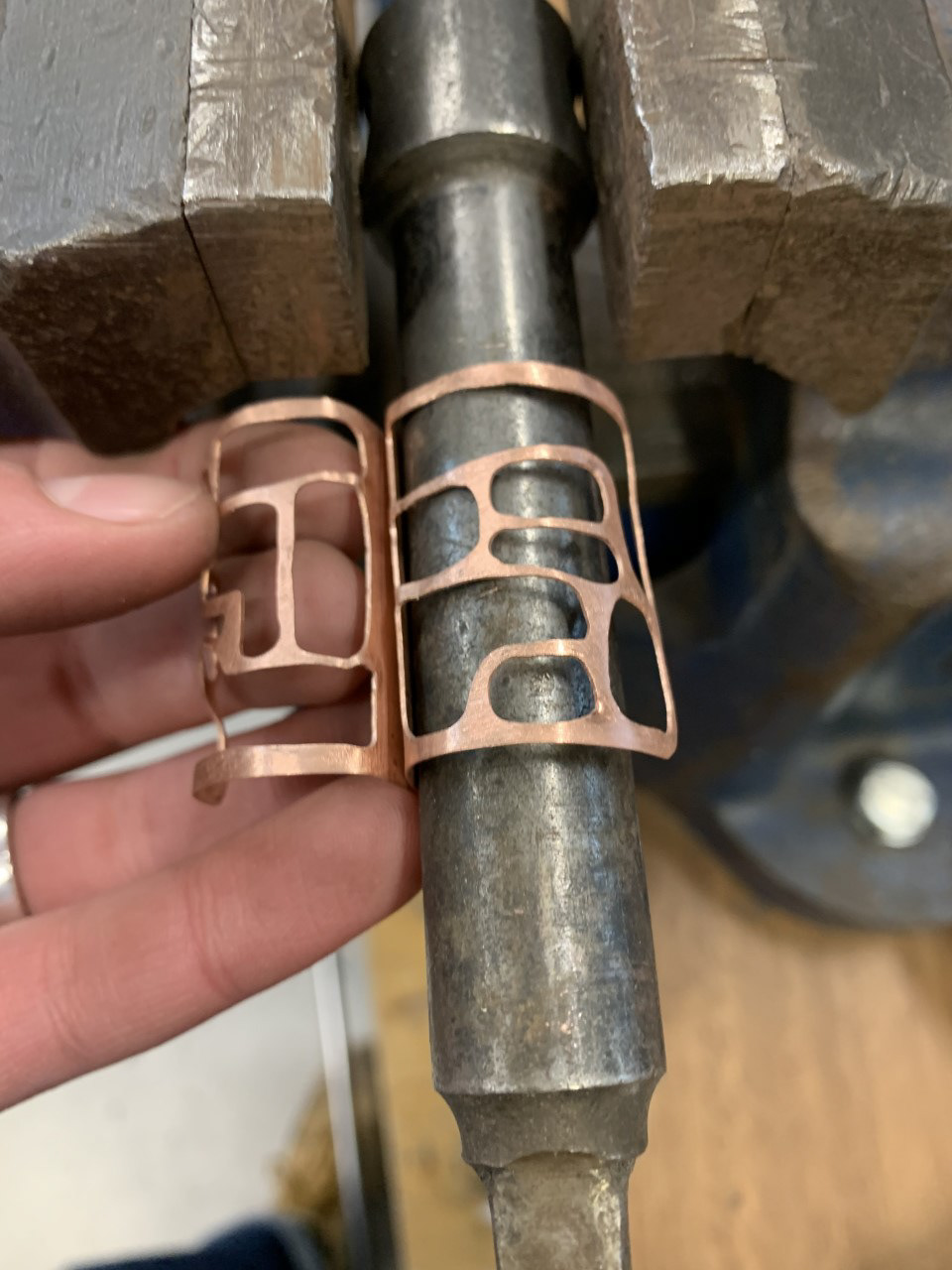
this ring is meant to sit in-between the fingers wrapping around two fingers, inspired by the artist mizuko yamada and Gijs Bakker, looking into mizuko yamada, who is inspired by the natural form and the metal that she uses, she was one of my inspiration's as her jewellery works around the body. I was also inspired by Gijs Bakker as his work looks into impressions of the body leaving its marks behind, intending to use copper and looking into its properties, copper when worn and oxides turns green, with my ring I would hope this would leave the bark pattern imprinted on the wearer across the two fingers. therefore once the ring is removed it will still leave an impression on the wearer.

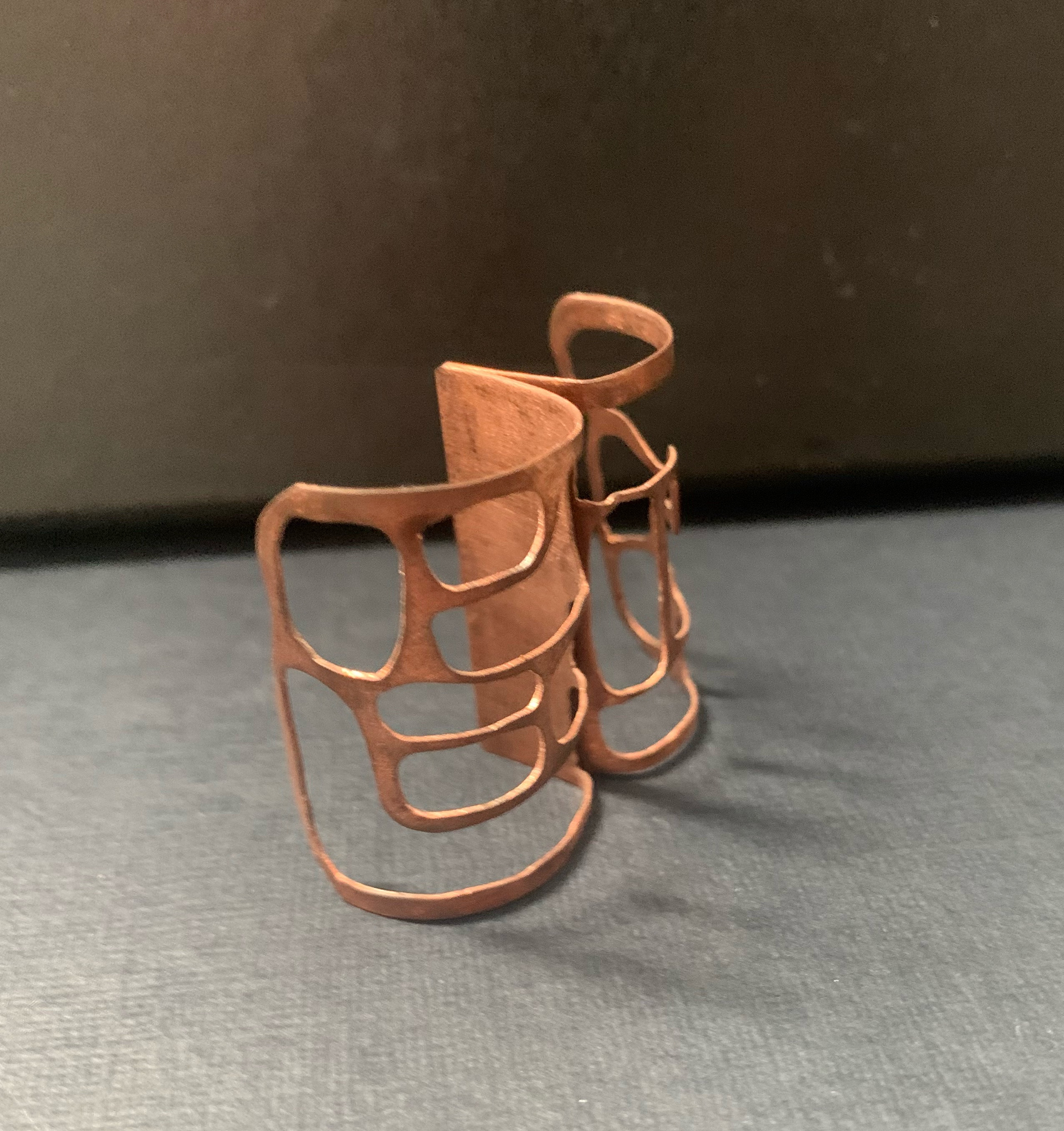
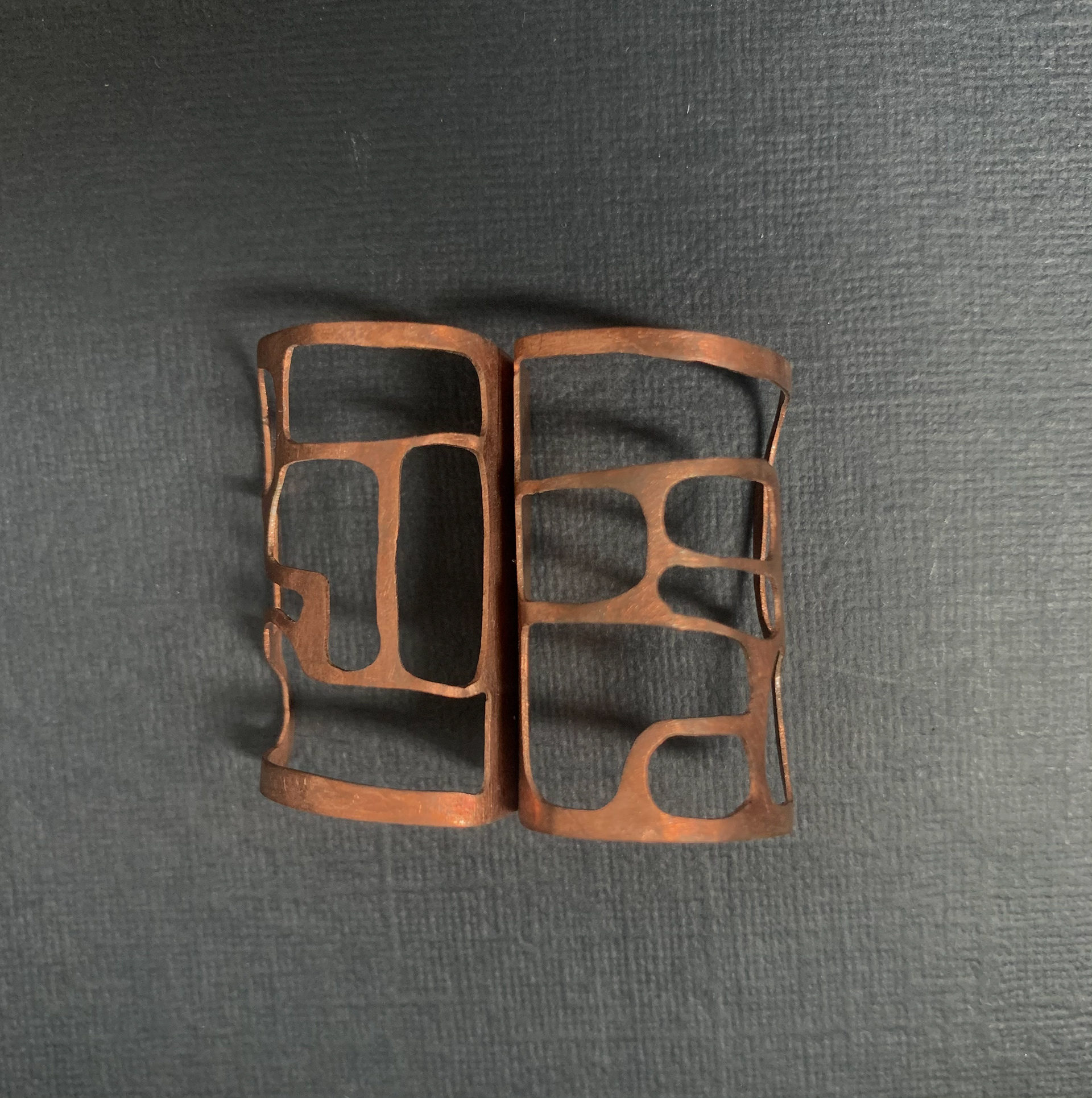
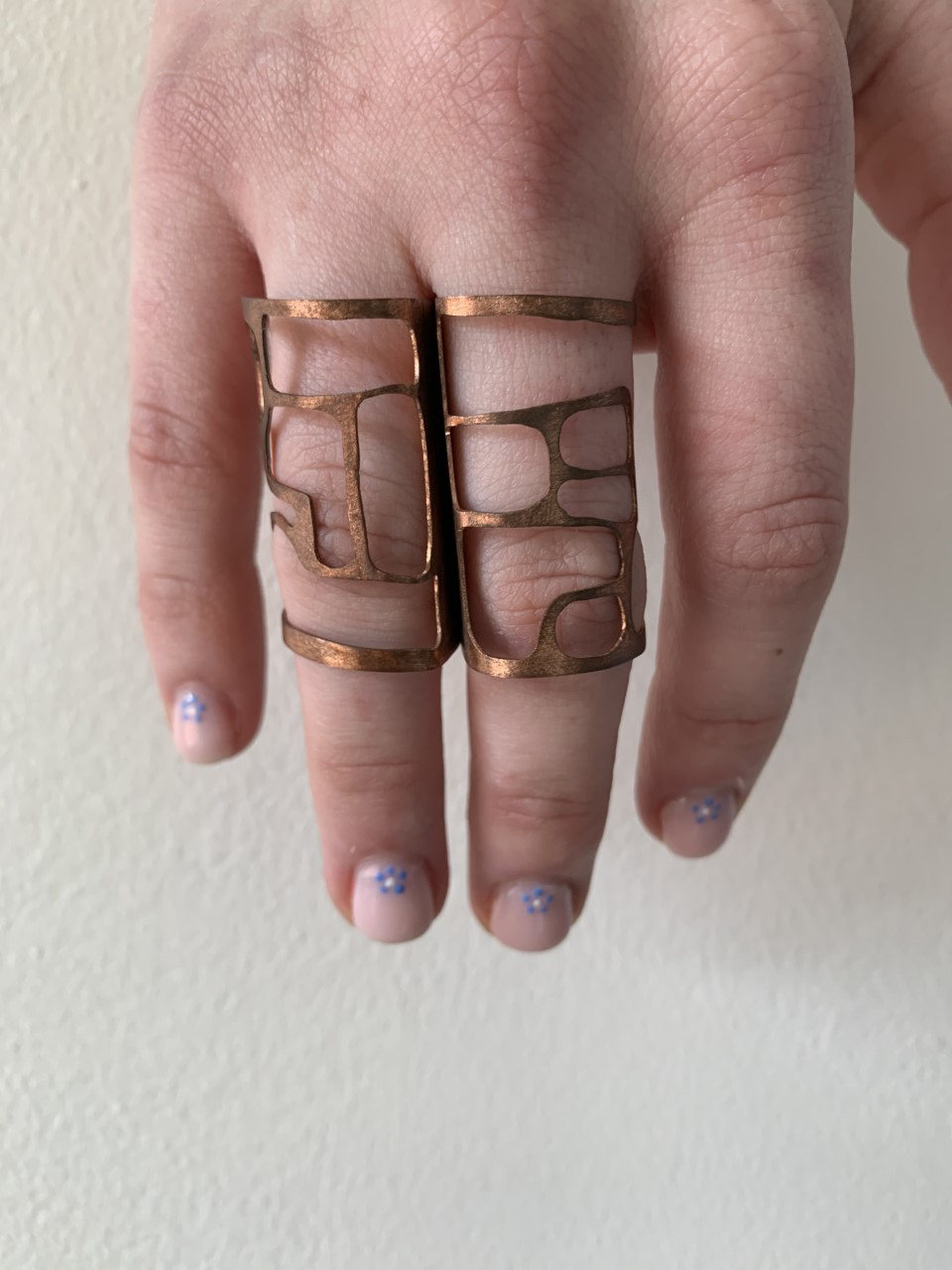

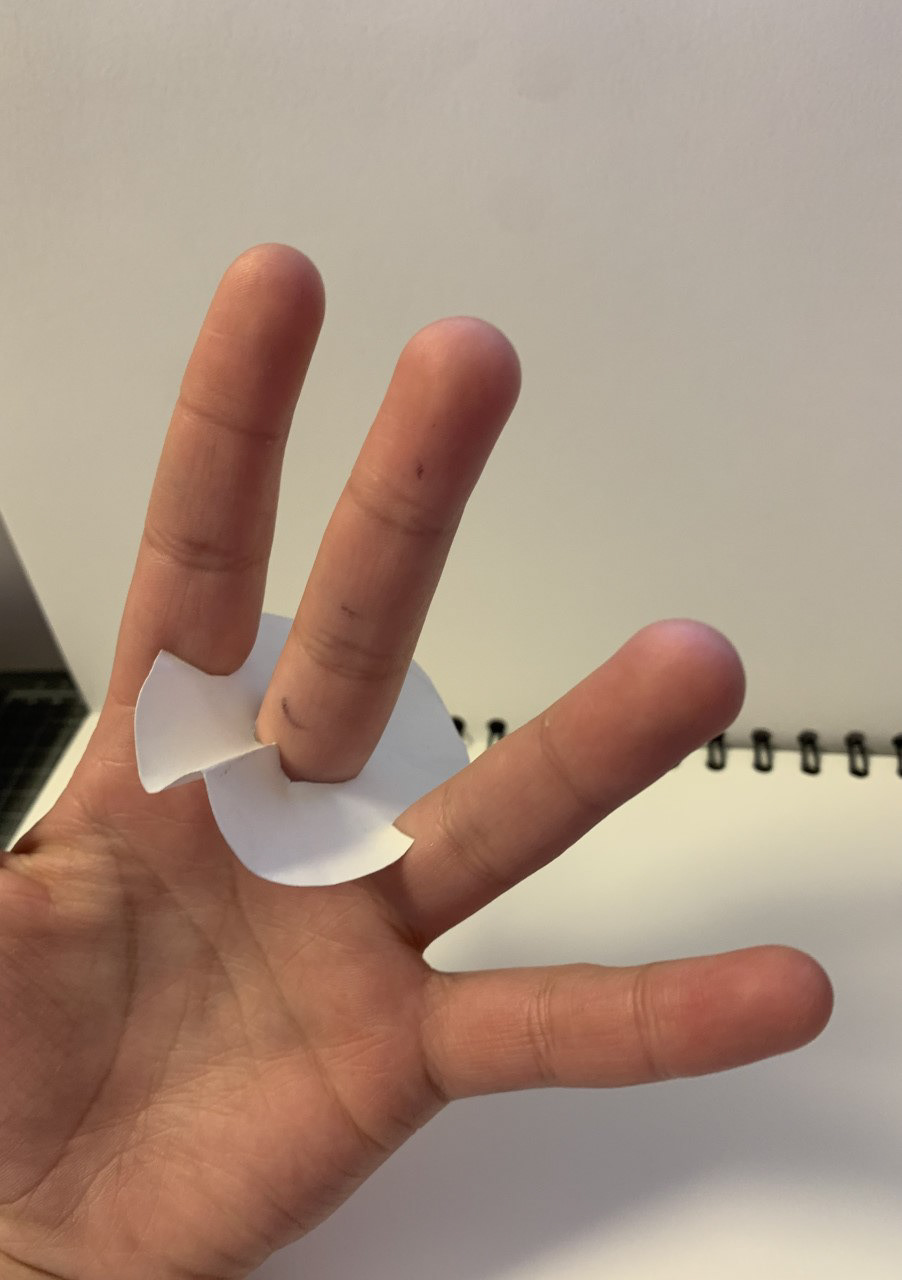
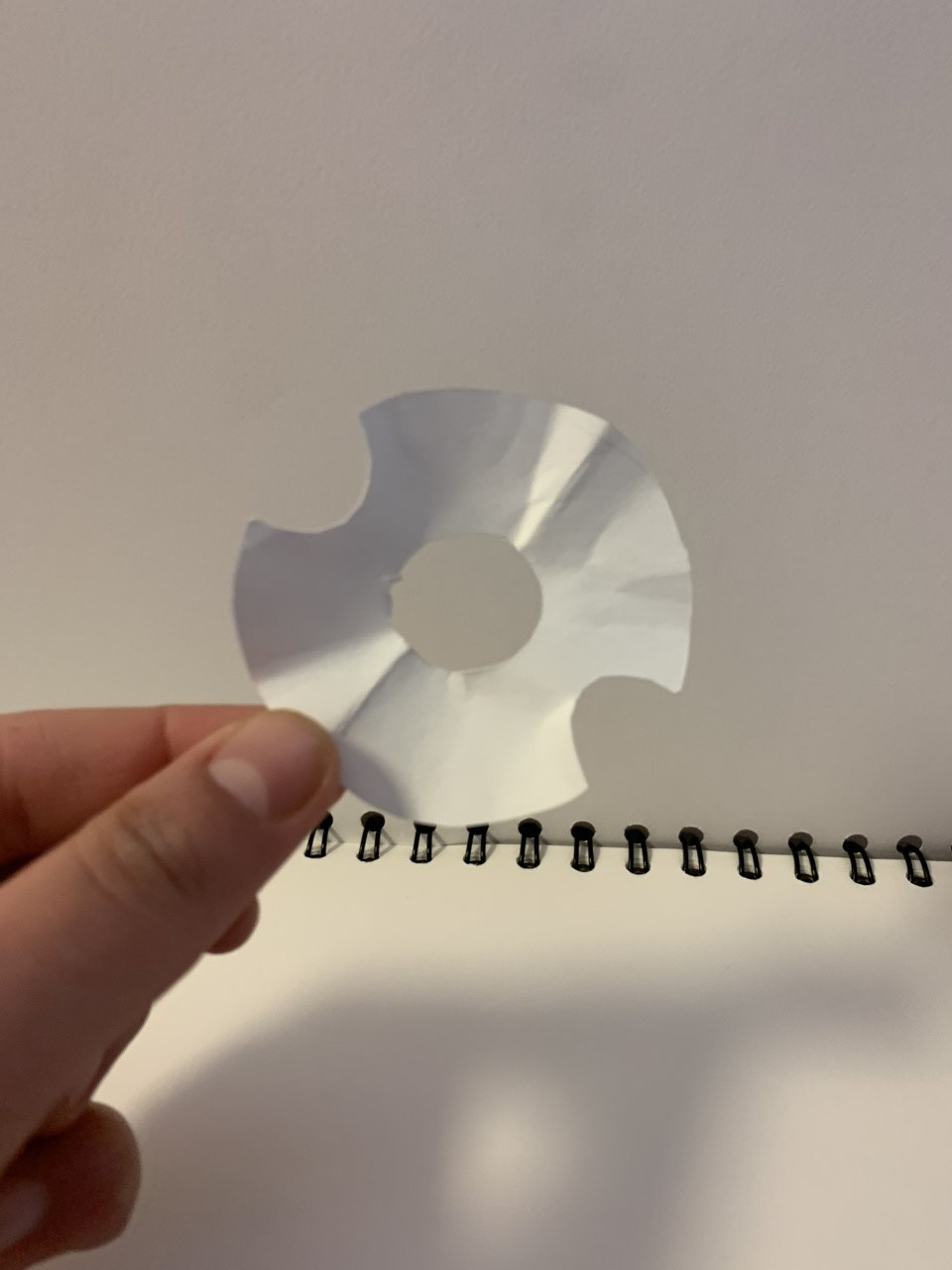
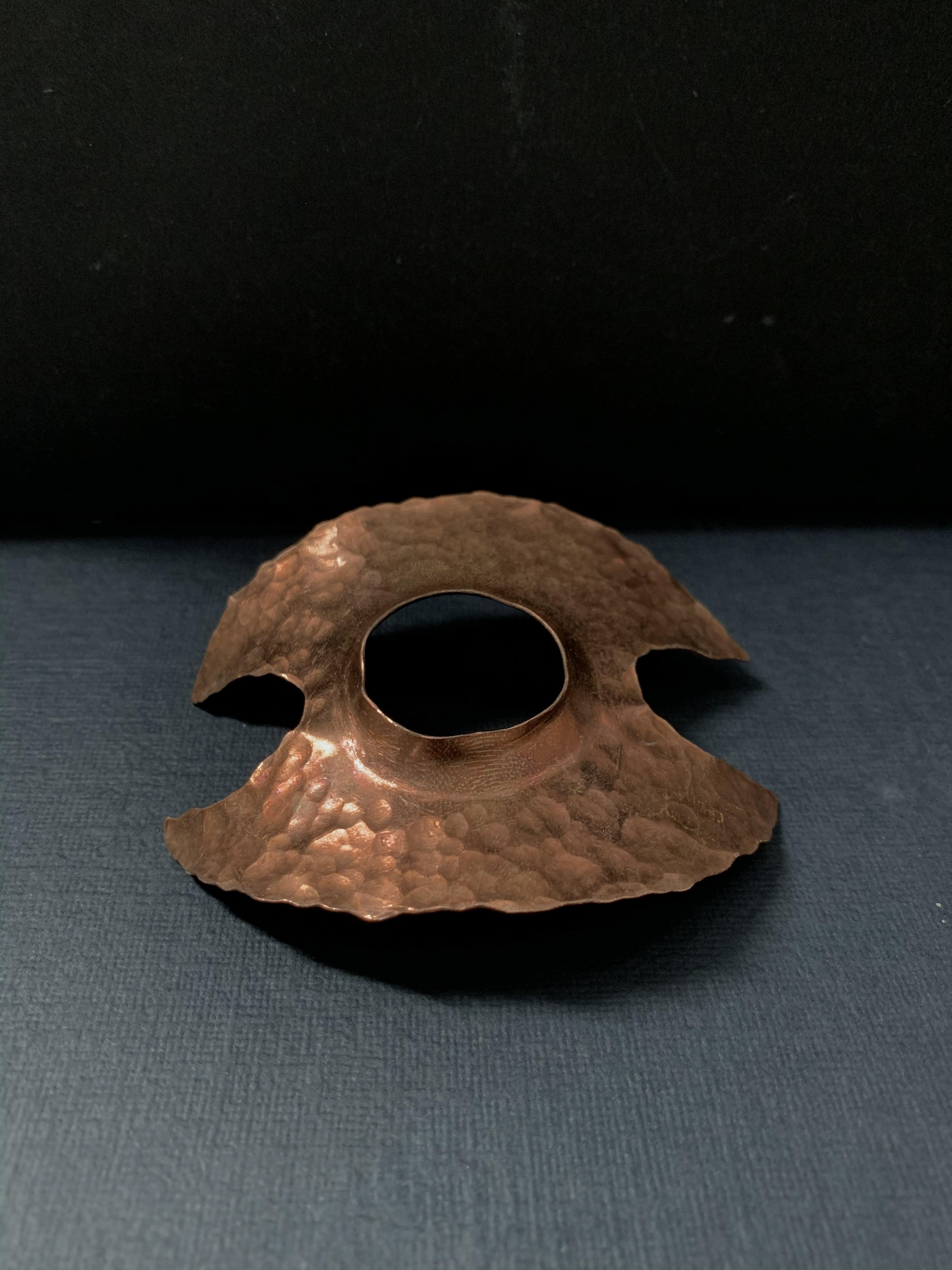
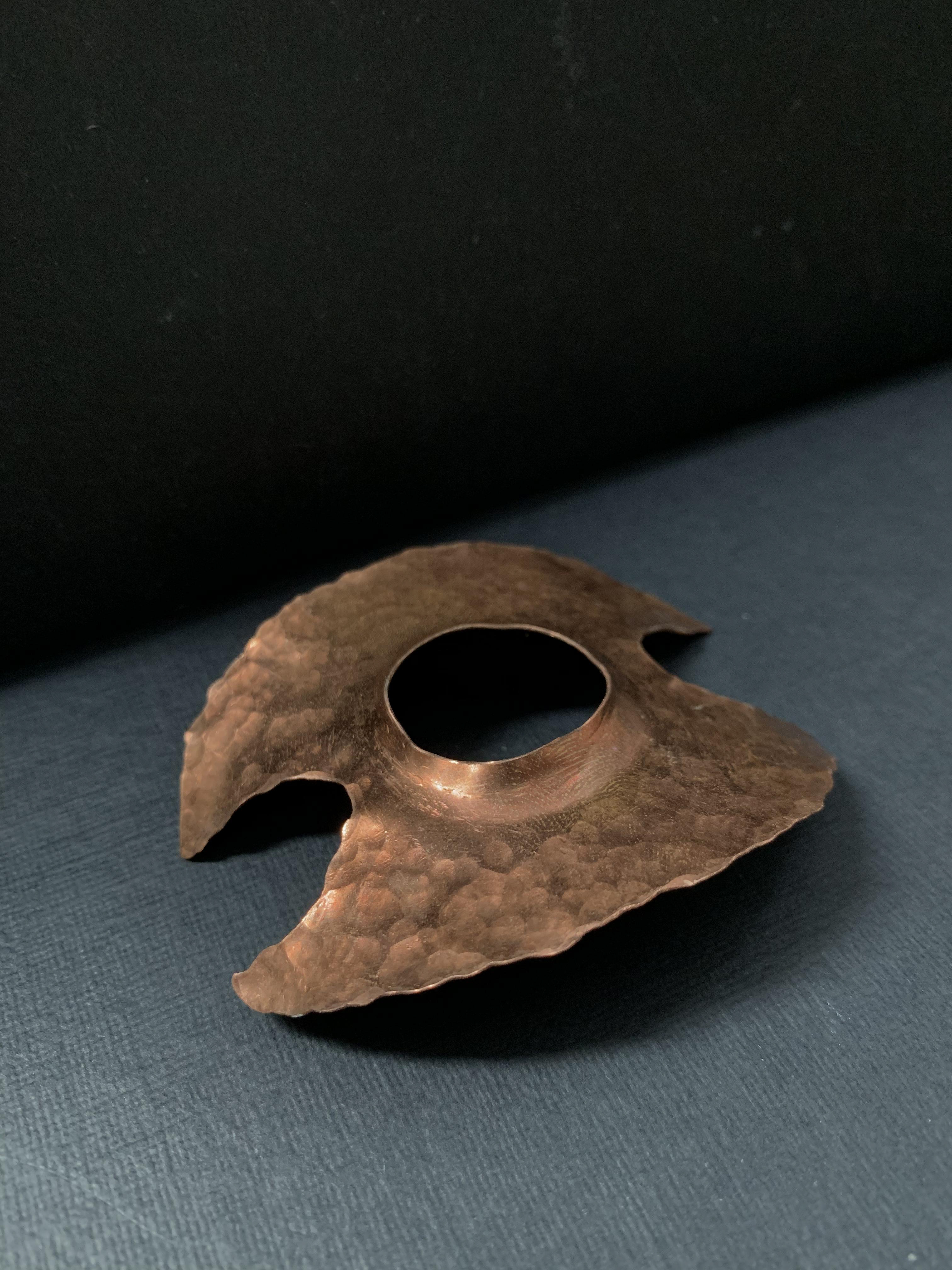
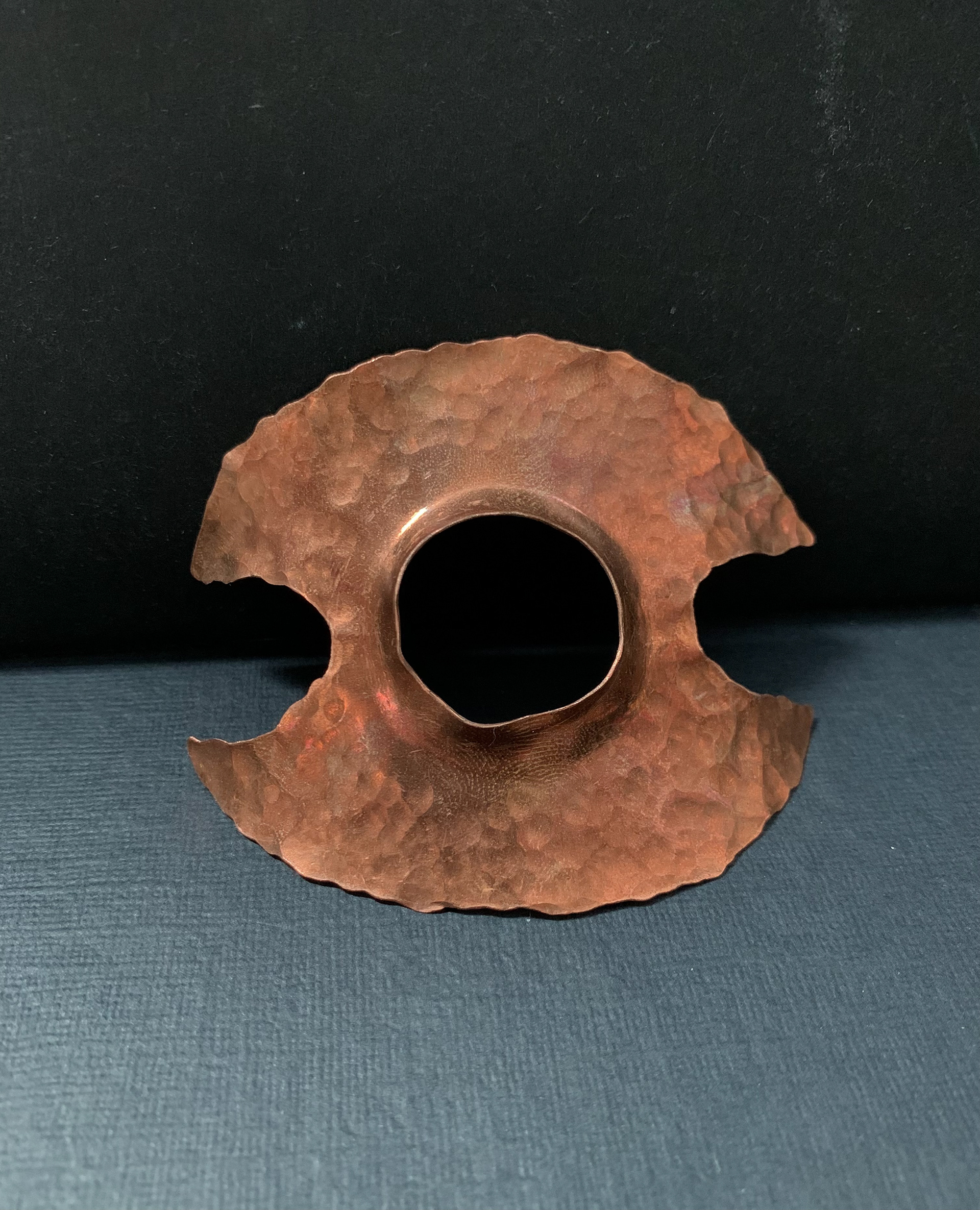
this ring that I created works around three fingers, intended to influence the hands into unnatural positions, alike Jennifer crupis work who looks into the communication of body language, this ring similarly was created for the wearer to have a certain gestor. being worn on the middle finger it then holds your index and ring finger, making them be separate spreading the span of your hands. I created a hammer texture all around the ring as well this is inspired from the photos I took of natural textures that surround us. looking into the body and natural textures there is a very close link between them which I like to demonstrate in my work.
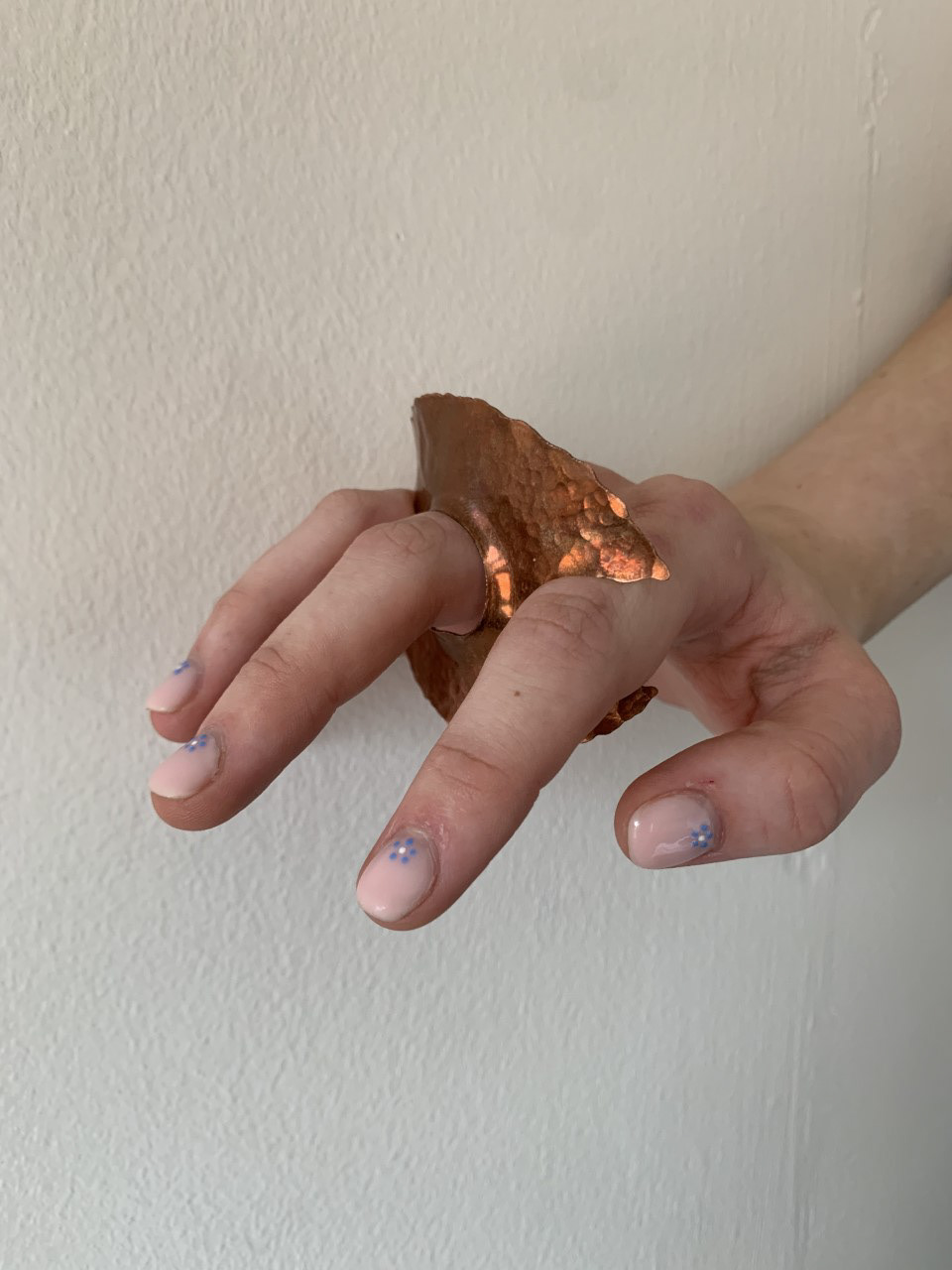

i experimented trying with a different material, using aluminium sheet to see if it had the same effect following the brief of same but different
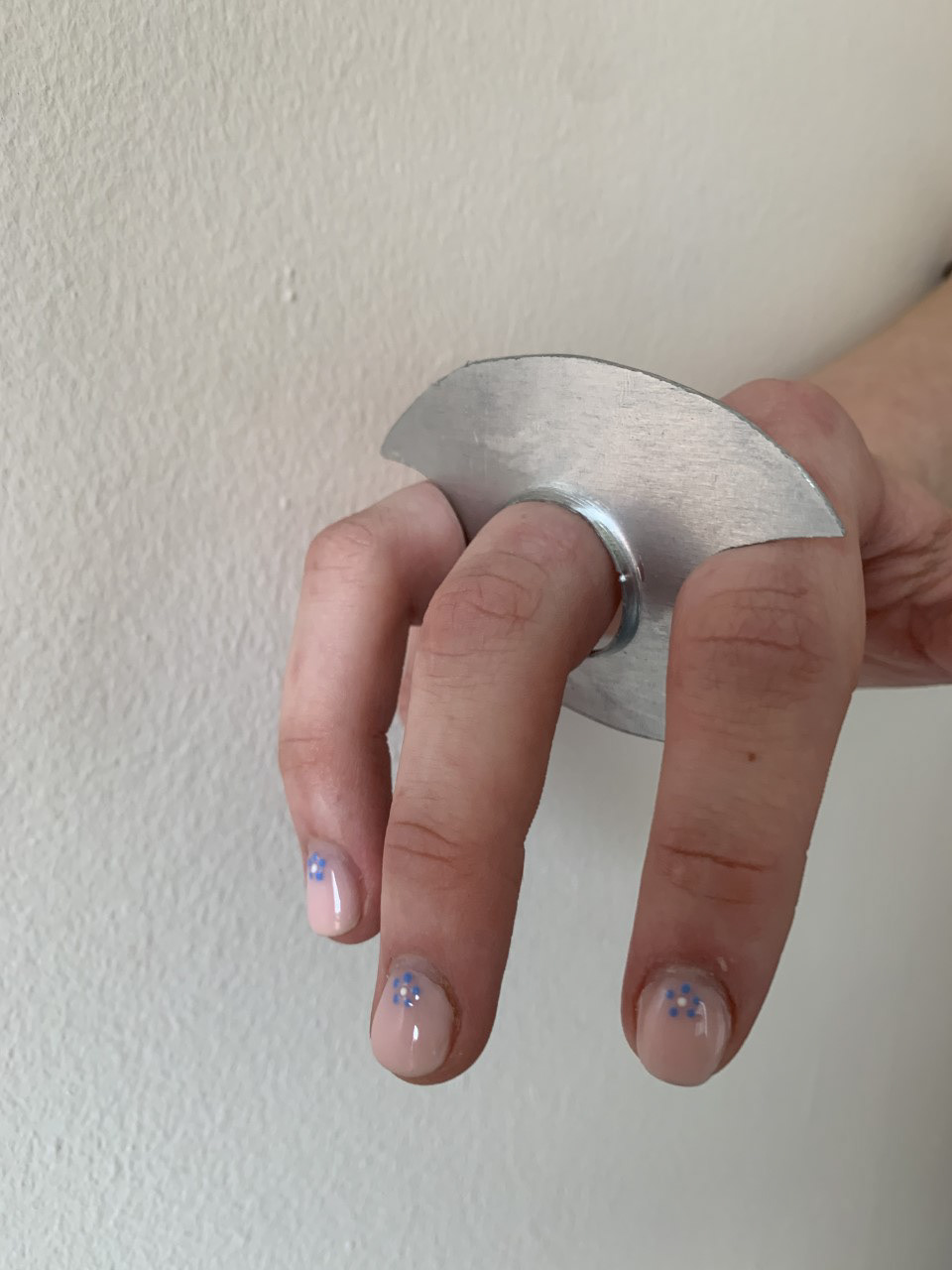
following the theme of same but different, having the hands as my main focus and working around the idea. looking into the hands movement, natural and unconfutable looking at create sample pieces that work around the hand rather than athletically decorating the hands as like traditional jewellery and rings.
Yorkshire sculpture park
on visiting the Yorkshire sculpture park we were given the task of drawing three different sculptors. our first task was drawing the same sculptor in 5 different medias, for this i drew henry Moore's large two forms, i used pencil, felt tip, biro pen, coloured pencil and an oil pastel. our next task was drawing the same object at different angles, using Damien Hirst the virgin mother sculptor, that stands at 10ft drawing her at 5 different angles. for the last task we had to draw the same object using three different styles, i drew henry Moore's reclining figure arched leg, as i liked the form it gave. drawing this using a one continuous line, only straight lines and only using swirls.
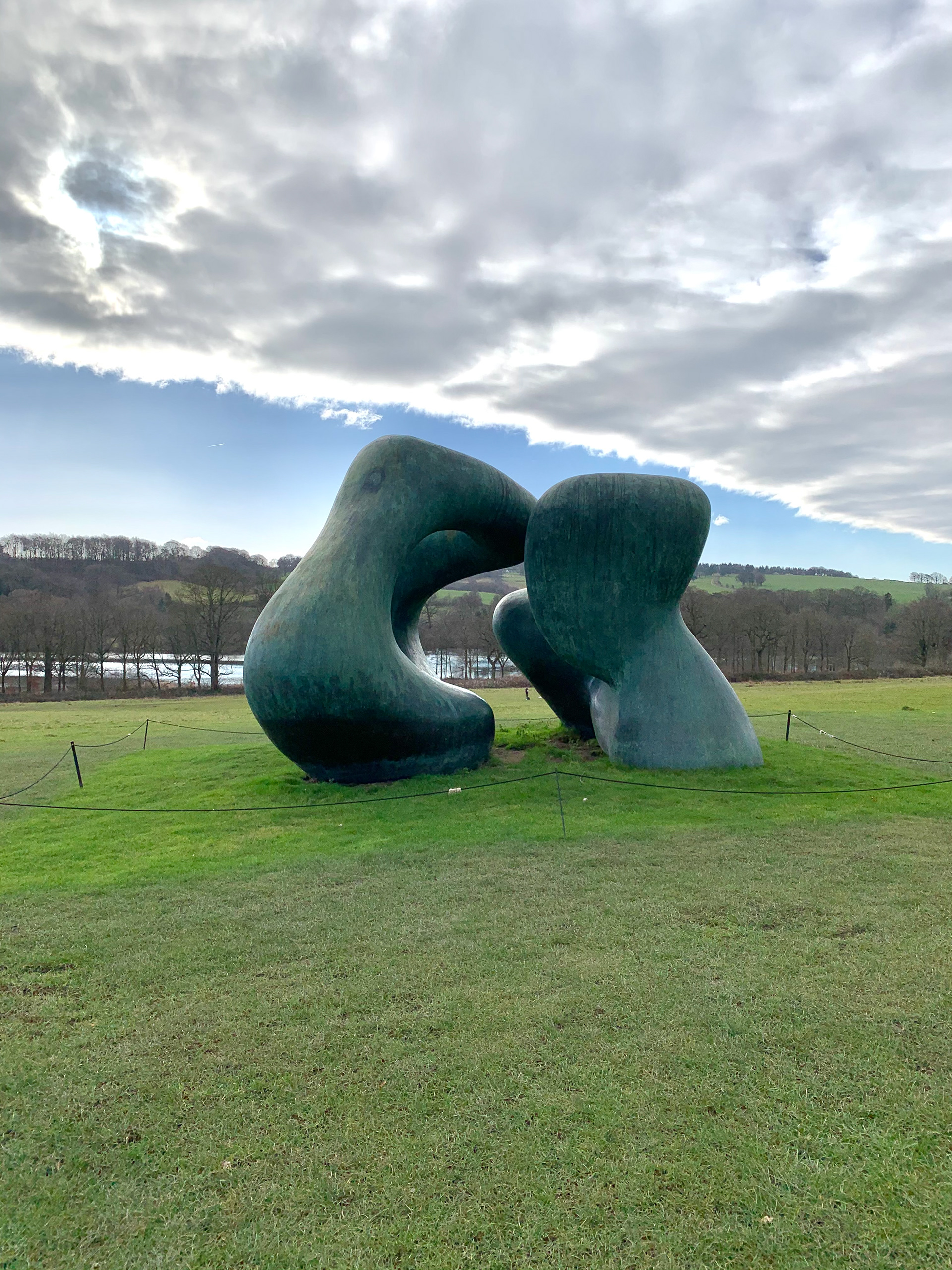
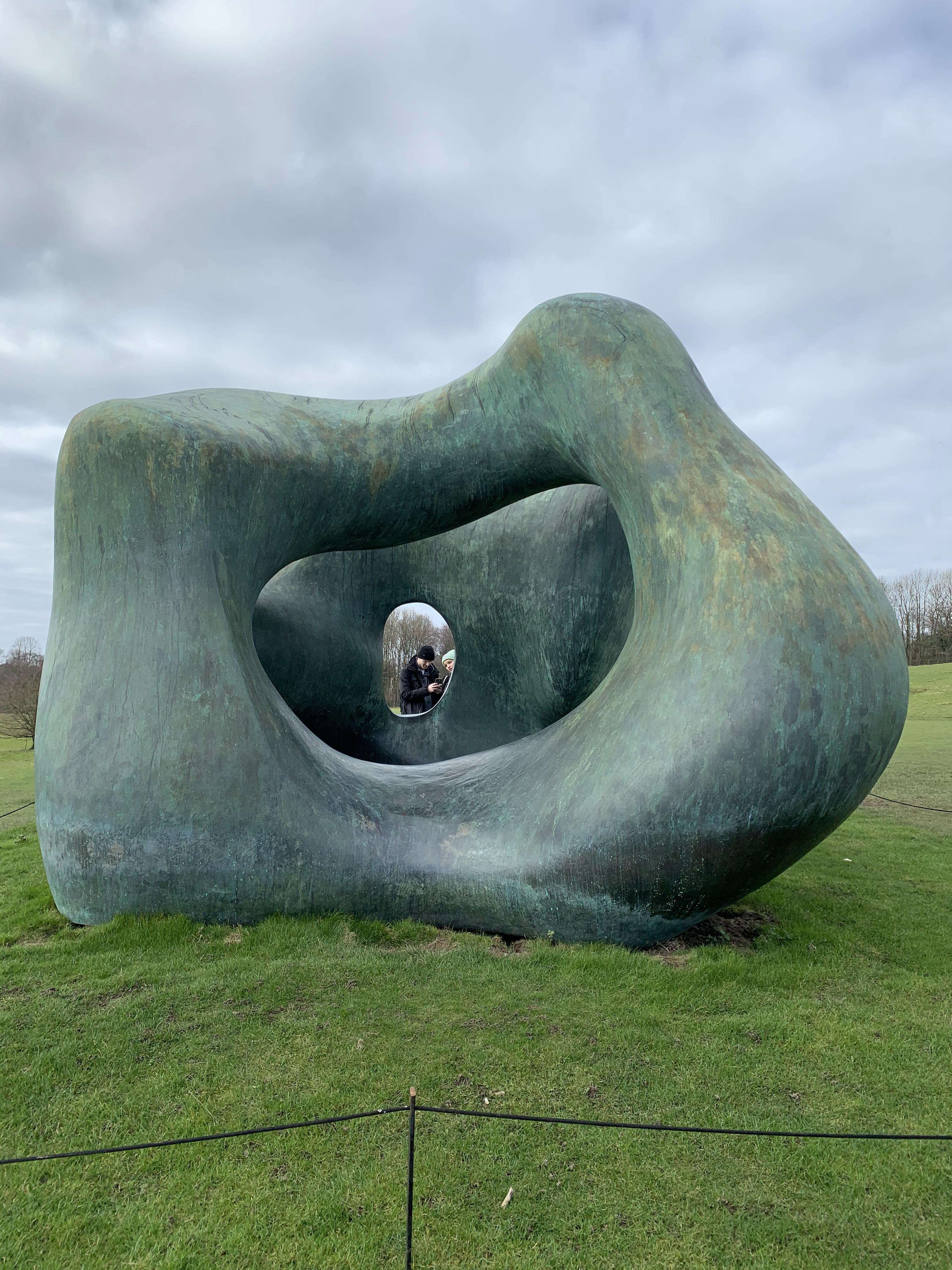

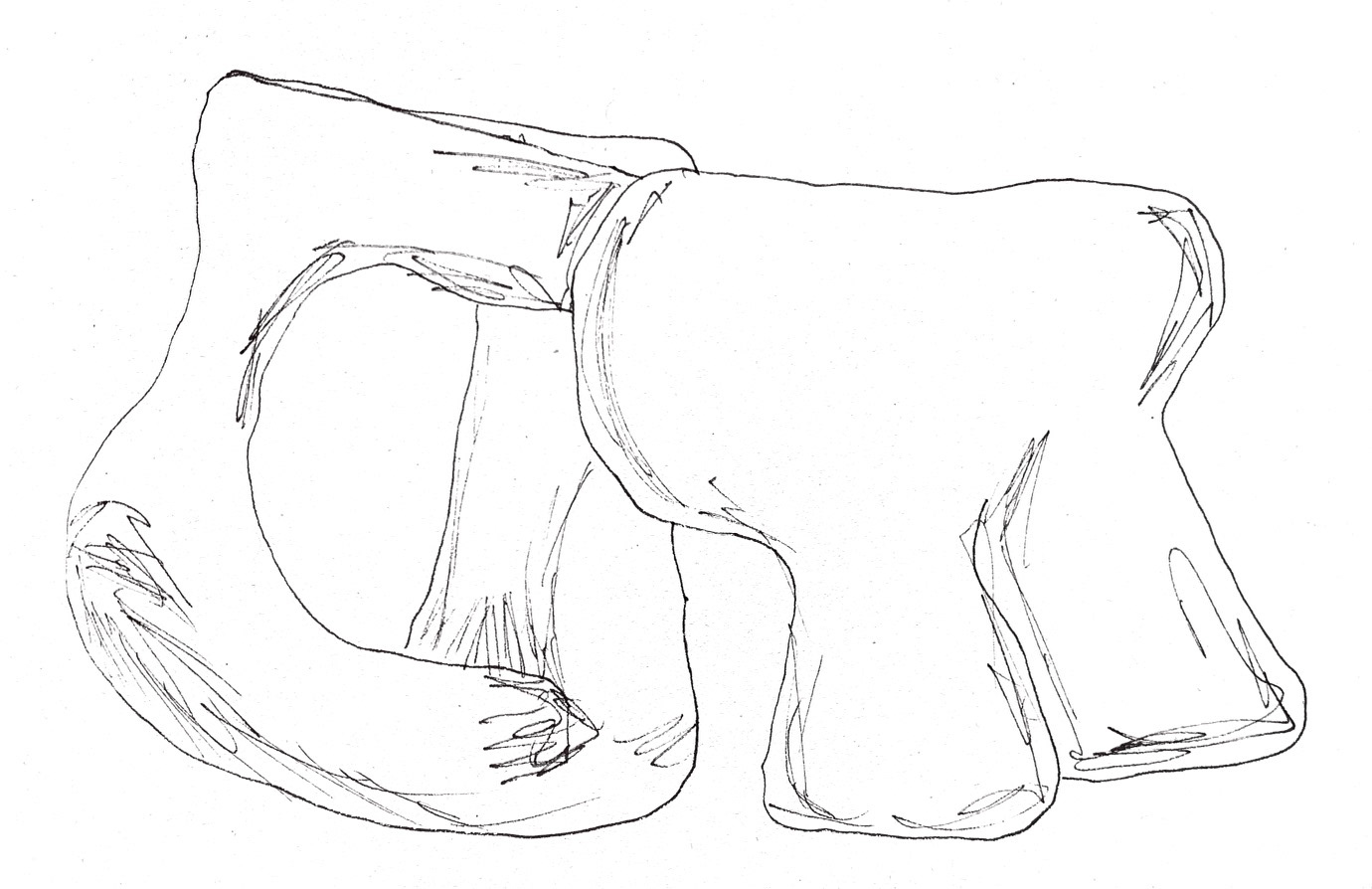
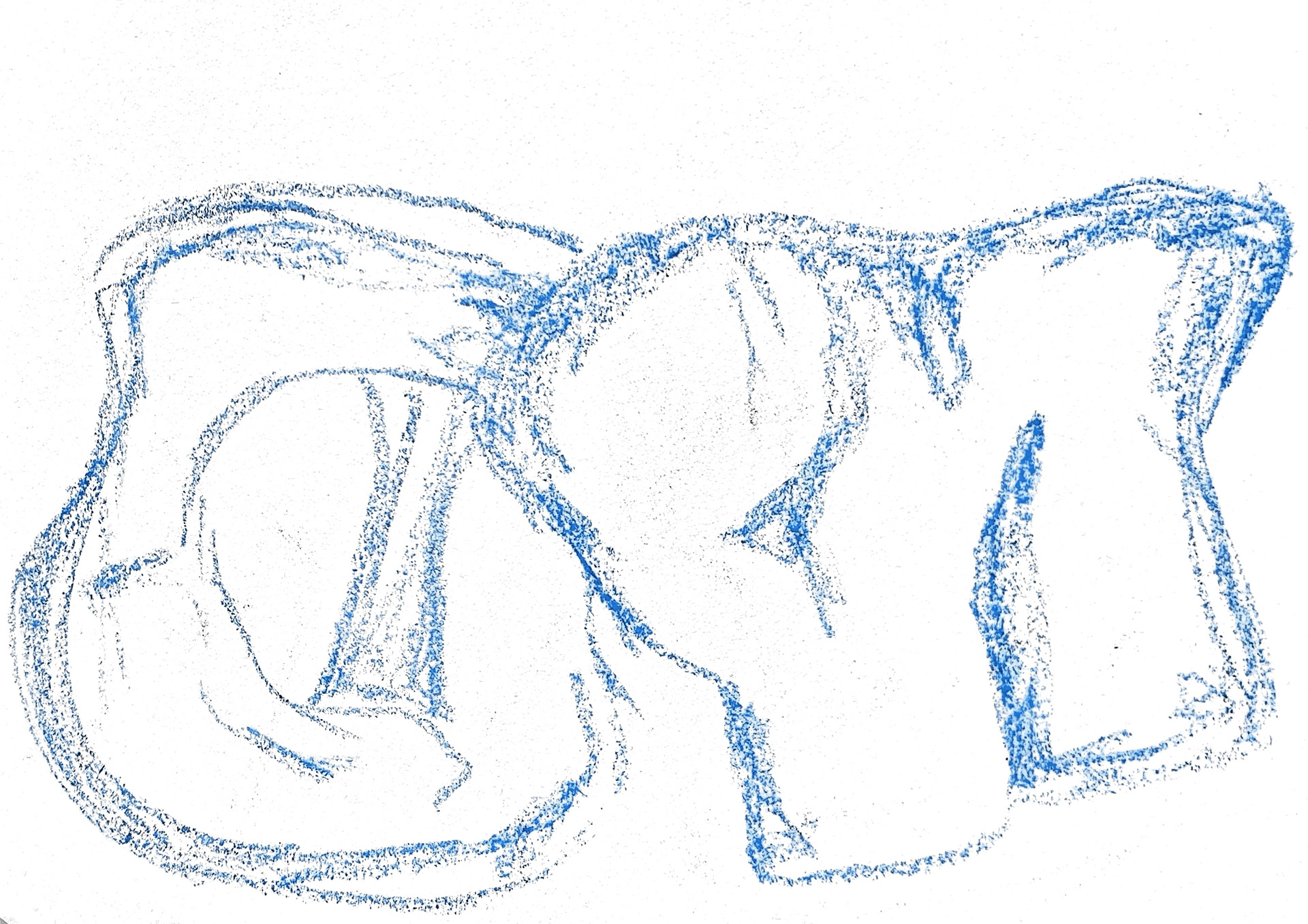
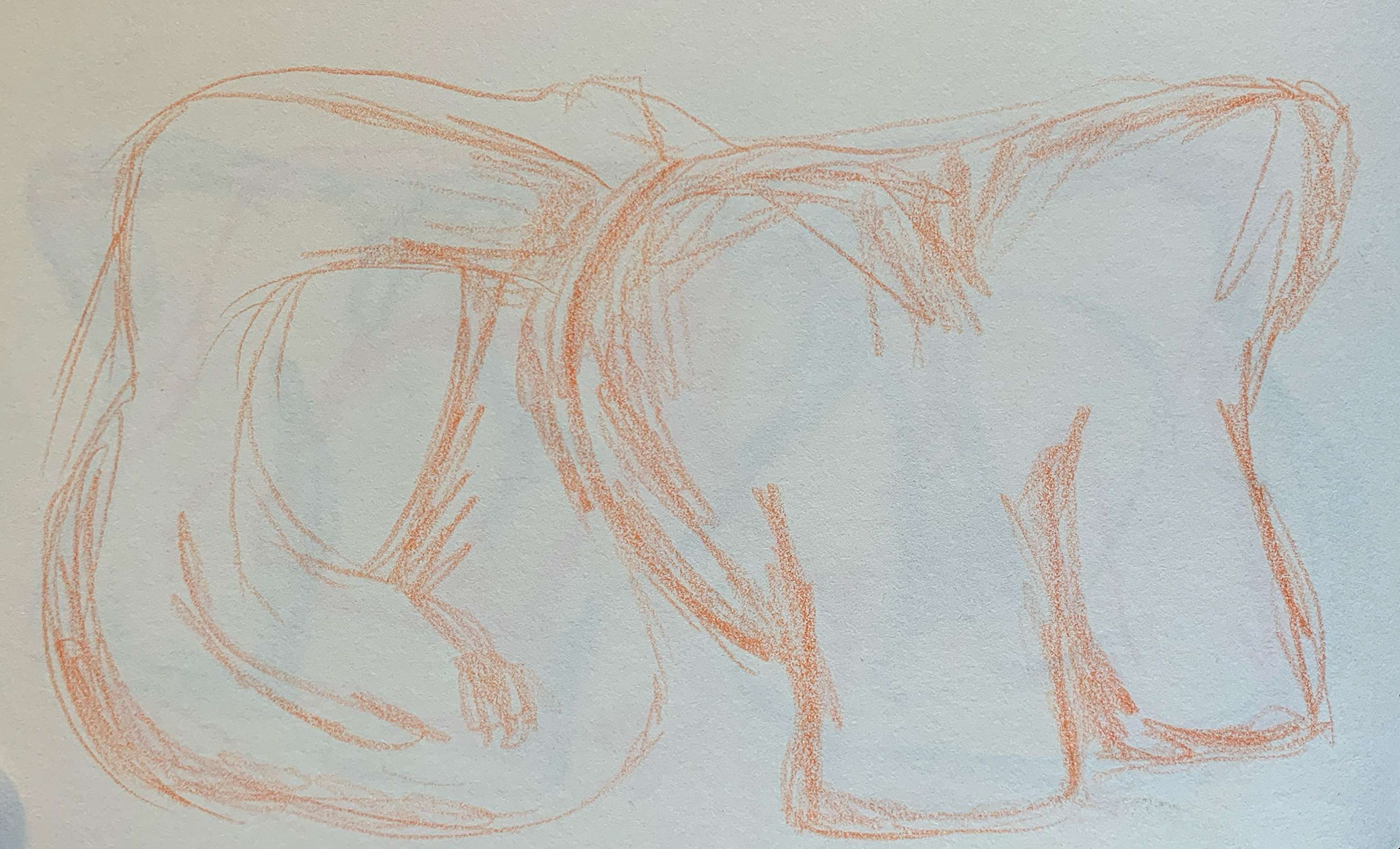
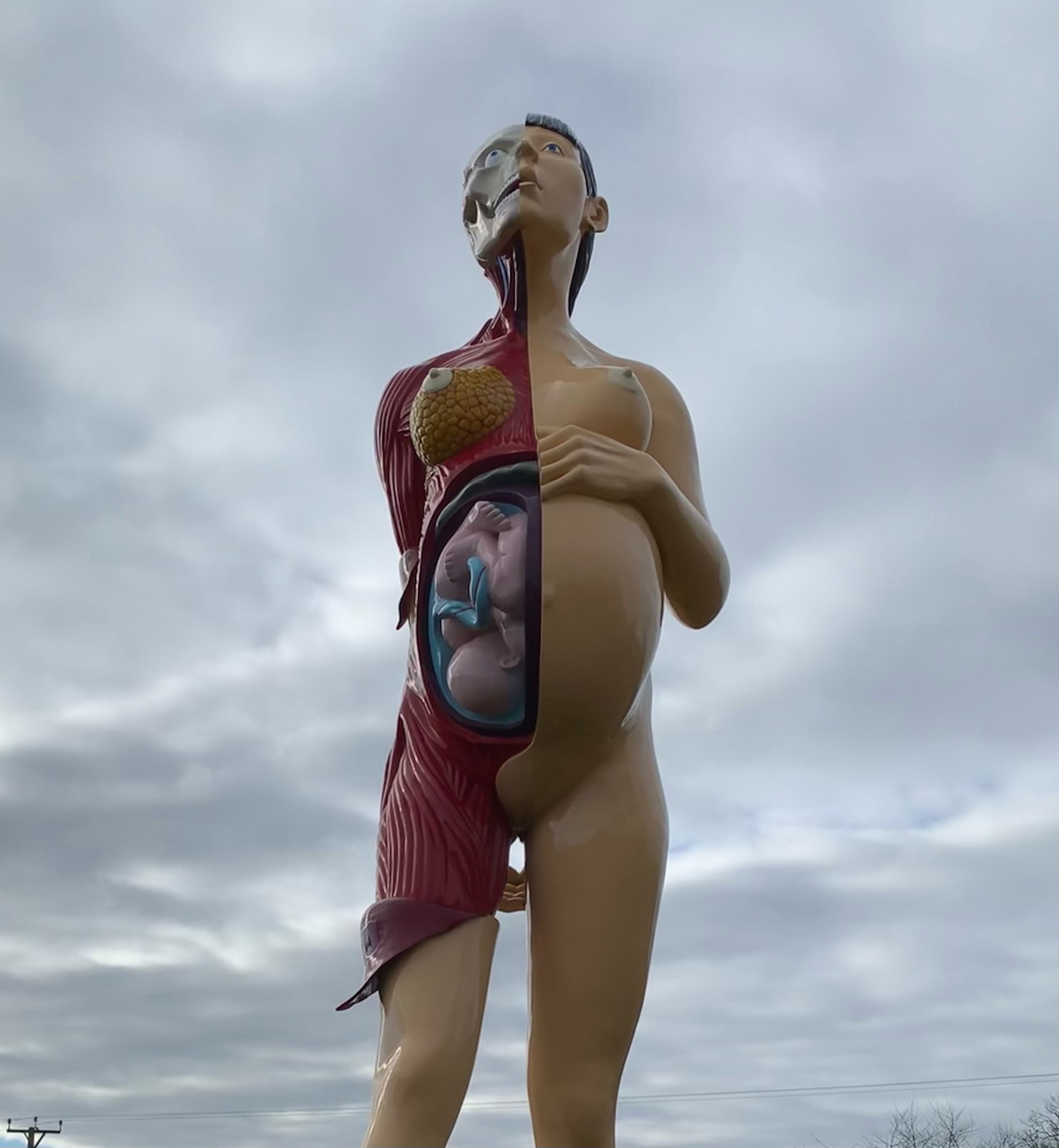
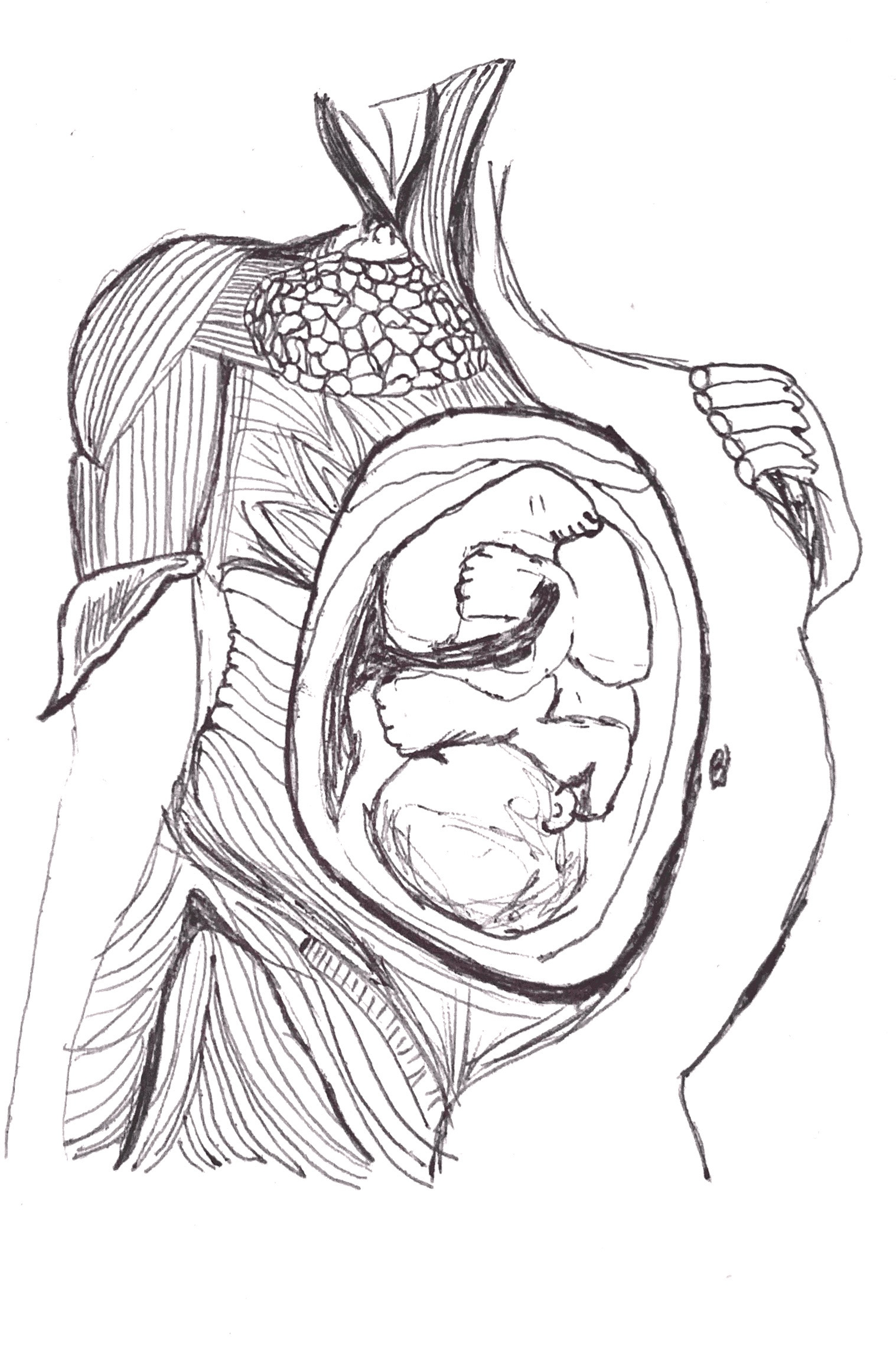



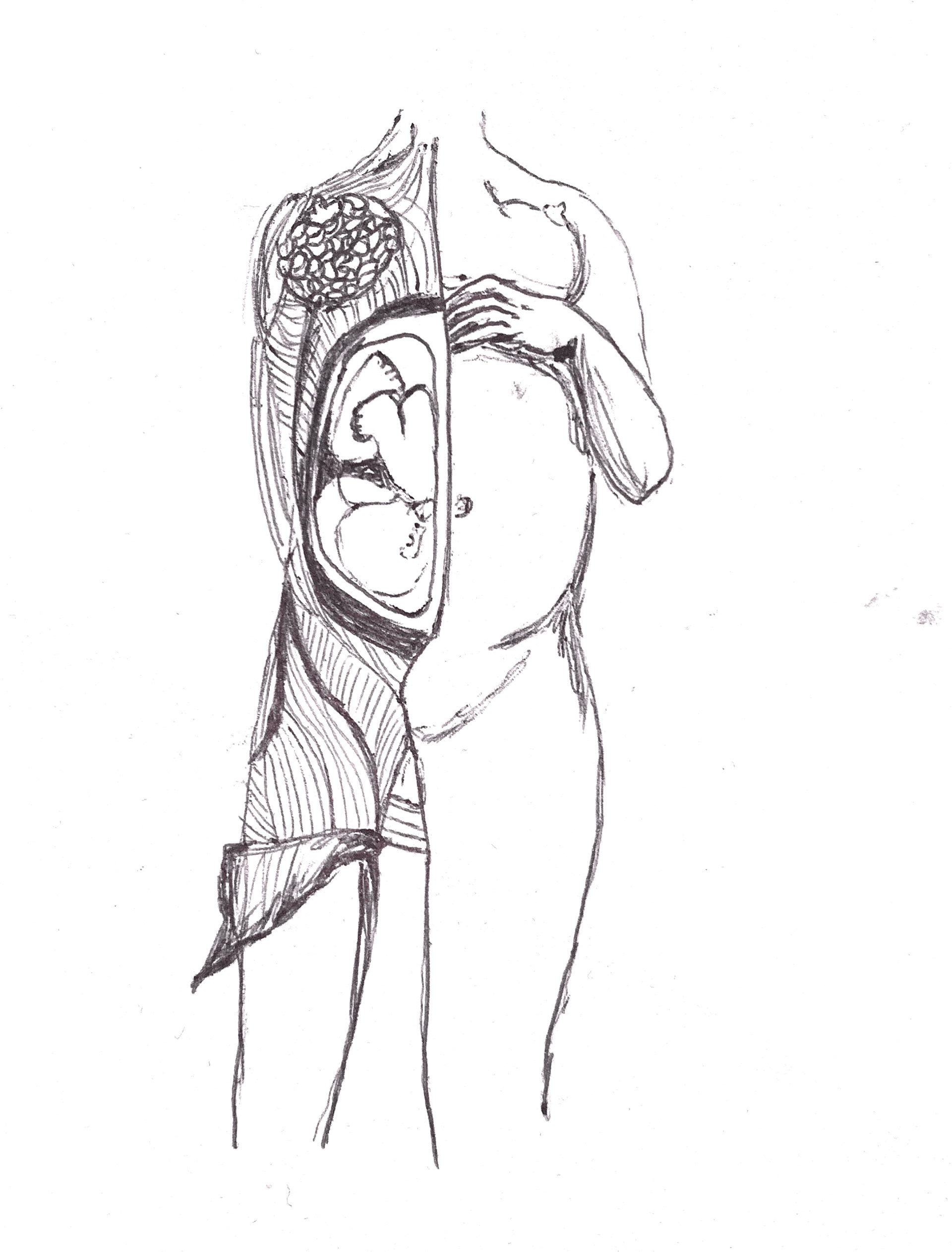
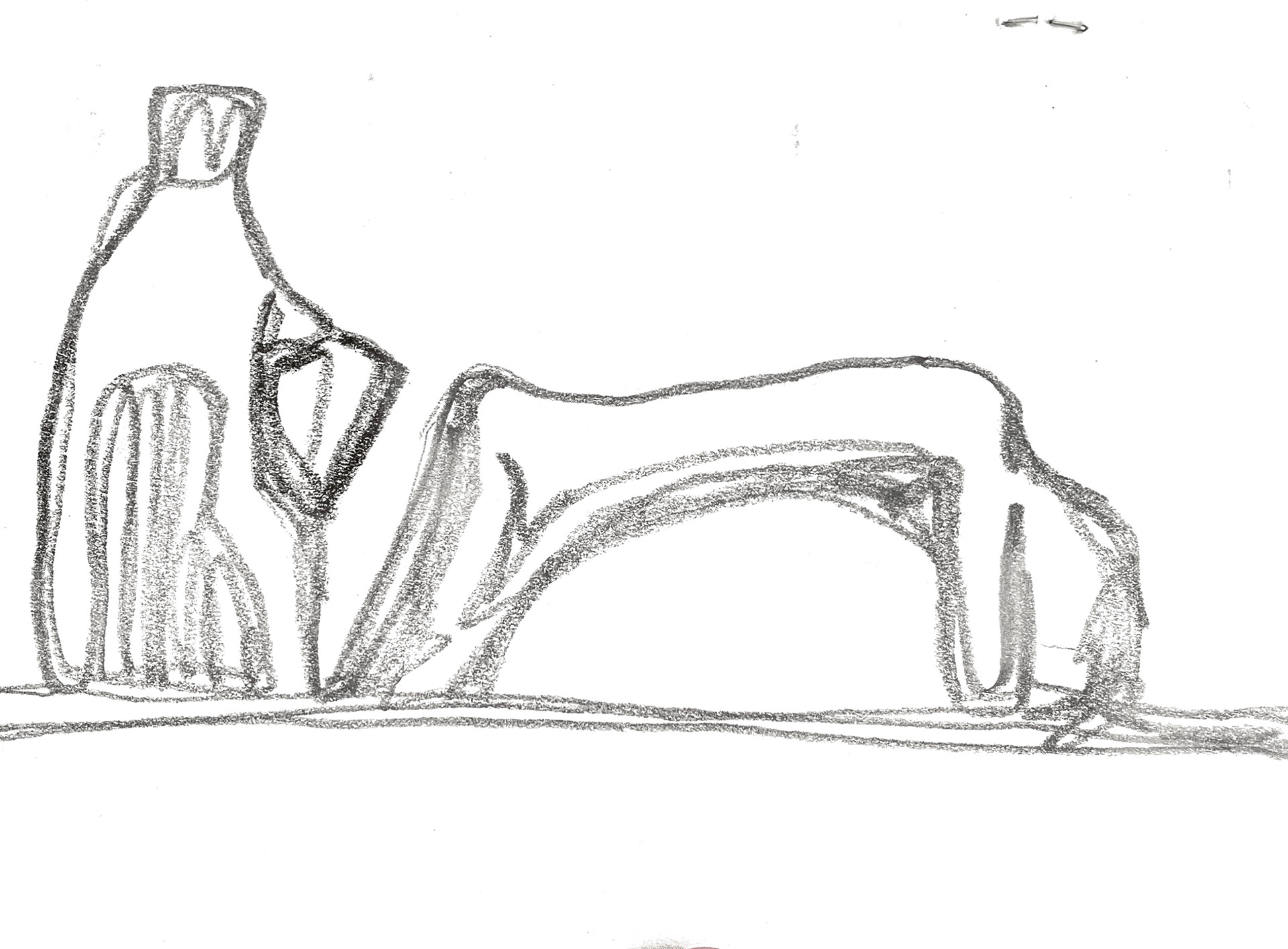
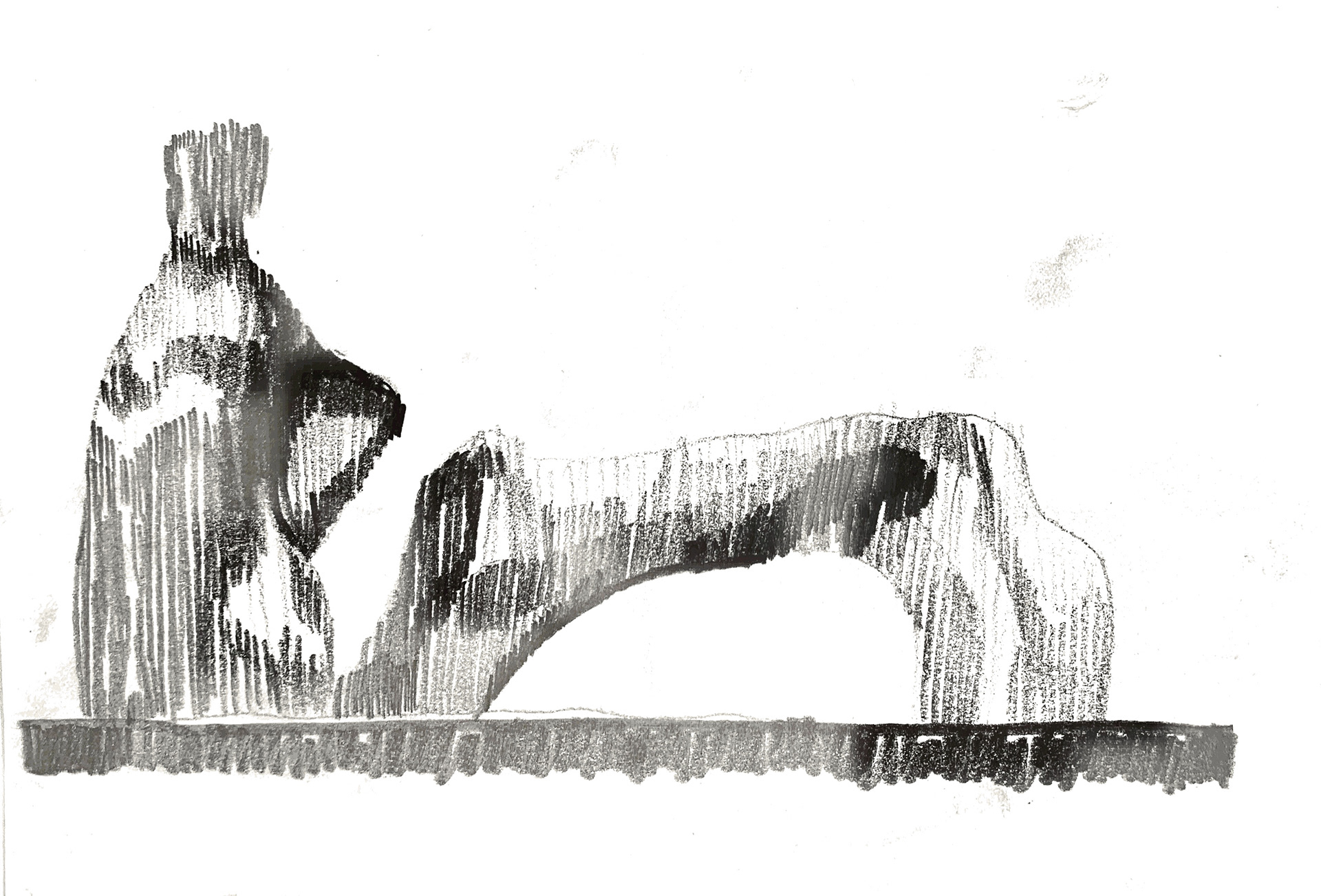
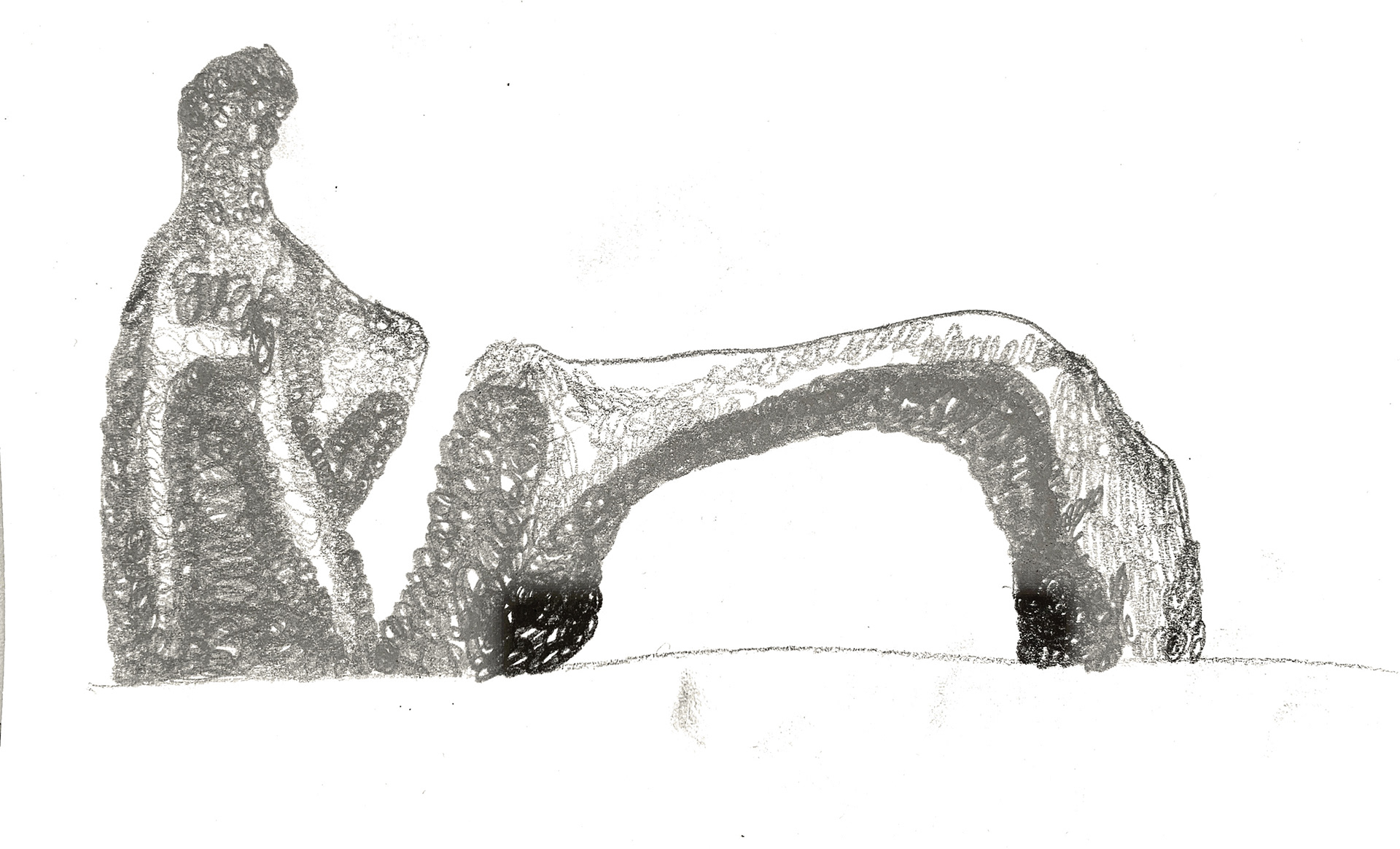
For this project I did a lot of research into a range of artists, some looking into their techniques they use, some for the exploration of contemporary jewellery and some I was inspired by the materials and concept of their work. Looking into stone setting I found the artist Karl Fritsch and Irene Wolf who both use stone setting techniques to create their work, I looked into both these artist as they both have very varied approaches and outcomes to the technique which helped me with my understanding of the process. Looking into contemporary artist I looked into artist Jennifer Crupi and Mizuko Yamada both contempered artist who look into the body and create work focusing on body language and our five senses. Both these artists inspired me to develop my ideas to think about the impact and focus I want my jewellery to have and create on the audience. With all the artist I researched they really helped me inform and develop my ideas, allowing me to explore and widen my ideas and processes.